More Photo Galleries
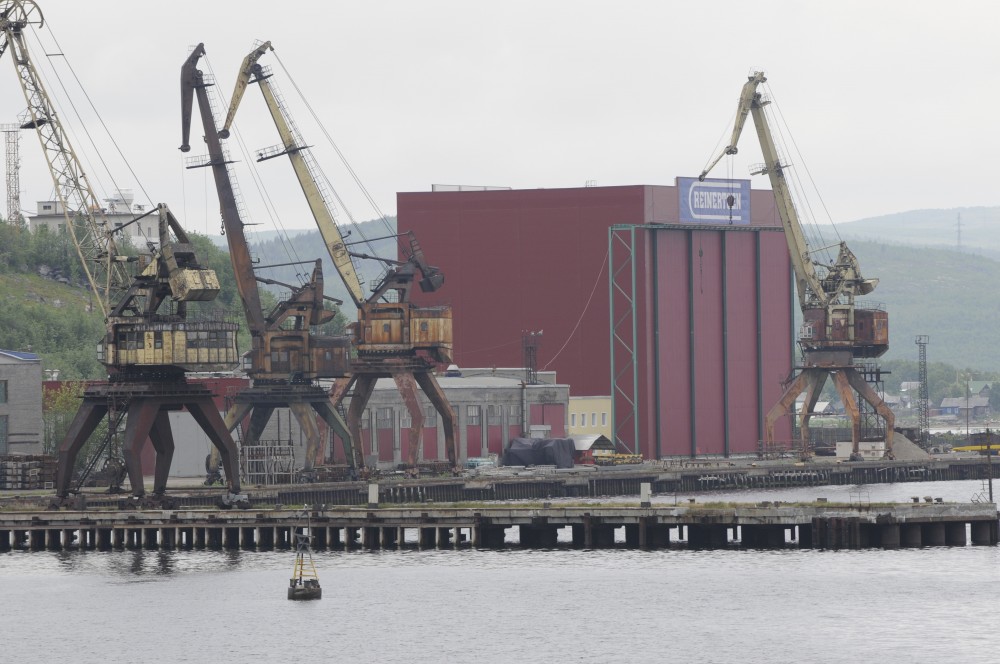 Reinertsen facilities with workshops and port is located on the west side of the Kola Bay in Murmansk. Photo: Thomas Nilsen
Reinertsen facilities with workshops and port is located on the west side of the Kola Bay in Murmansk. Photo: Thomas Nilsen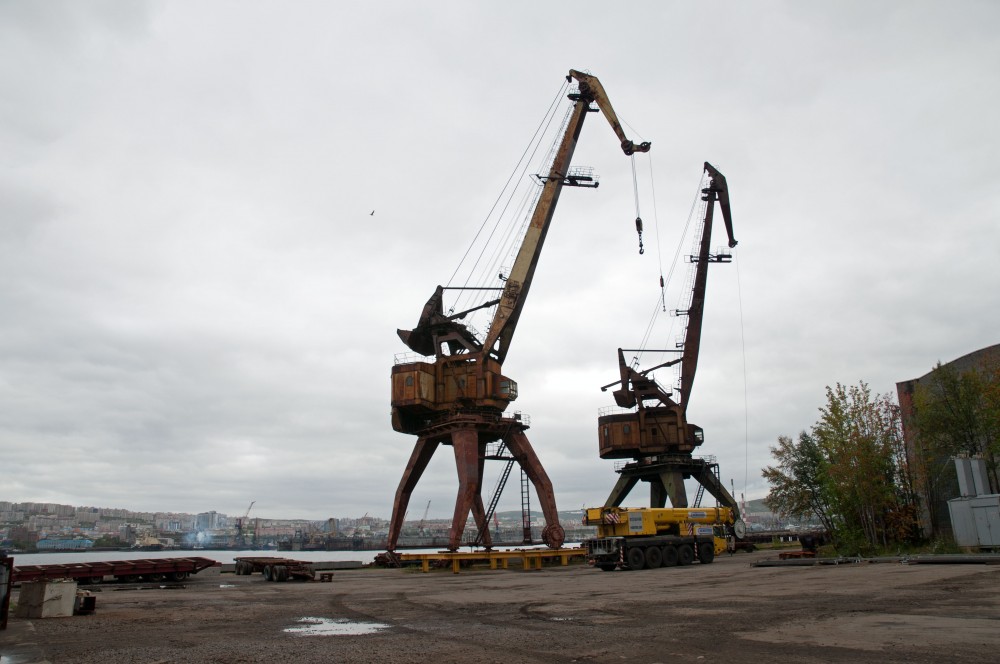 Reinertsen port in Murmansk. Photo: Thomas Nilsen
Reinertsen port in Murmansk. Photo: Thomas Nilsen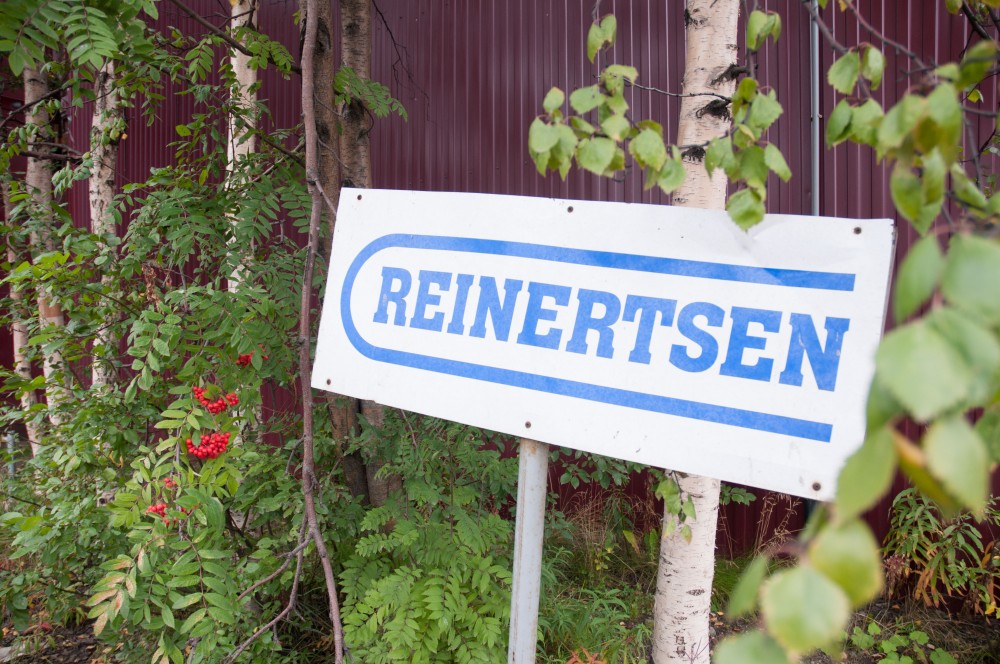 Reinertsen in Murmansk. Photo: Thomas Nilsen
Reinertsen in Murmansk. Photo: Thomas Nilsen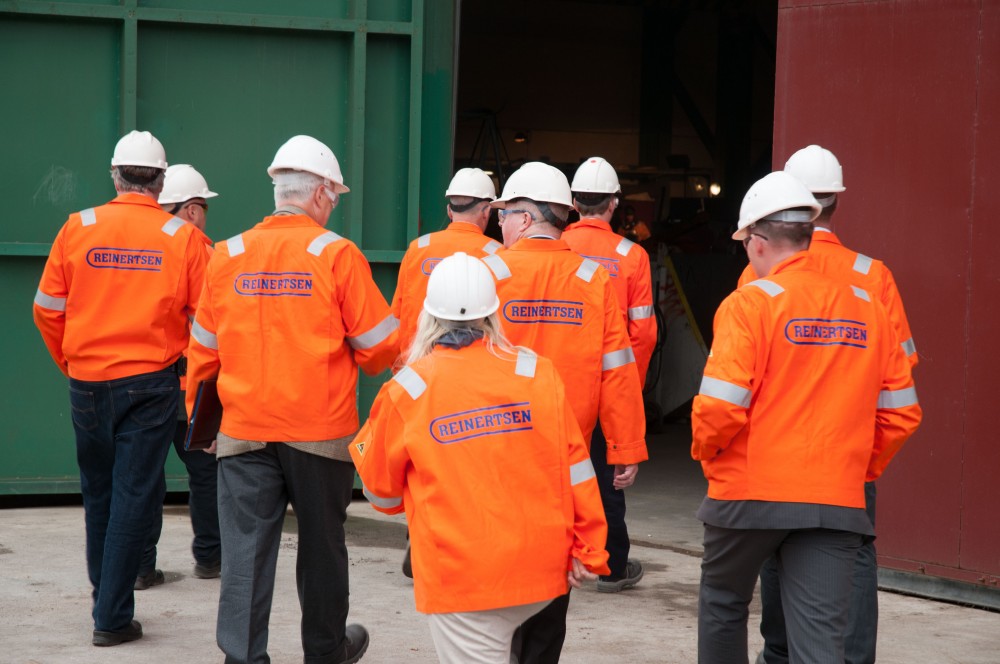 Reinertsen in Murmansk. Photo: Thomas Nilsen
Reinertsen in Murmansk. Photo: Thomas Nilsen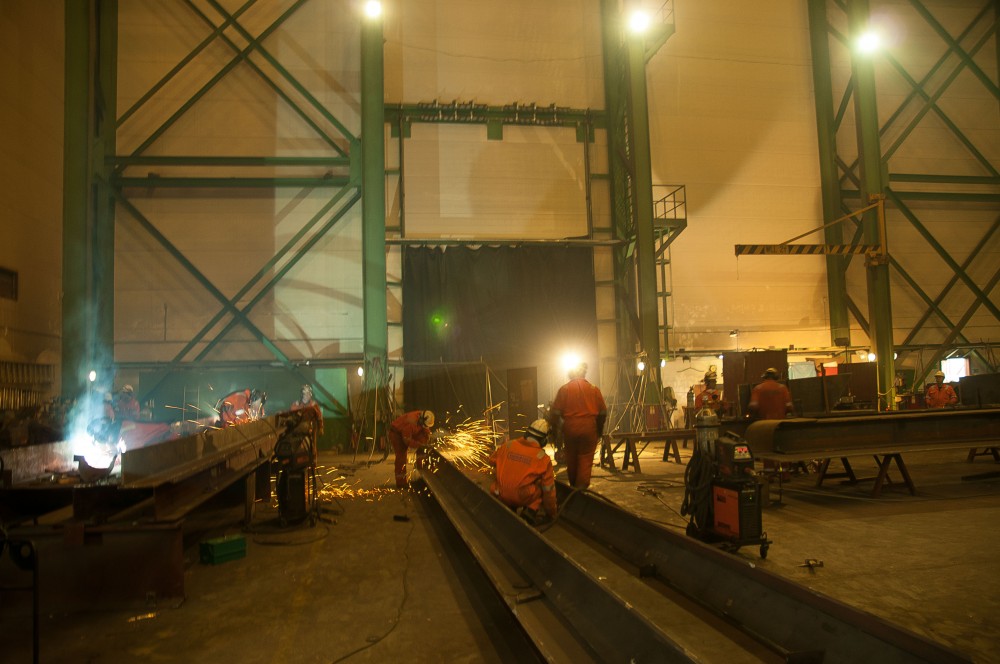 Workshop at Reinertsen Murmansk. Photo: Thomas Nilsen
Workshop at Reinertsen Murmansk. Photo: Thomas Nilsen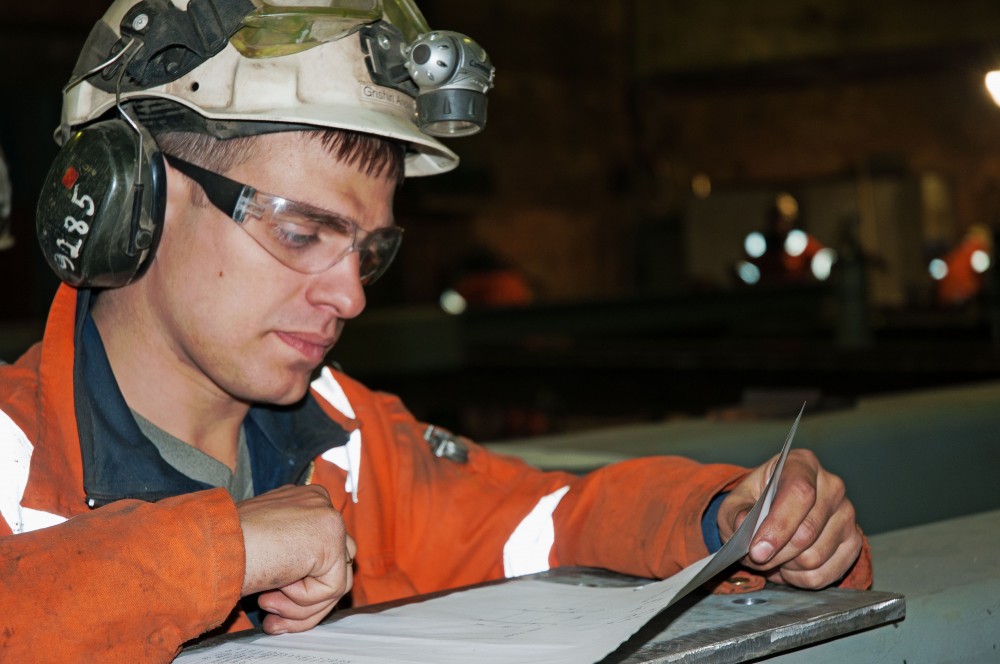 Worker at Reinertsen in Murmansk. Photo: Thomas Nilsen
Worker at Reinertsen in Murmansk. Photo: Thomas Nilsen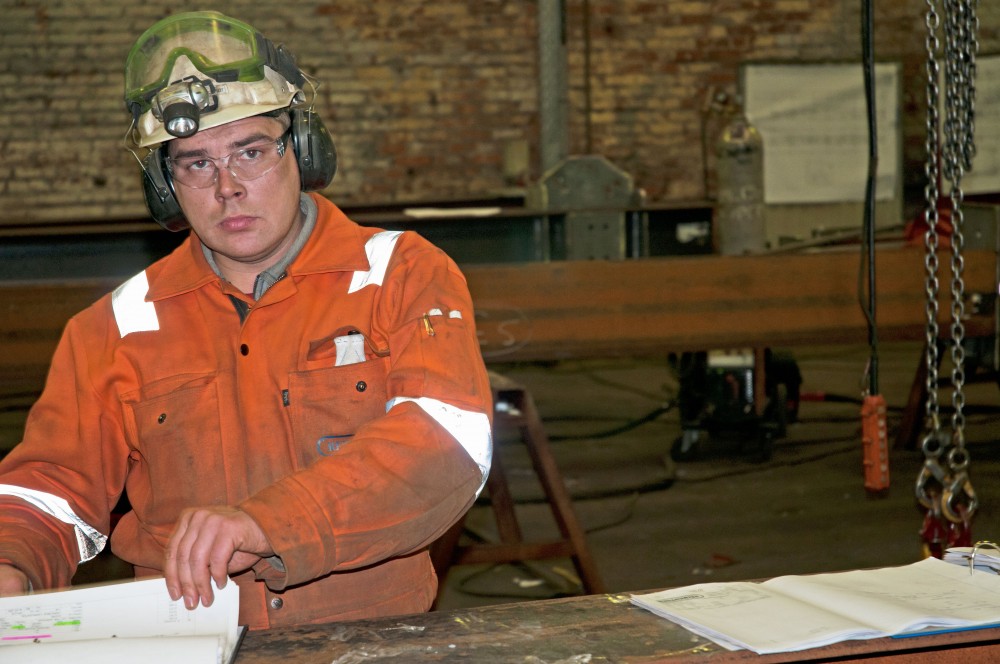 Worker at Reinertsen in Murmansk. Photo: Thomas Nilsen
Worker at Reinertsen in Murmansk. Photo: Thomas Nilsen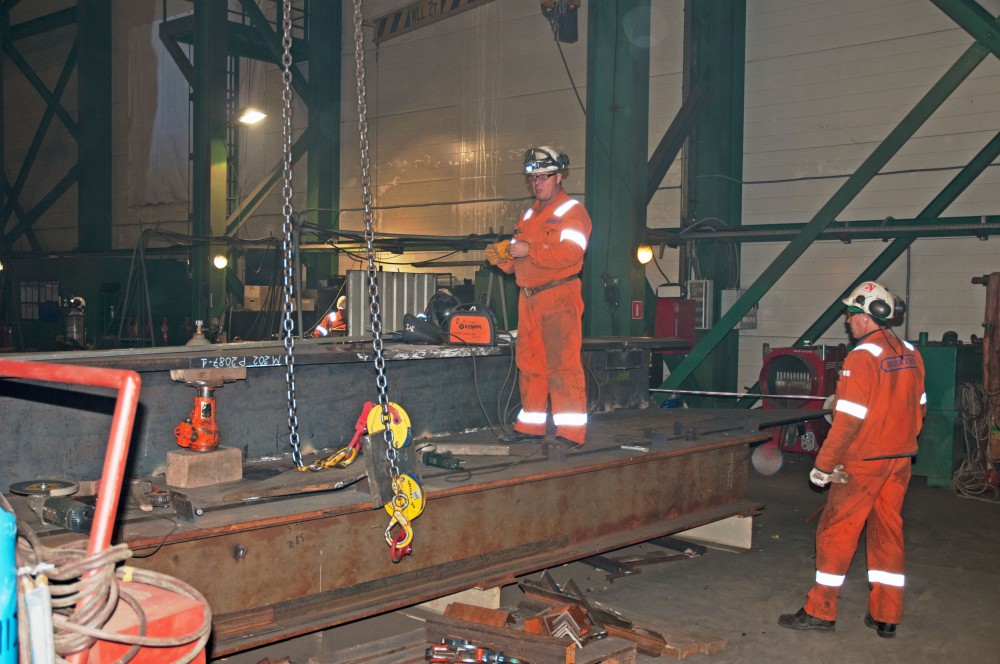 Construction workshop at Reinertsen in Murmansk. Photo: Thomas Nilsen
Construction workshop at Reinertsen in Murmansk. Photo: Thomas Nilsen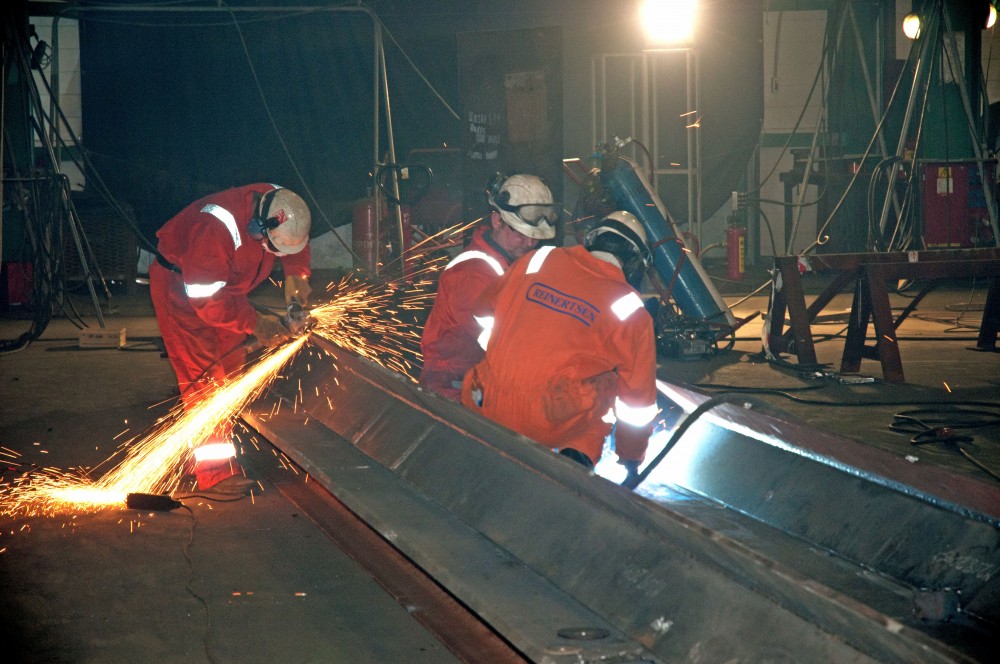 Workers at Reinertsen in Murmansk. Photo: Thomas Nilsen
Workers at Reinertsen in Murmansk. Photo: Thomas Nilsen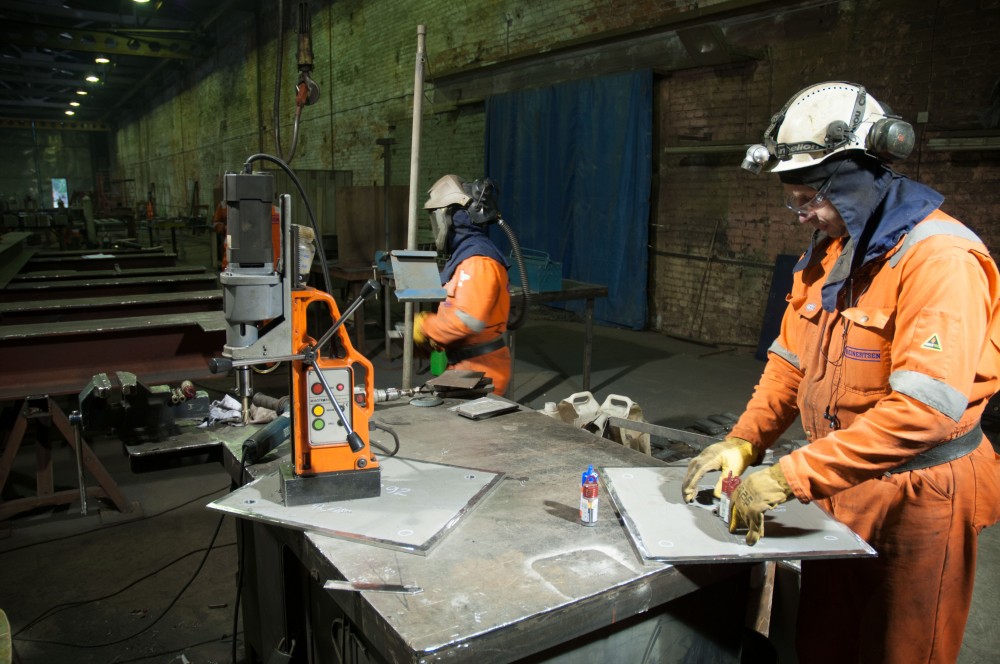 Workshop at Reinertsen in Murmansk. Photo: Thomas Nilsen
Workshop at Reinertsen in Murmansk. Photo: Thomas Nilsen
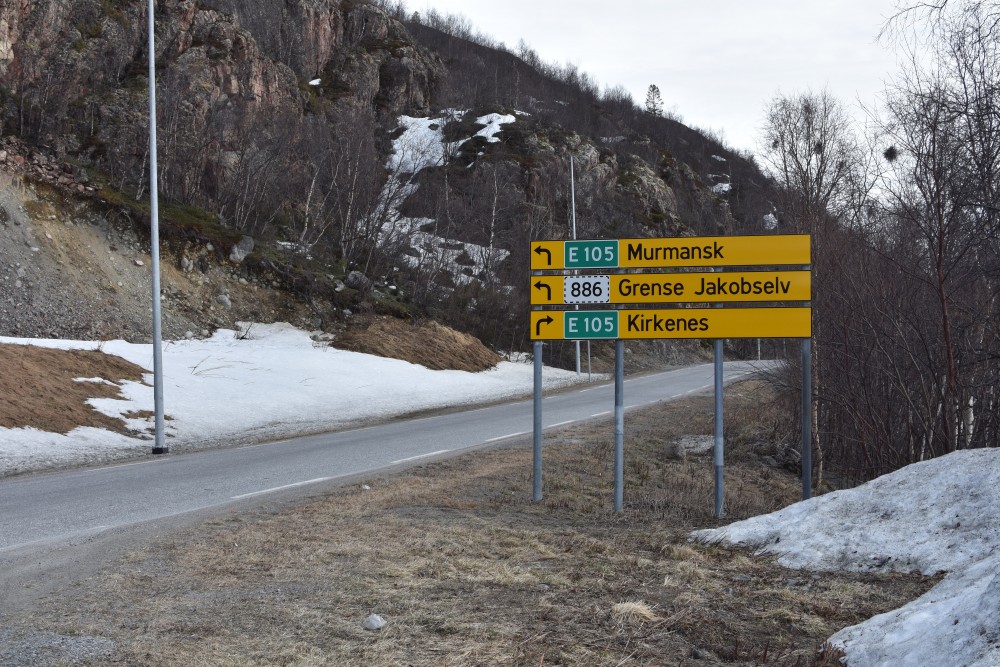 E105 connects Kirkenes and Murmansk, the only road between Norway and Russia. Photo: Thomas Nilsen
E105 connects Kirkenes and Murmansk, the only road between Norway and Russia. Photo: Thomas Nilsen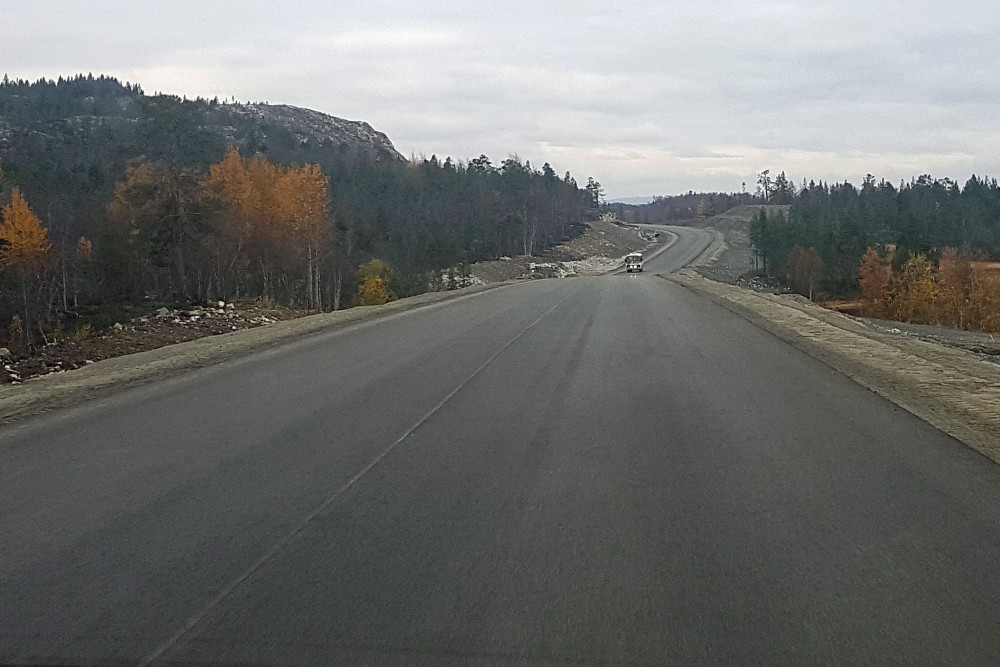 Upgrade on the last few kilometers on E105 between Salmijervi and Borisoglebsk on the Russian side of the border was completed in the autumn 2016. Photo: Thomas Nilsen
Upgrade on the last few kilometers on E105 between Salmijervi and Borisoglebsk on the Russian side of the border was completed in the autumn 2016. Photo: Thomas Nilsen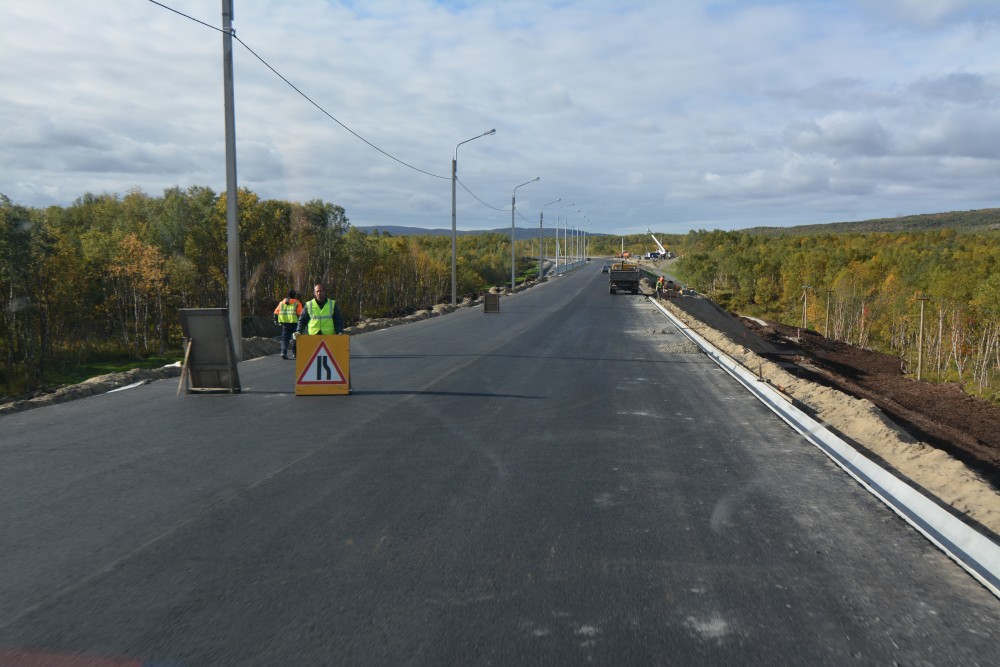 The new bridge in Pechenga opened in September 2013. Photo: Thomas Nilsen
The new bridge in Pechenga opened in September 2013. Photo: Thomas Nilsen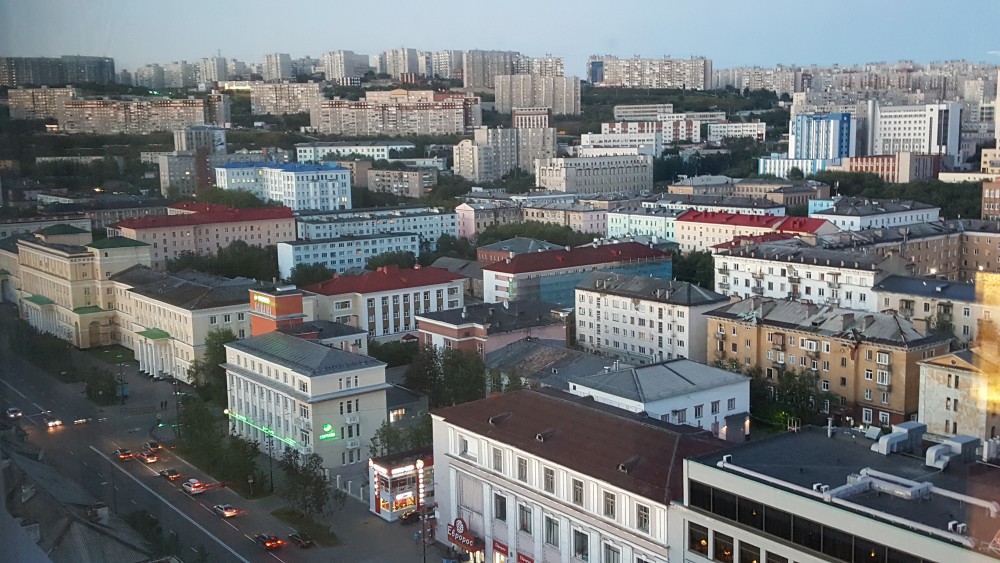 Murmansk. Photo: Thomas Nilsen
Murmansk. Photo: Thomas Nilsen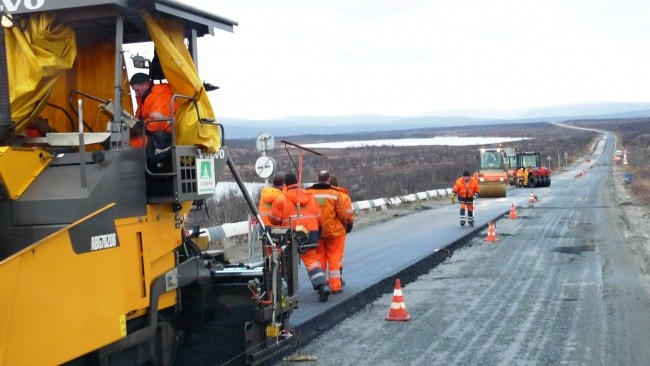 Asphalt paving on the road across the Kola Peninsula towards Murmansk. Photo: Thomas Nilsen
Asphalt paving on the road across the Kola Peninsula towards Murmansk. Photo: Thomas Nilsen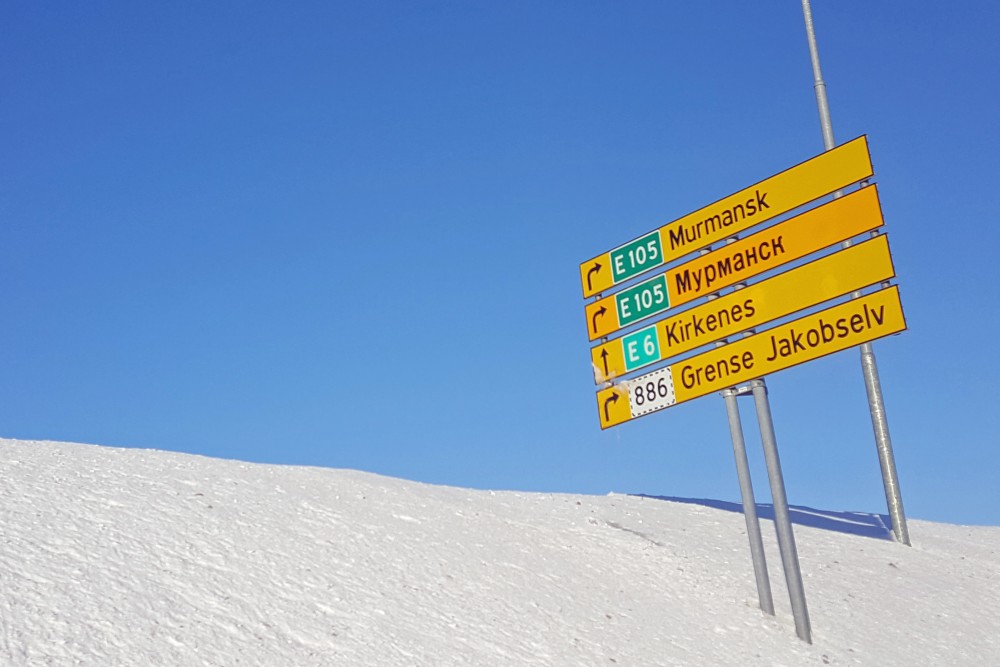 E105 meets E6 at Hesseng on the Norwegian side of the border. Photo: Thomas Nilsen
E105 meets E6 at Hesseng on the Norwegian side of the border. Photo: Thomas Nilsen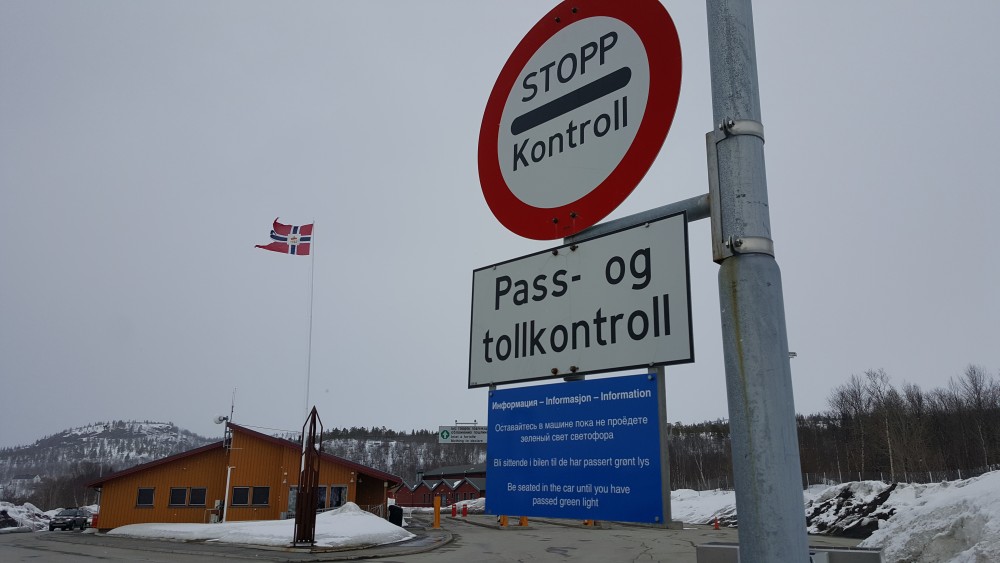 Storskog, the Norwegian border checkpoint. Photo: Thomas Nilsen
Storskog, the Norwegian border checkpoint. Photo: Thomas Nilsen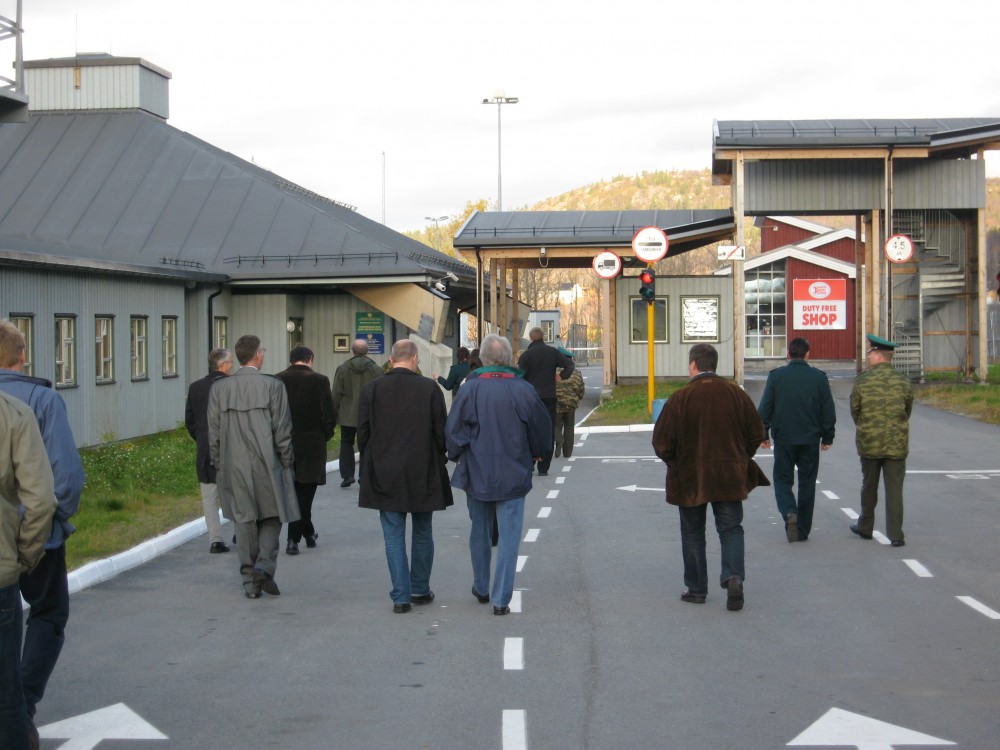 Borisoglebsk, the Russian border checkpoint. Photo: Thomas Nilsen
Borisoglebsk, the Russian border checkpoint. Photo: Thomas Nilsen
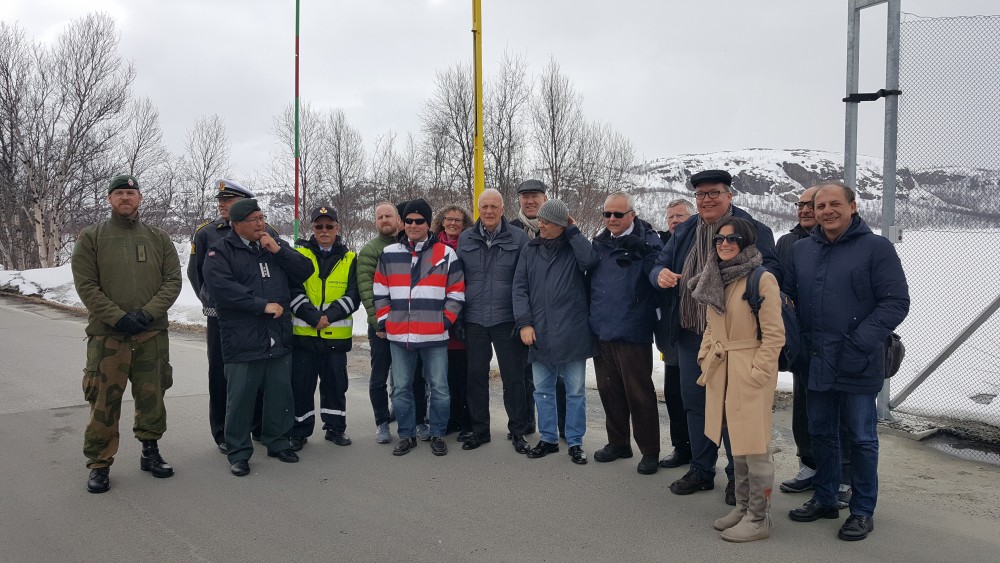 Lining up for family photo at Norway's border to Russia. Photo: Thomas Nilsen
Lining up for family photo at Norway's border to Russia. Photo: Thomas Nilsen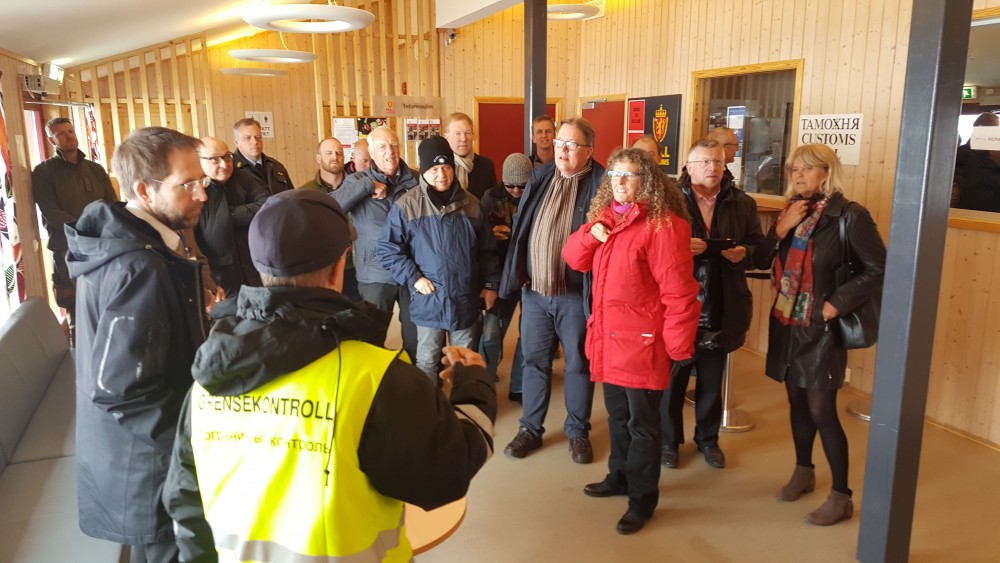 The Parliamentarians got a brief about the border crossing regime indoor at the Storskog checkpoint. Photo: Thomas Nilsen
The Parliamentarians got a brief about the border crossing regime indoor at the Storskog checkpoint. Photo: Thomas Nilsen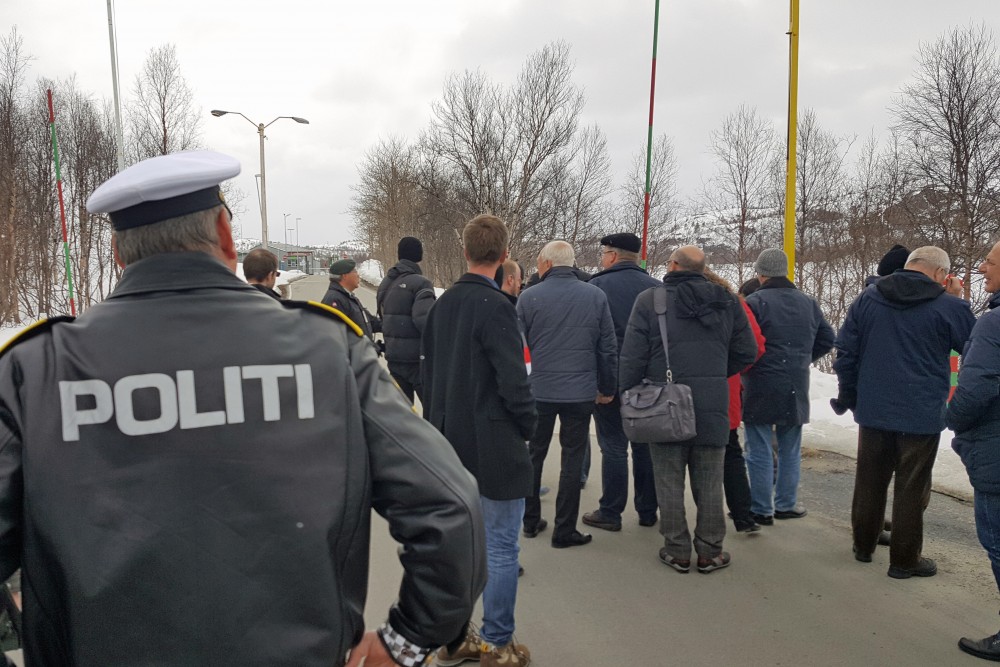 Here, but no longer. NATO Parliamentarians could walk all the way to the borderline between Norway and Russia, but not across. Photo: Thomas Nilsen
Here, but no longer. NATO Parliamentarians could walk all the way to the borderline between Norway and Russia, but not across. Photo: Thomas Nilsen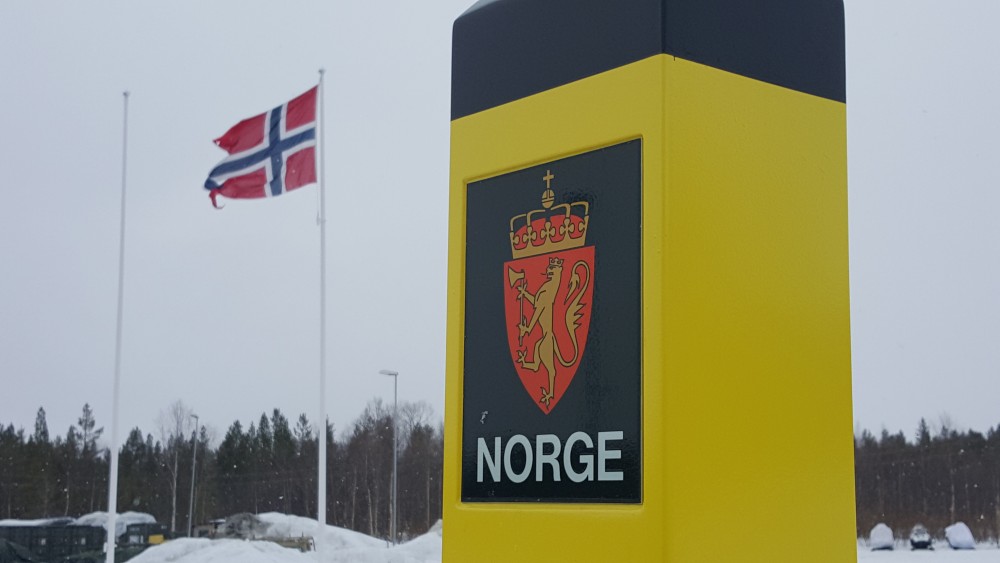 Norwegian border pole and flag. Photo: Thomas Nilsen
Norwegian border pole and flag. Photo: Thomas Nilsen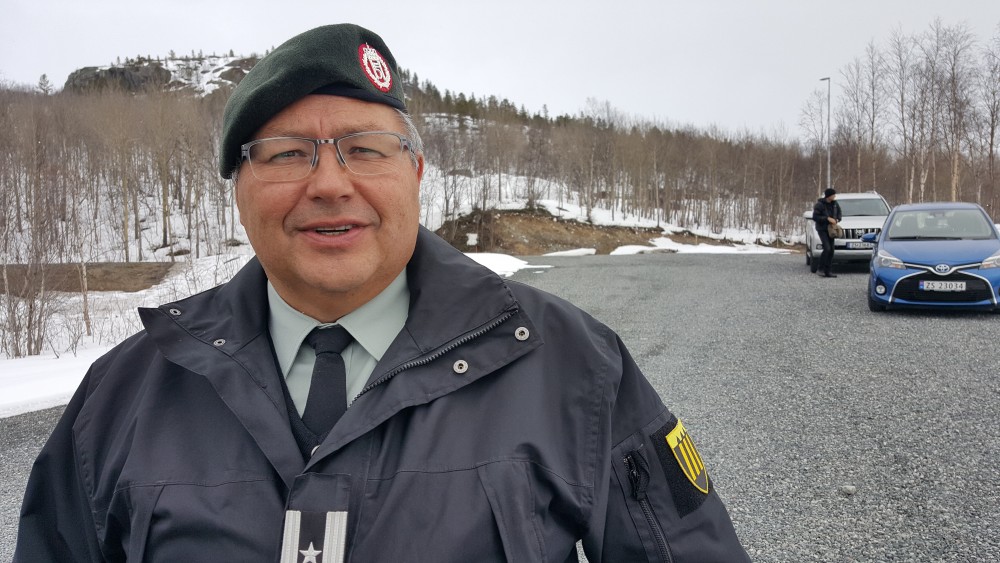 Roger Jakobsen is Norwegian Border Commissioner. Photo: Thomas Nilsen
Roger Jakobsen is Norwegian Border Commissioner. Photo: Thomas Nilsen Storskog border checkpoint. Photo: Thomas Nilsen
Storskog border checkpoint. Photo: Thomas Nilsen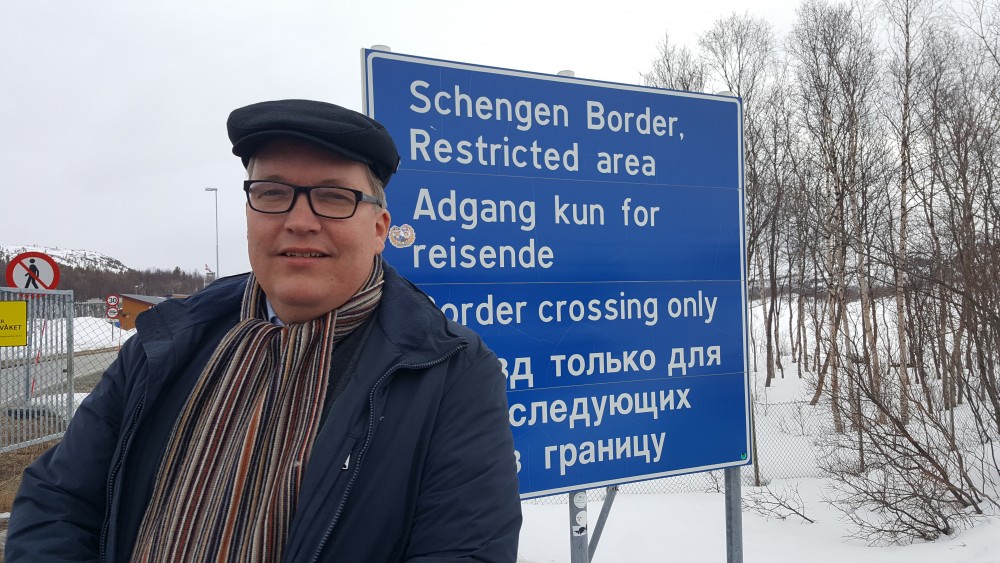 Member of the Norwegian Storting, Sverre Myrli, is Vice-President of NATO Parliamentary Assembly. Photo: Thomas Nilsen
Member of the Norwegian Storting, Sverre Myrli, is Vice-President of NATO Parliamentary Assembly. Photo: Thomas Nilsen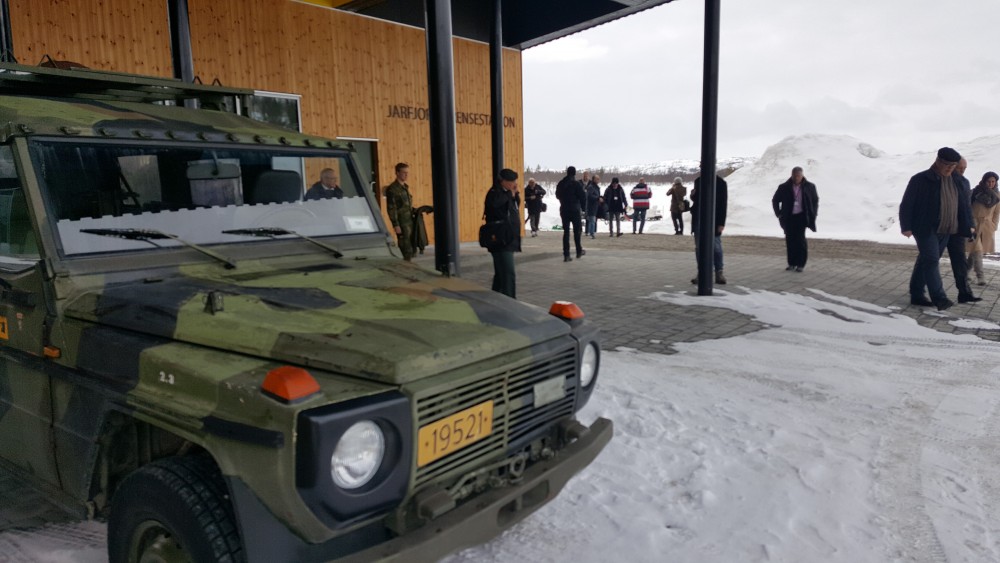 NATO Parliamentary Assably visited Jarfjord Border Station which is operated by the Norwegian military border guards who patrols the border to Russia. Photo: Thomas Nilsen
NATO Parliamentary Assably visited Jarfjord Border Station which is operated by the Norwegian military border guards who patrols the border to Russia. Photo: Thomas Nilsen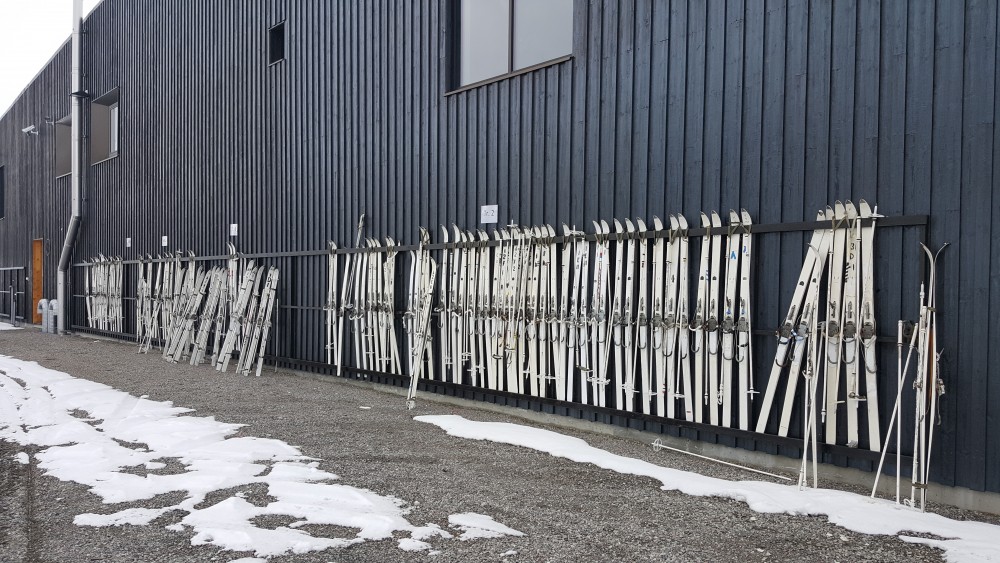 The skies are ready for the border guard soldiers who patrols Norway's border to Russia. Photo: Thomas Nilsen
The skies are ready for the border guard soldiers who patrols Norway's border to Russia. Photo: Thomas Nilsen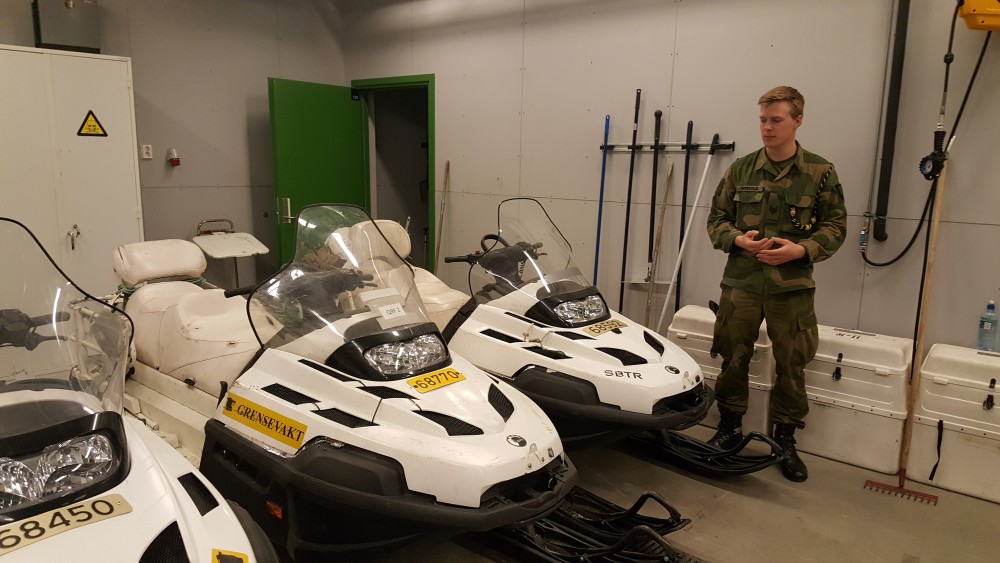 Snowmobiles are always on standby during winter, ready for the military guards for snap patrols in case of illegal border crossings. Photo: Thomas Nilsen
Snowmobiles are always on standby during winter, ready for the military guards for snap patrols in case of illegal border crossings. Photo: Thomas Nilsen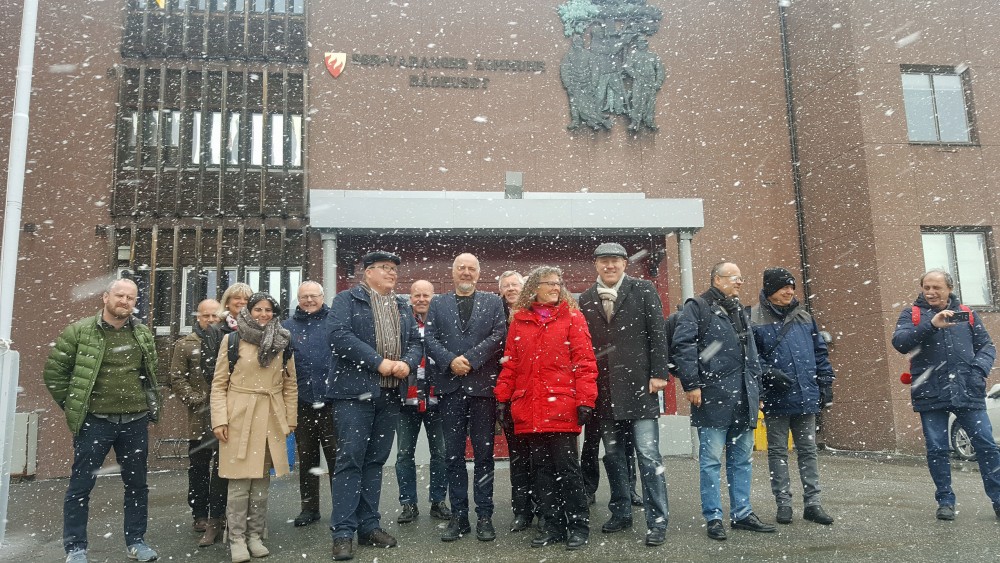 Snowy weather when the NATO Parliamentary Assembly members meet the Mayor of Kirkenes, Rune Rafaelsen. Photo: Thomas Nilsen
Snowy weather when the NATO Parliamentary Assembly members meet the Mayor of Kirkenes, Rune Rafaelsen. Photo: Thomas Nilsen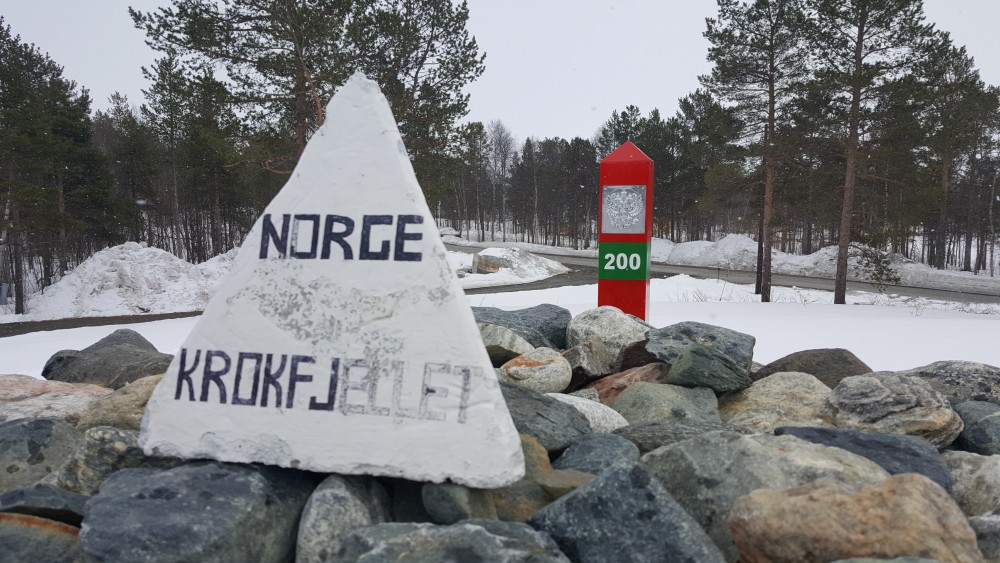 A Russian border pole on display outside Pasvik border station. Photo: Thomas Nilsen
A Russian border pole on display outside Pasvik border station. Photo: Thomas Nilsen
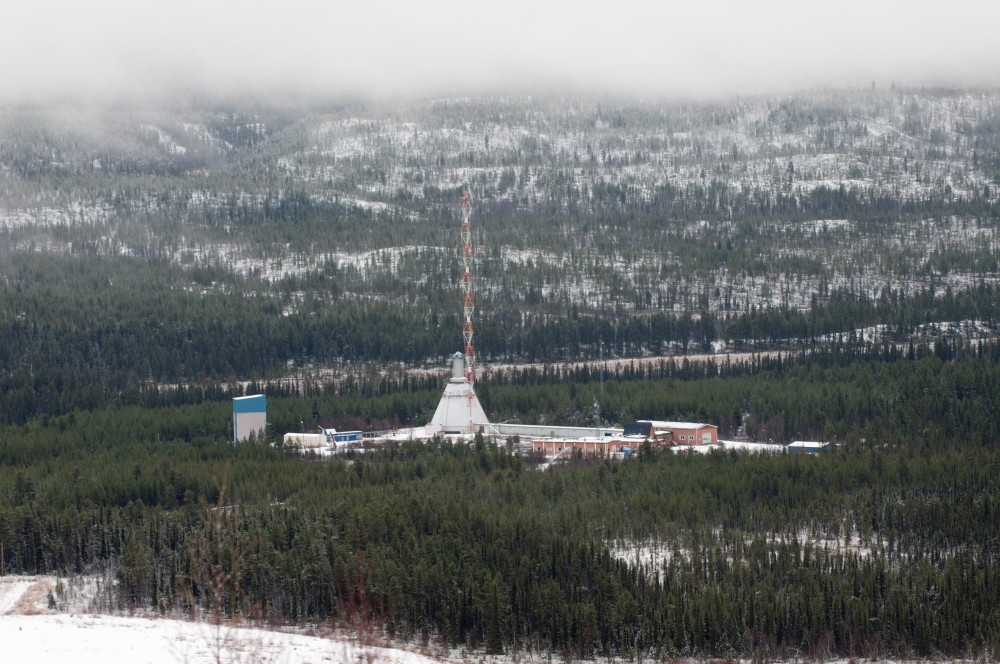 Esrange is located 200 km north of the Arctic Circle and surrounded by a vast wilderness perfect for launching of rockets. Photo: Thomas Nilsen
Esrange is located 200 km north of the Arctic Circle and surrounded by a vast wilderness perfect for launching of rockets. Photo: Thomas Nilsen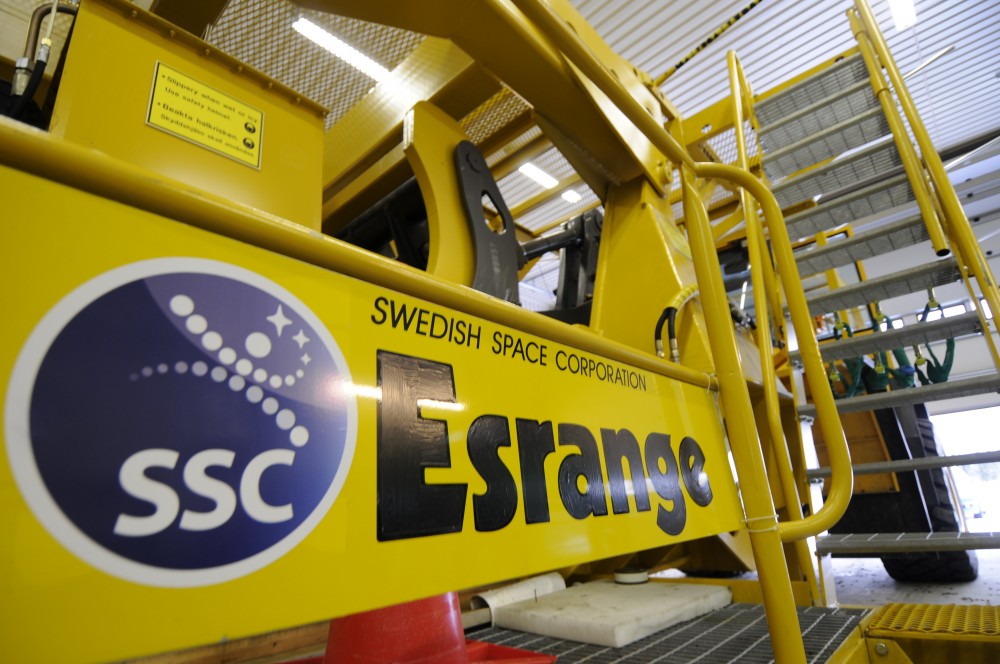 Esrange was built in 1964 by ESRO, the European Space Research Organisation, which later became European Space Agency. Photo: Thomas Nilsen
Esrange was built in 1964 by ESRO, the European Space Research Organisation, which later became European Space Agency. Photo: Thomas Nilsen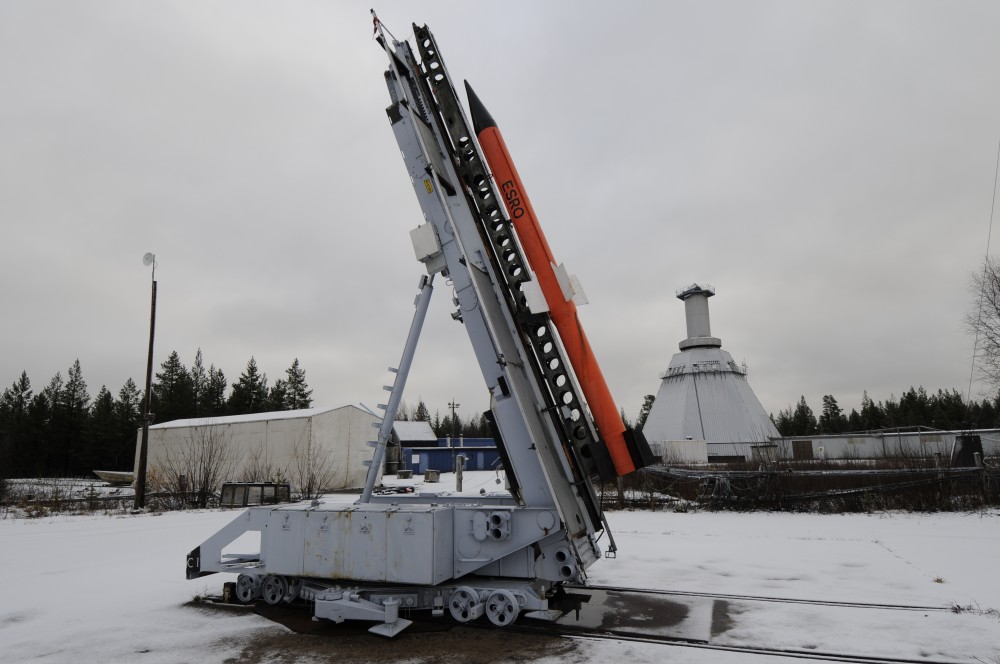 The first rocket launch from Esrange occurred on 19 November 1966. Photo: Thomas Nilsen
The first rocket launch from Esrange occurred on 19 November 1966. Photo: Thomas Nilsen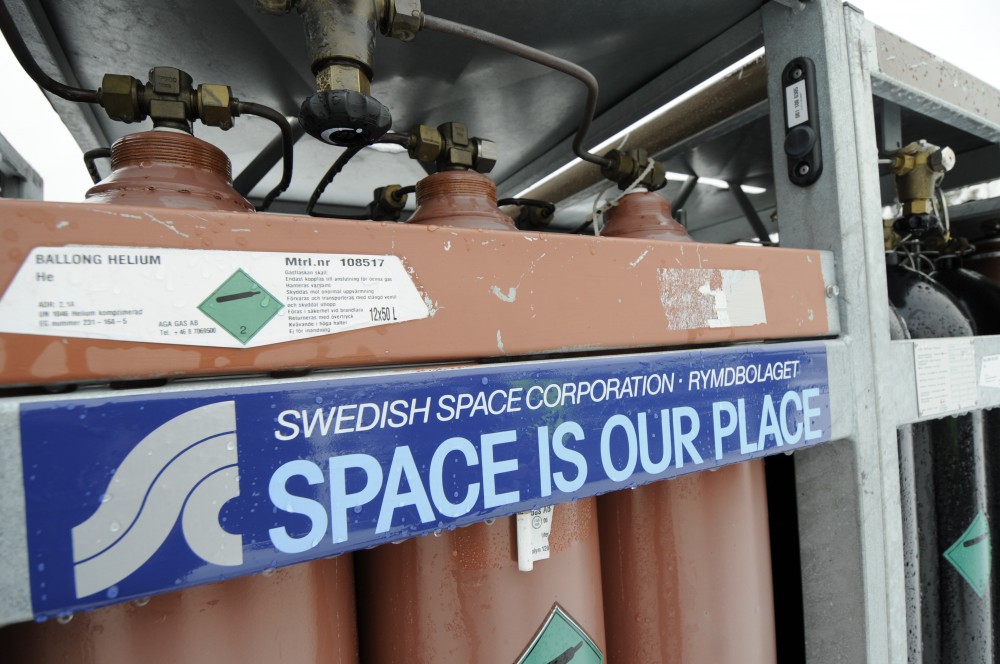 ESRANGE is an abbreviation for ESRO Sounding Rocket Launching Range. Photo: Thomas Nilsen
ESRANGE is an abbreviation for ESRO Sounding Rocket Launching Range. Photo: Thomas Nilsen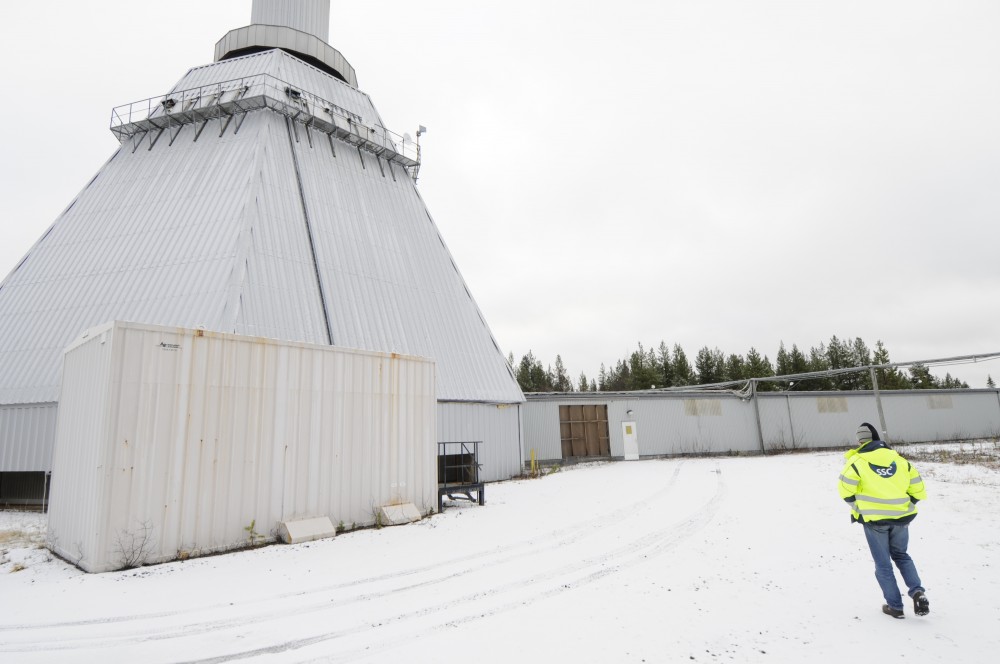 Both rockets and high altitude balloons are launched from Esrange. Photo: Thomas Nilsen
Both rockets and high altitude balloons are launched from Esrange. Photo: Thomas Nilsen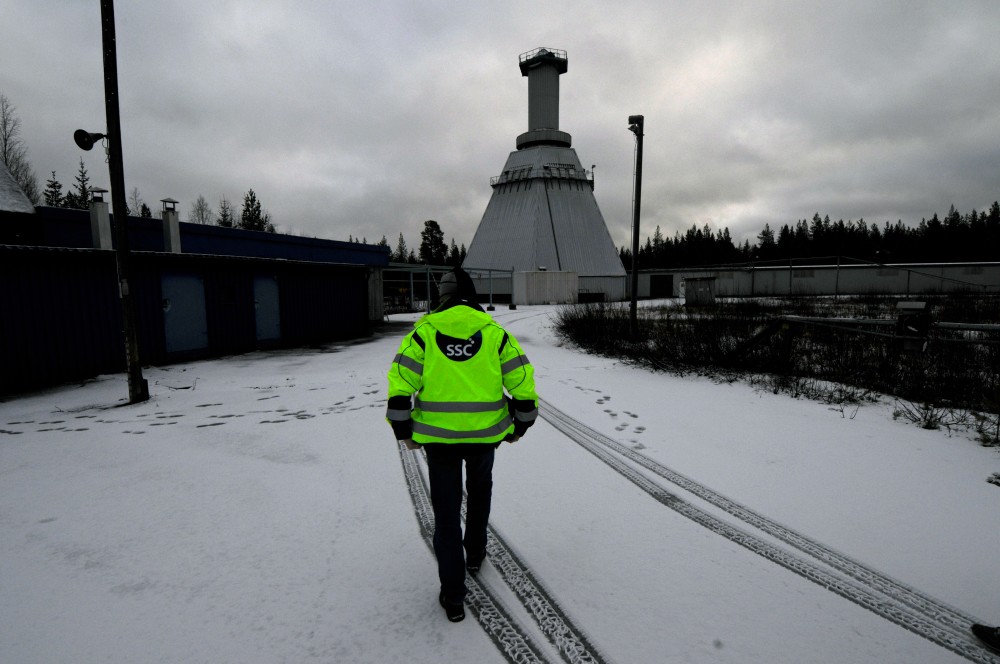 Towards the launch platform. Photo: Thomas Nilsen
Towards the launch platform. Photo: Thomas Nilsen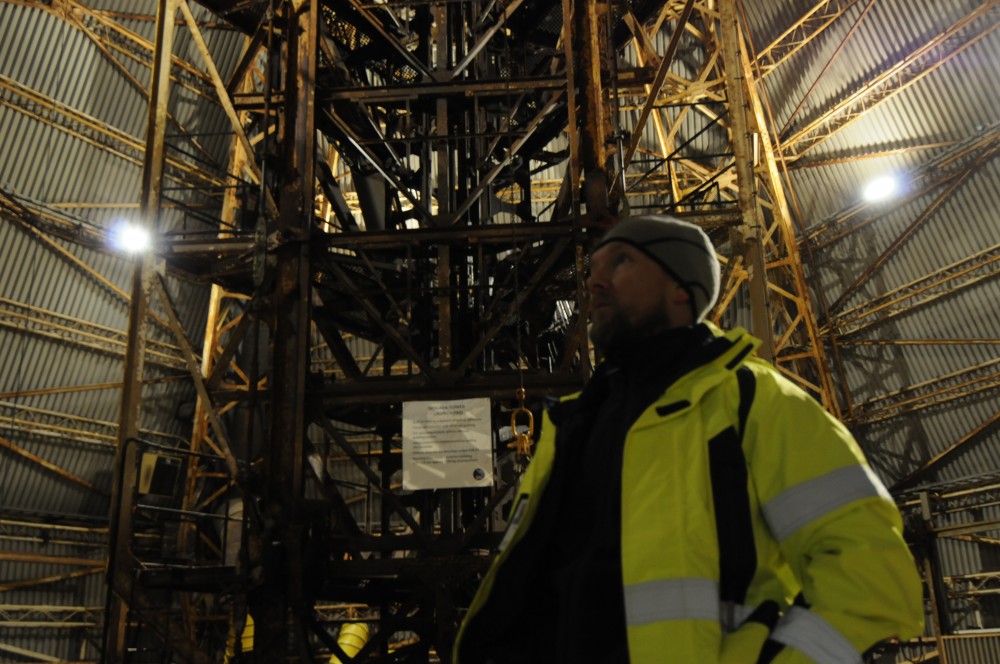 Esrange rocket platform. Photo: Thomas Nilsen
Esrange rocket platform. Photo: Thomas Nilsen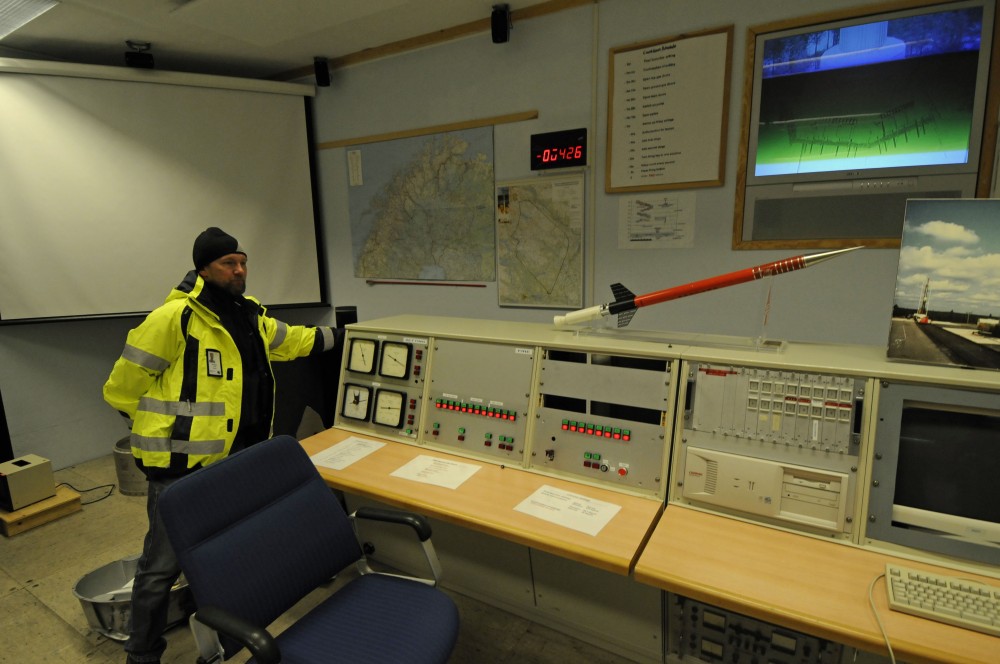 Control room for rocket launches. Photo: Thomas Nilsen
Control room for rocket launches. Photo: Thomas Nilsen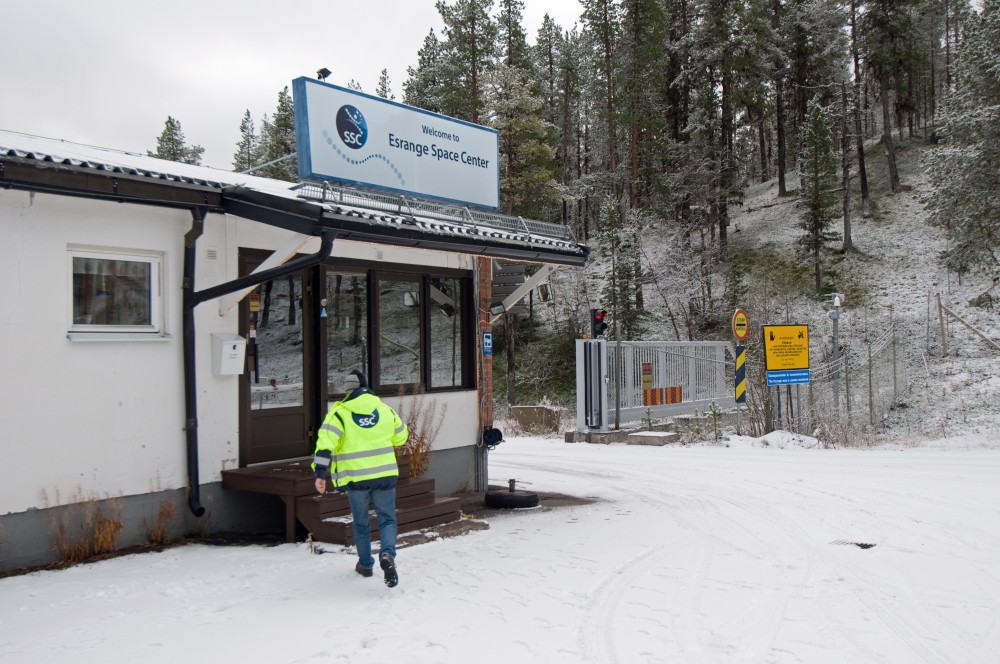 Entrance to Esrange Space Centre in Northern Sweden. Photo: Thomas Nilsen
Entrance to Esrange Space Centre in Northern Sweden. Photo: Thomas Nilsen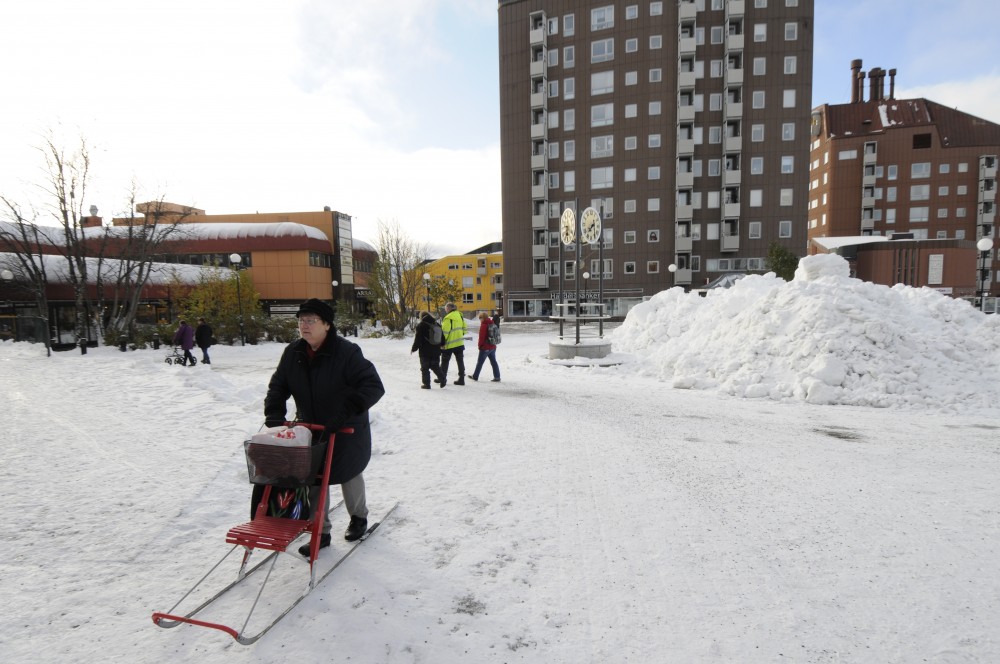 Kiruna is the nearest town to the Easrange Space Centre. Photo: Thomas Nilsen
Kiruna is the nearest town to the Easrange Space Centre. Photo: Thomas Nilsen
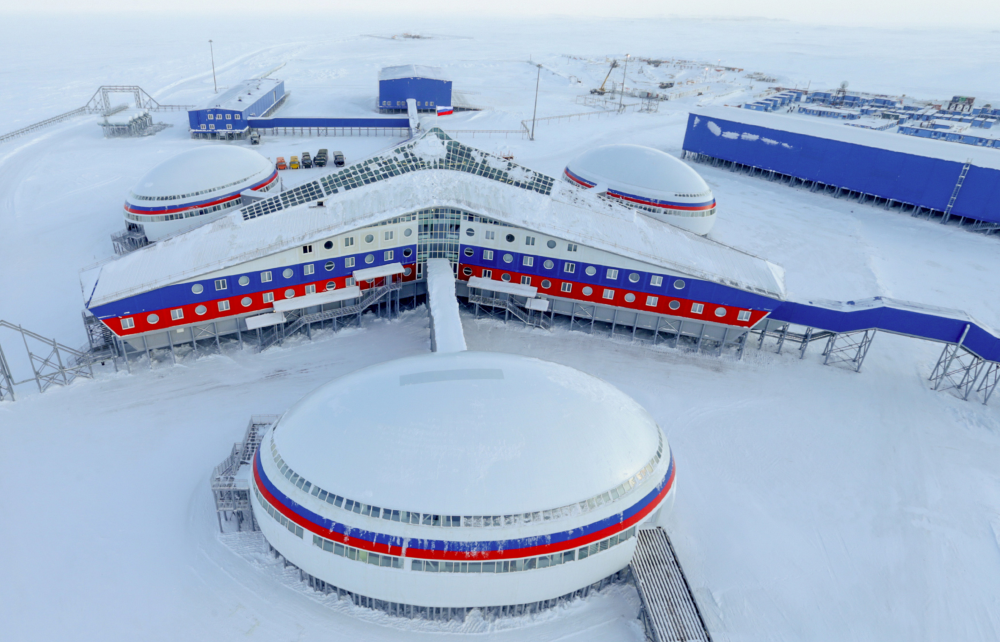 Nagurskoye Military Complex on Franz Josef Land. Photo: Russian Ministry of Defense
Nagurskoye Military Complex on Franz Josef Land. Photo: Russian Ministry of Defense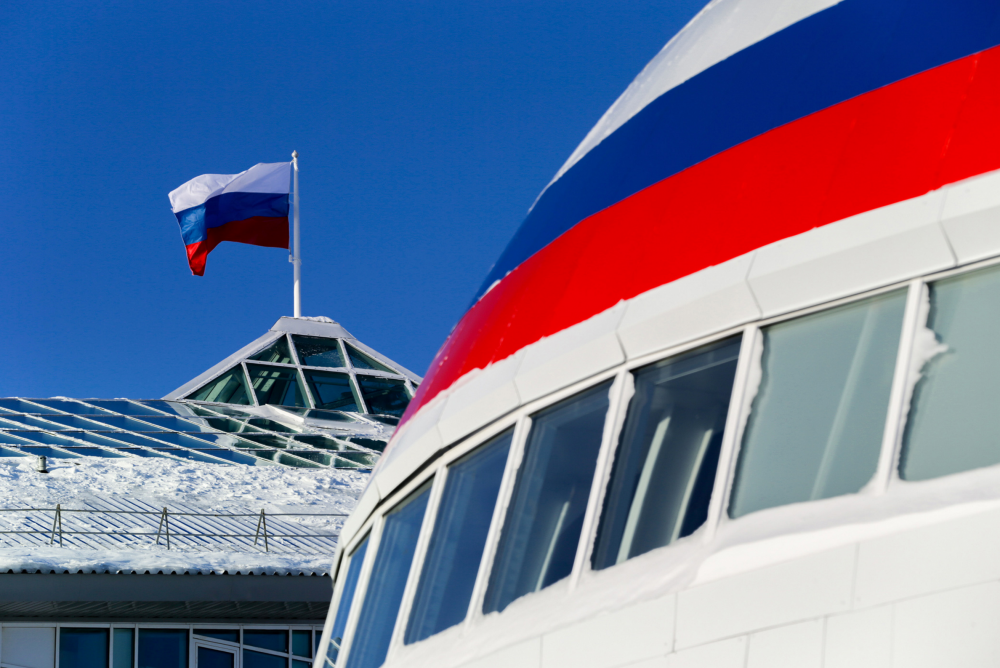 Nagurskoye Military Complex on Franz Josef Land. Photo: Russian Ministry of Defense
Nagurskoye Military Complex on Franz Josef Land. Photo: Russian Ministry of Defense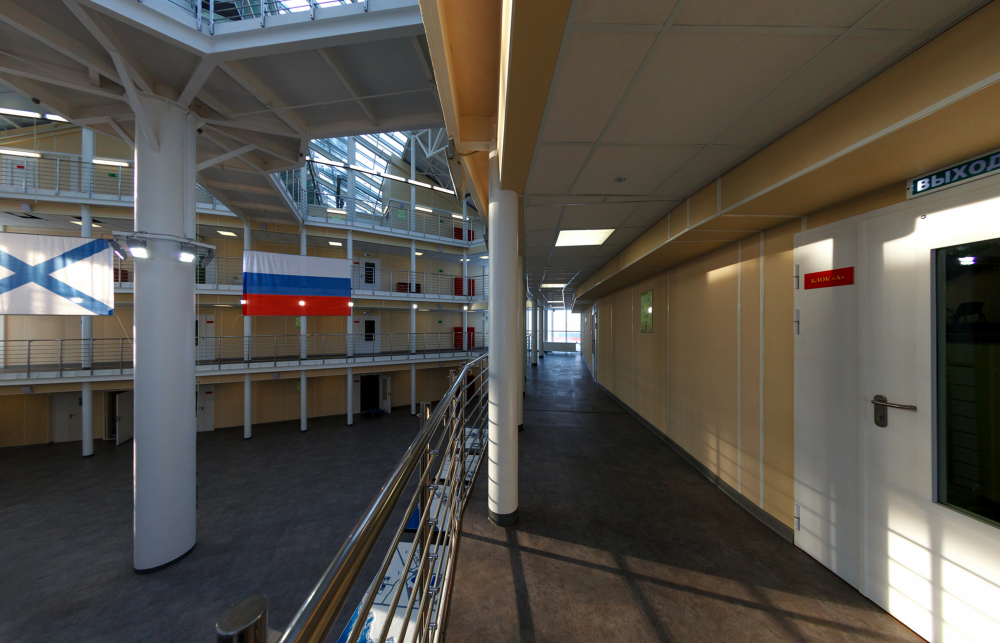 Nagurskoye Military Complex on Franz Josef Land. Photo: Russian Ministry of Defense
Nagurskoye Military Complex on Franz Josef Land. Photo: Russian Ministry of Defense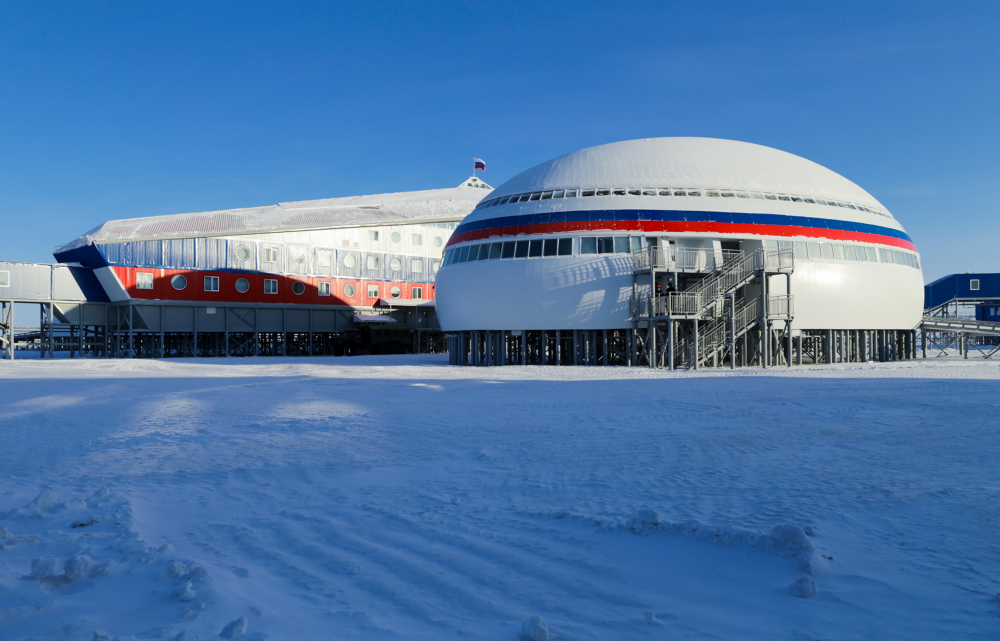 Nagurskoye Military Complex on Franz Josef Land. Photo: Russian Ministry of Defense
Nagurskoye Military Complex on Franz Josef Land. Photo: Russian Ministry of Defense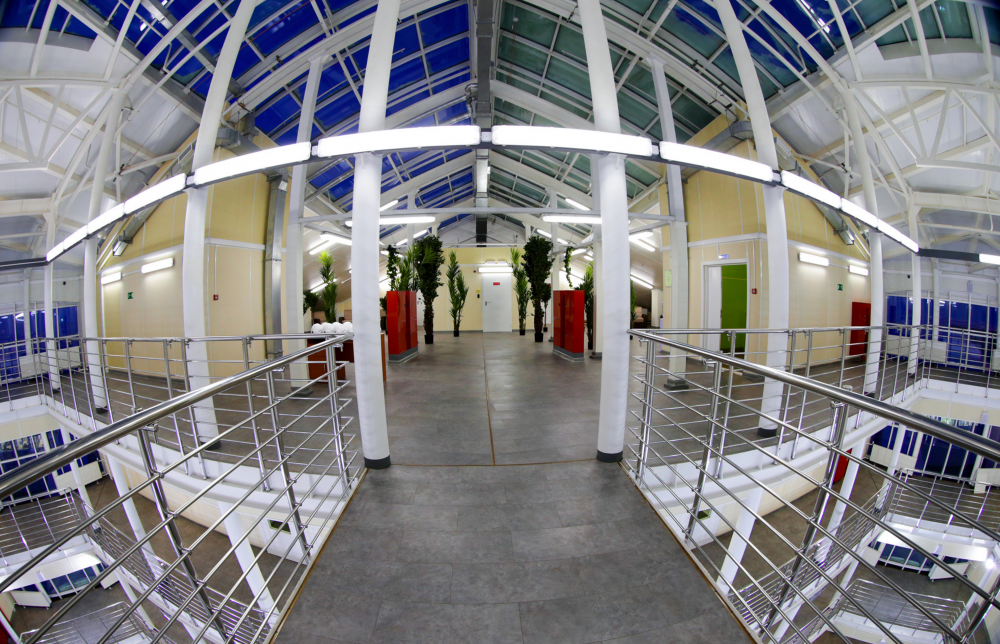 Nagurskoye Military Complex on Franz Josef Land. Photo: Russian Ministry of Defense
Nagurskoye Military Complex on Franz Josef Land. Photo: Russian Ministry of Defense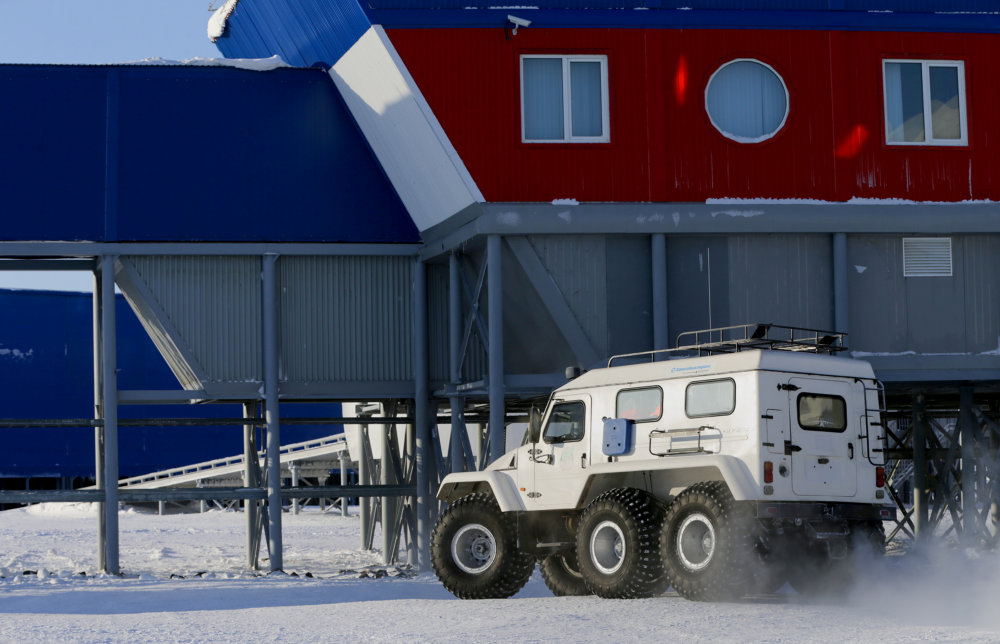 Nagurskoye Military Complex on Franz Josef Land. Photo: Russian Ministry of Defense
Nagurskoye Military Complex on Franz Josef Land. Photo: Russian Ministry of Defense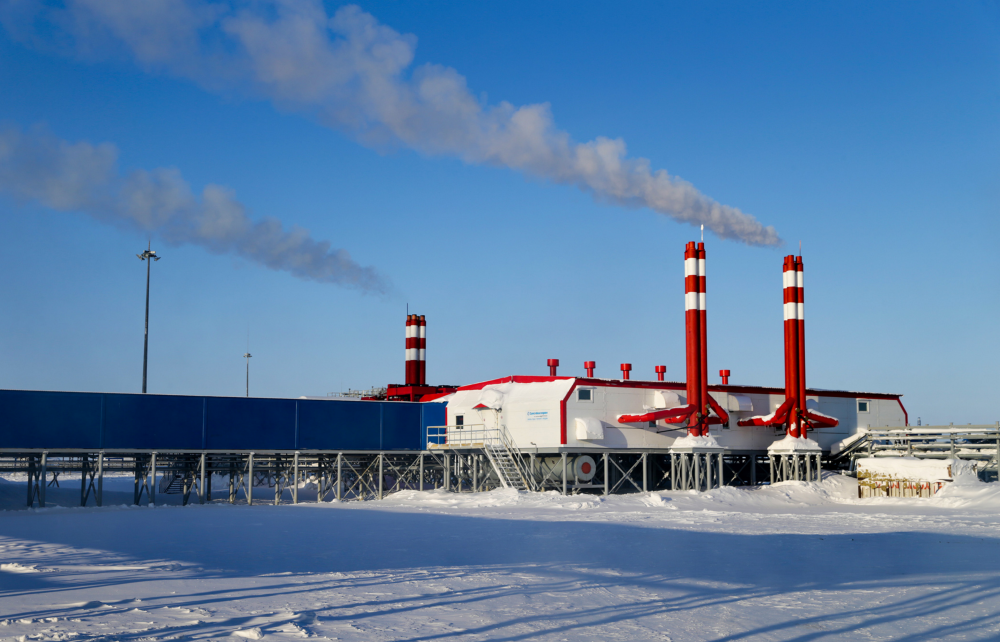 Nagurskoye Military Complex on Franz Josef Land. Photo: Russian Ministry of Defense
Nagurskoye Military Complex on Franz Josef Land. Photo: Russian Ministry of Defense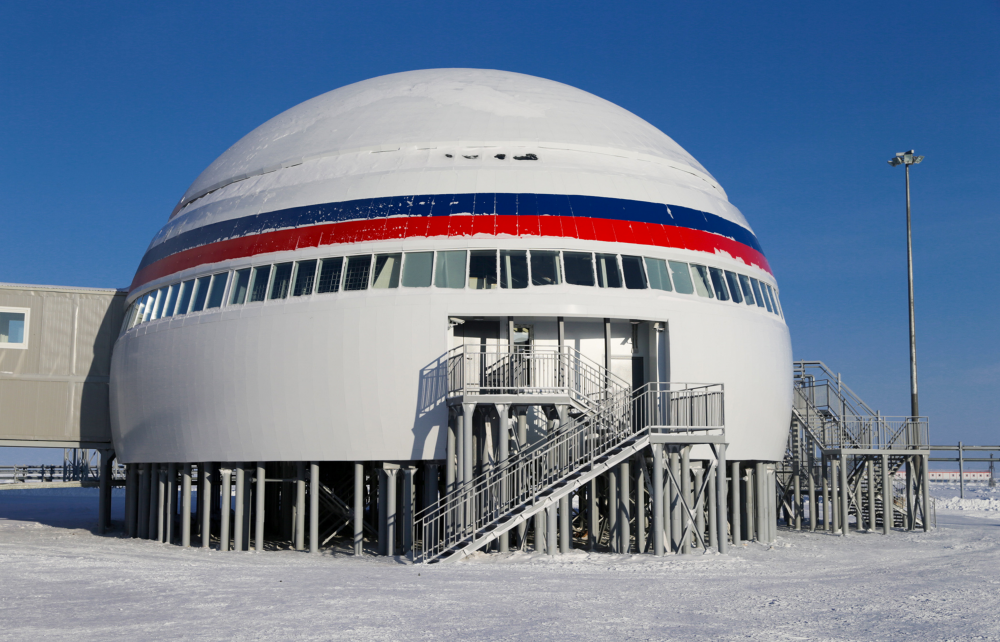 Nagurskoye Military Complex on Franz Josef Land. Photo: Russian Ministry of Defense
Nagurskoye Military Complex on Franz Josef Land. Photo: Russian Ministry of Defense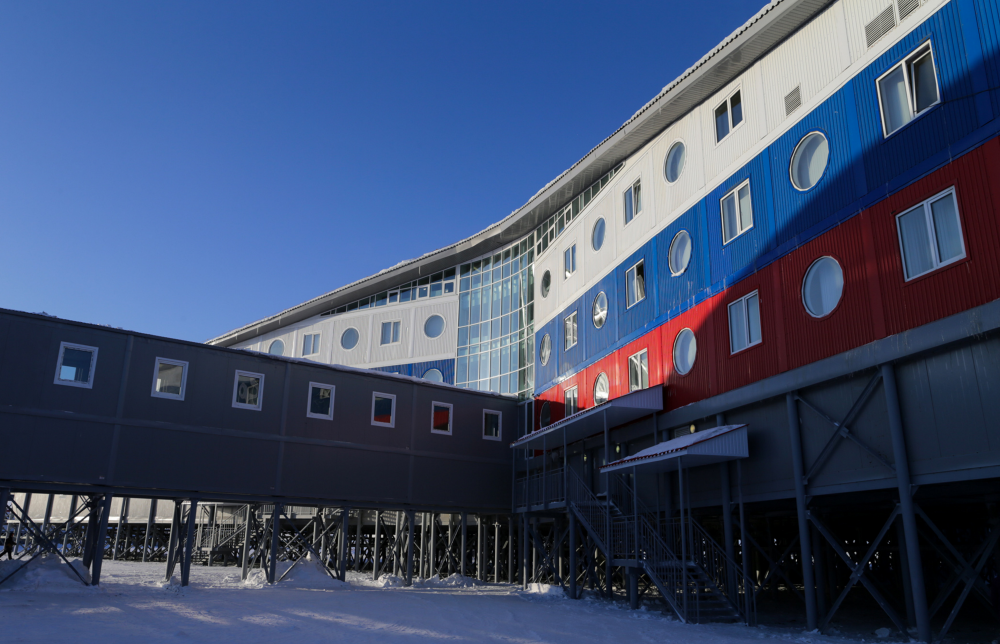 Nagurskoye Military Complex on Franz Josef Land. Photo: Russian Ministry of Defense
Nagurskoye Military Complex on Franz Josef Land. Photo: Russian Ministry of Defense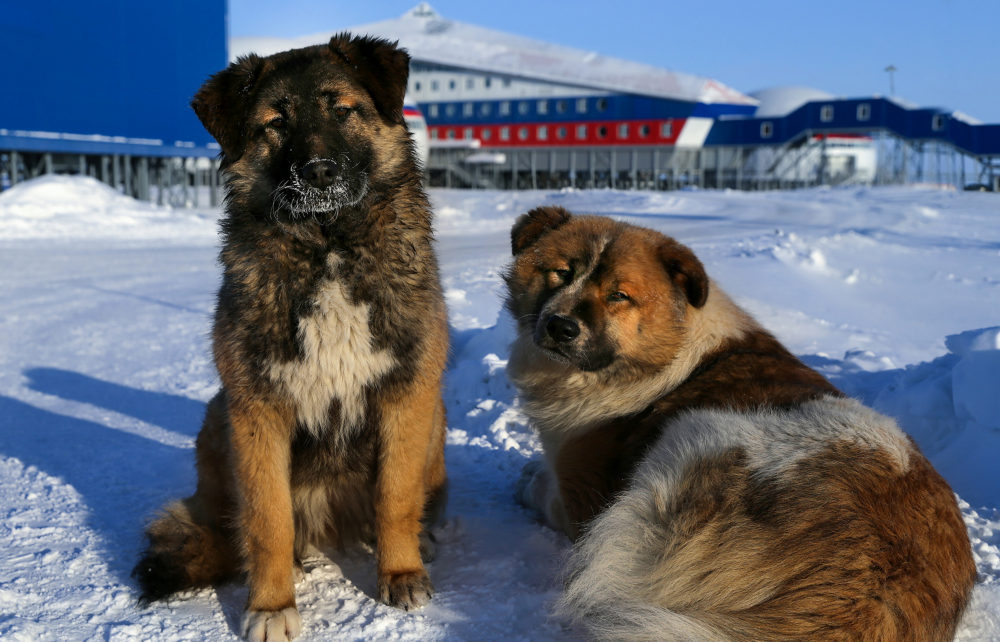 Nagurskoye Military Complex on Franz Josef Land. Photo: Russian Ministry of Defense
Nagurskoye Military Complex on Franz Josef Land. Photo: Russian Ministry of Defense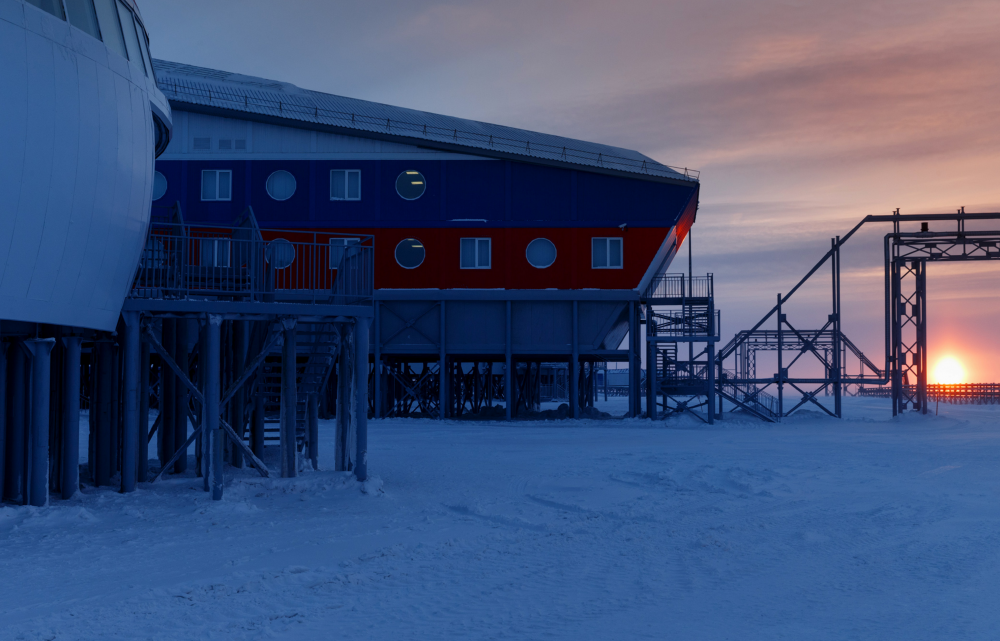 Nagurskoye Military Complex on Franz Josef Land. Photo: Russian Ministry of Defense
Nagurskoye Military Complex on Franz Josef Land. Photo: Russian Ministry of Defense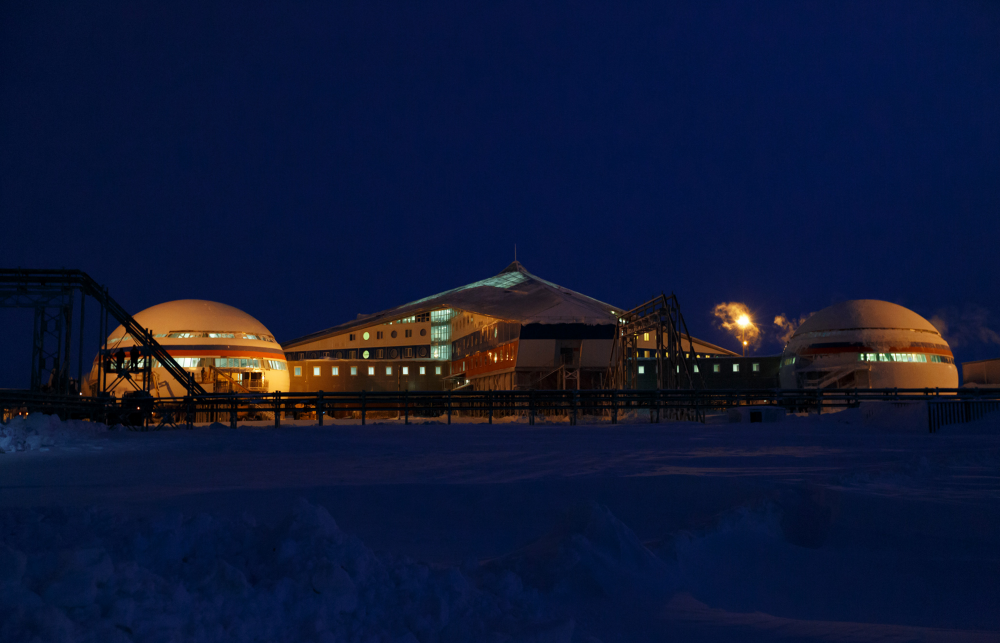 Nagurskoye Military Complex on Franz Josef Land. Photo: Russian Ministry of Defense
Nagurskoye Military Complex on Franz Josef Land. Photo: Russian Ministry of Defense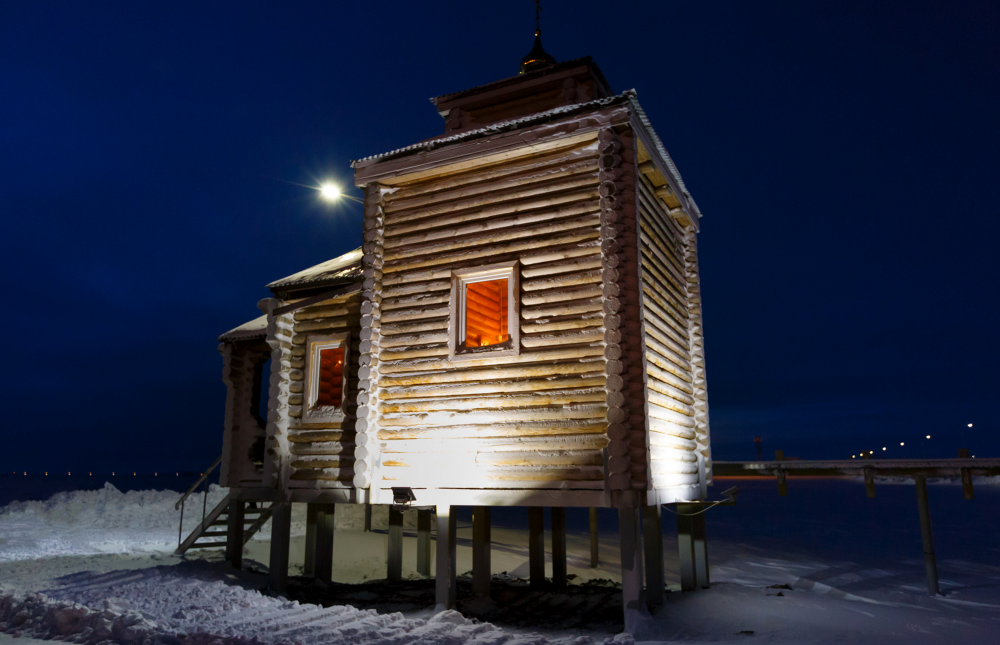 Nagurskoye Military Complex on Franz Josef Land has its own Orthodox church; the world's northernmost. Photo: Russian Ministry of Defense
Nagurskoye Military Complex on Franz Josef Land has its own Orthodox church; the world's northernmost. Photo: Russian Ministry of Defense
 Expedition cruise vessel "Island Sky" in the White Sea. Photo: Thomas Nilsen
Expedition cruise vessel "Island Sky" in the White Sea. Photo: Thomas Nilsen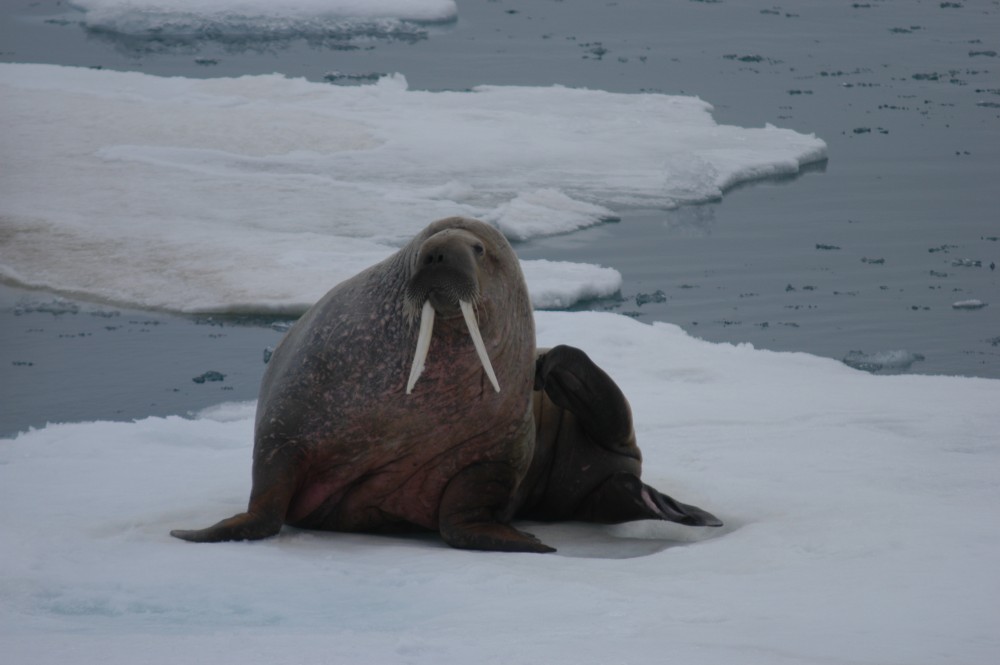 Walrus on an icefloe east of Spitsbergen. Photo: Thomas Nilsen
Walrus on an icefloe east of Spitsbergen. Photo: Thomas Nilsen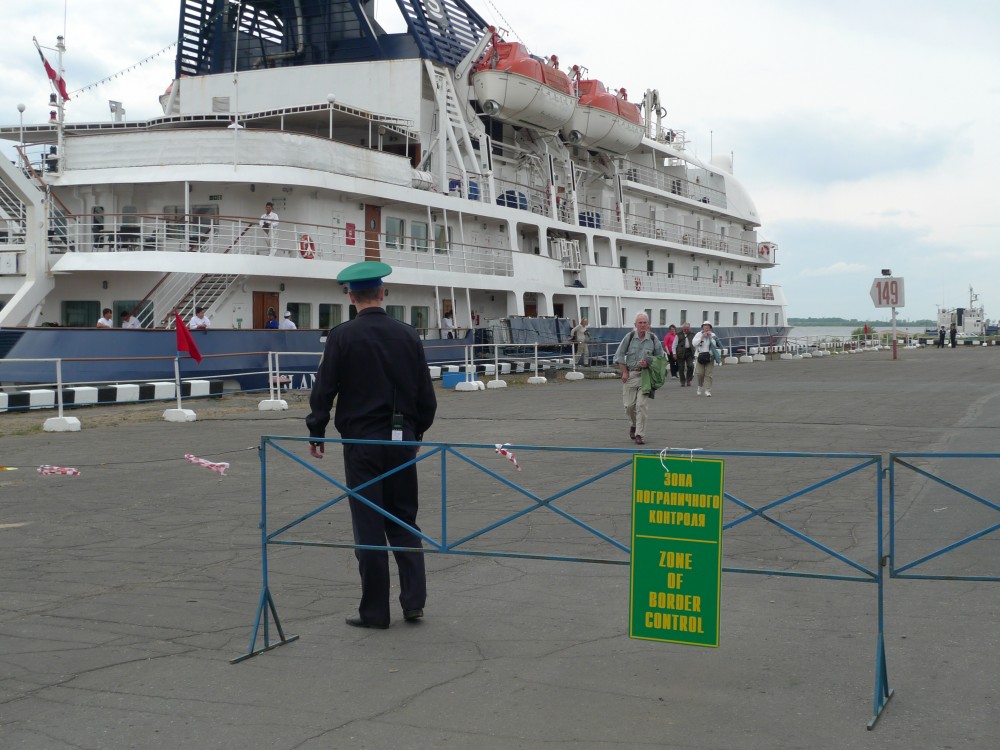 Foreigners on board cruise vessels can now visit ports like here in Arkhangelsk for 72 hours without holding a Russian visa. Photo: Thomas Nilsen
Foreigners on board cruise vessels can now visit ports like here in Arkhangelsk for 72 hours without holding a Russian visa. Photo: Thomas Nilsen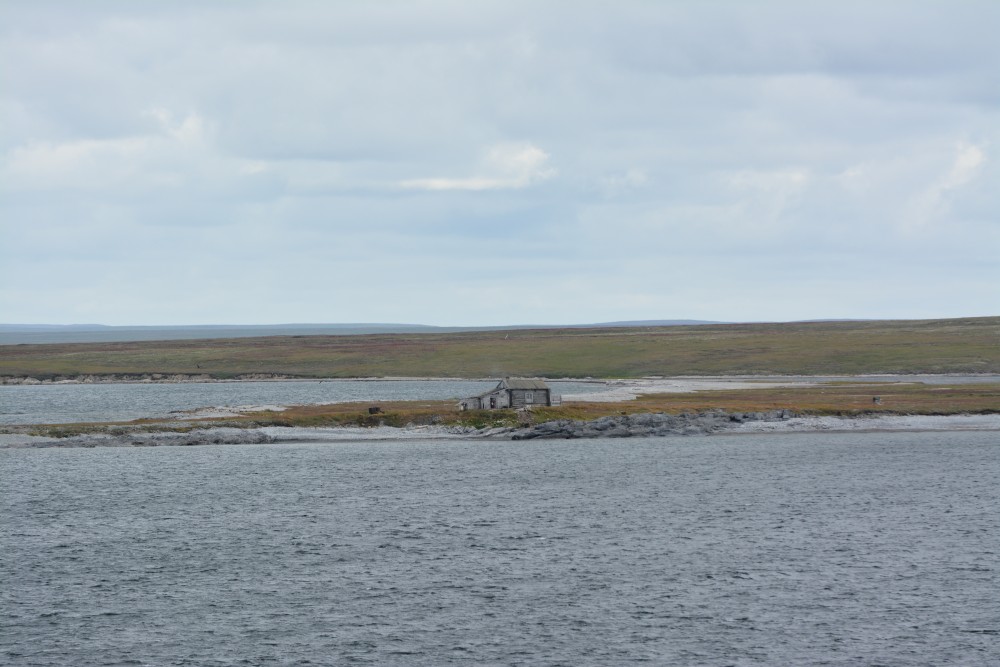 There are close very few people living on the remote islands in the Russian Arctic. Here a small hut on the Vaygach Island. Photo: Thomas Nilsen
There are close very few people living on the remote islands in the Russian Arctic. Here a small hut on the Vaygach Island. Photo: Thomas Nilsen Murmansk is Russia's largest Arctic city with a growing number of tourists. Photo: Thomas Nilsen
Murmansk is Russia's largest Arctic city with a growing number of tourists. Photo: Thomas Nilsen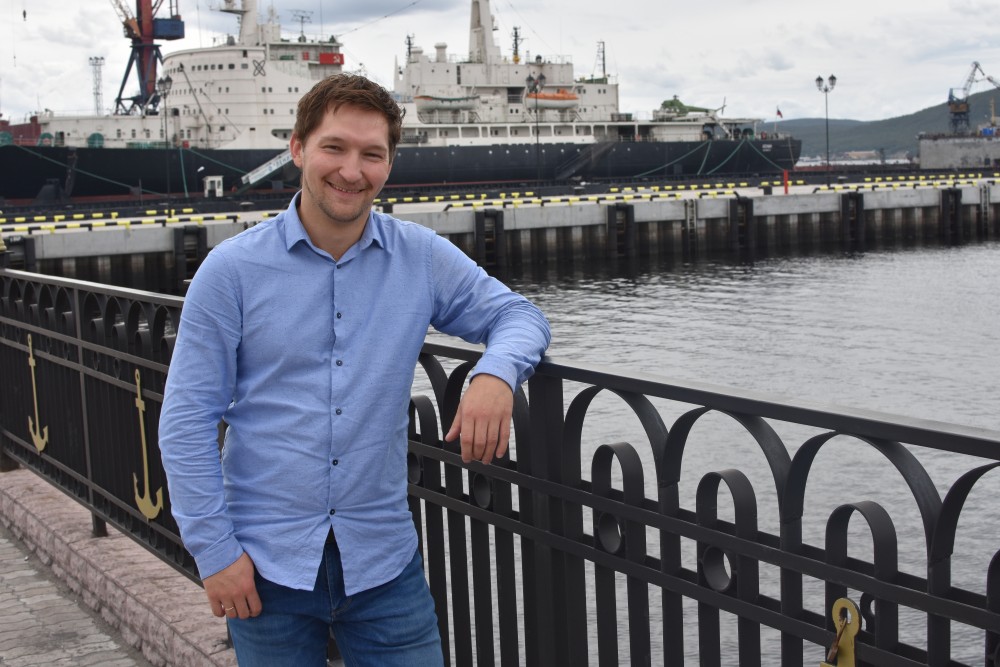 Tourist guide Sergey Arzumanov in Murmansk is waiting for more foreign cruise vessels to make port call to the city's brand new pier. In the background, icebreaker "Lenin". Photo: Thomas Nilsen
Tourist guide Sergey Arzumanov in Murmansk is waiting for more foreign cruise vessels to make port call to the city's brand new pier. In the background, icebreaker "Lenin". Photo: Thomas Nilsen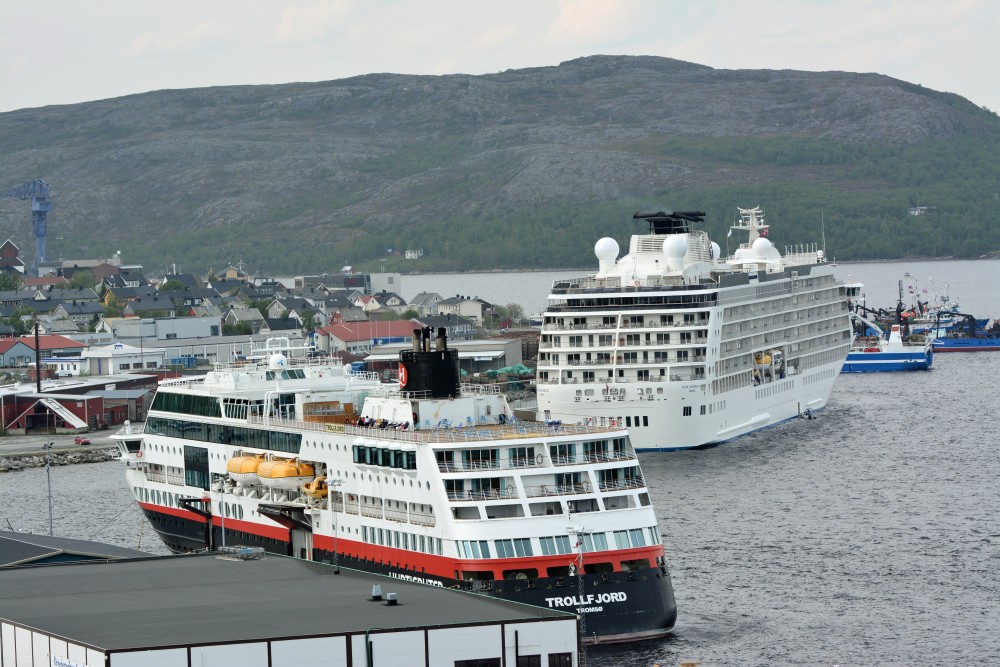 Port of Kirkenes with "The World" and Hurtigruten's "Trollfjord". Photo: Thomas Nilsen
Port of Kirkenes with "The World" and Hurtigruten's "Trollfjord". Photo: Thomas Nilsen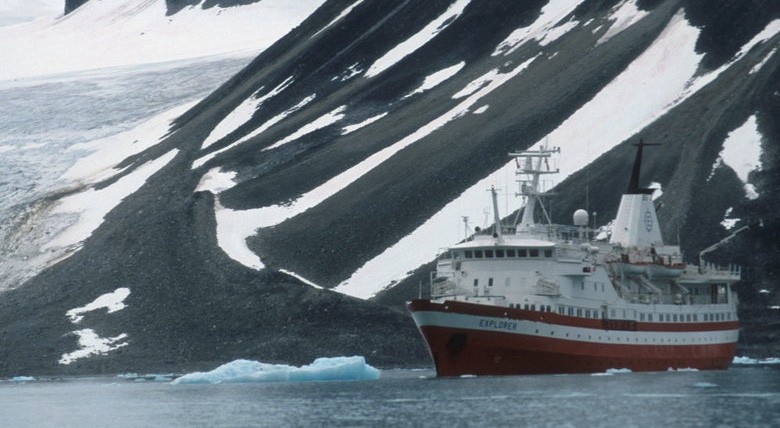 Commissioned in 1969, "Explorer" became the first purpose-built expedition vessel for icy waters. Here from the Magdalene fjord on Svalbard. In 2007, she hit an iceberg in Antarctic and sank. Photo: Thomas Nilsen
Commissioned in 1969, "Explorer" became the first purpose-built expedition vessel for icy waters. Here from the Magdalene fjord on Svalbard. In 2007, she hit an iceberg in Antarctic and sank. Photo: Thomas Nilsen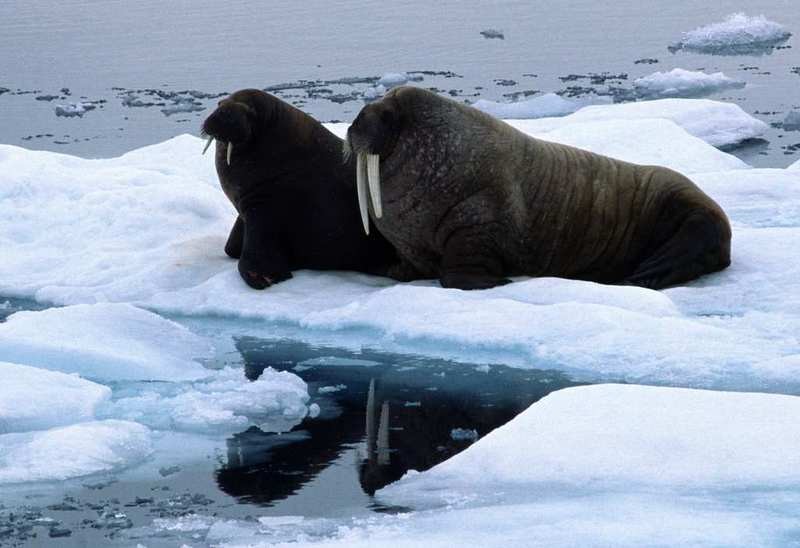 Walrus on an ice floe in the Arctic. Photo: Thomas Nilsen
Walrus on an ice floe in the Arctic. Photo: Thomas Nilsen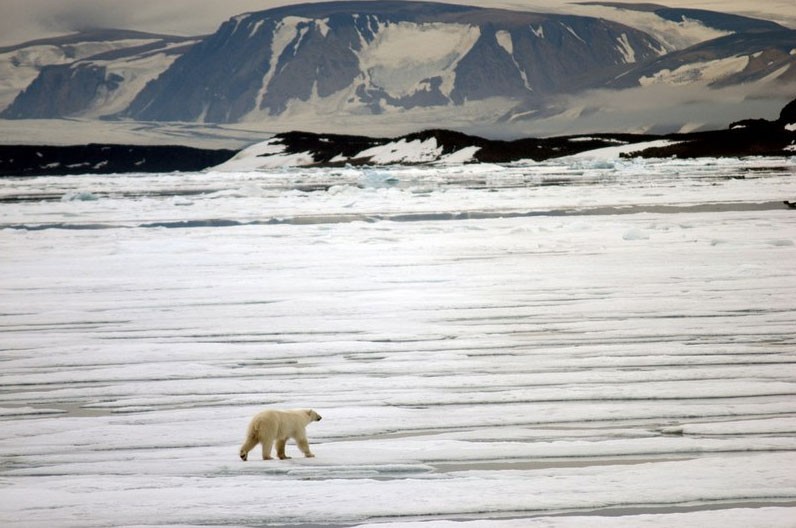 Polar bear on the ice in the Hinlopen Strait. Photo: Thomas Nilsen
Polar bear on the ice in the Hinlopen Strait. Photo: Thomas Nilsen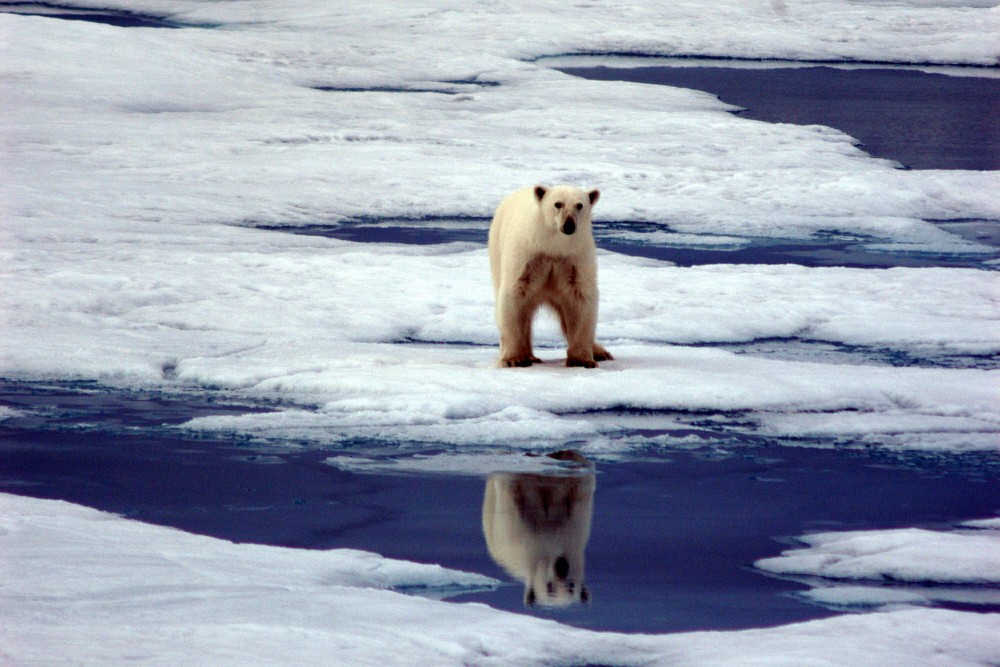 Polar bear on the ice. Photo: Thomas Nilsen
Polar bear on the ice. Photo: Thomas Nilsen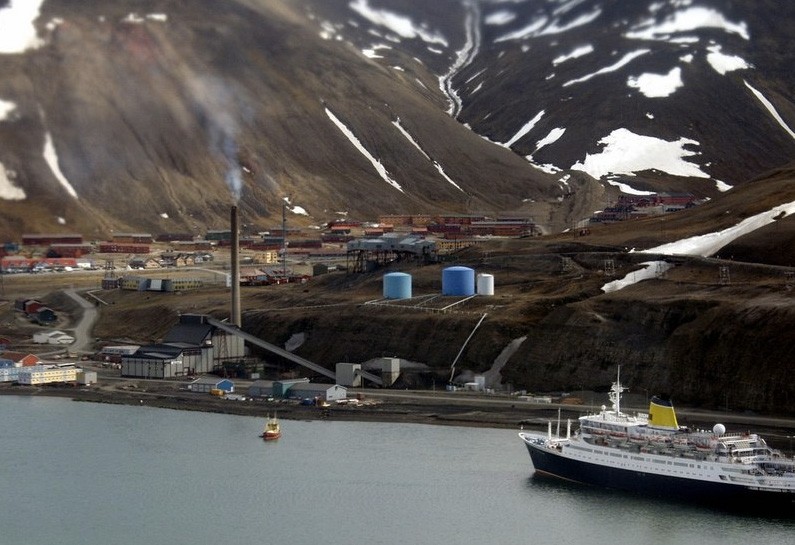 Longyearbyen on Svalbard is the turn-around port for many expedition cruises in the European part of the Arctic. Photo: Thomas Nilsen
Longyearbyen on Svalbard is the turn-around port for many expedition cruises in the European part of the Arctic. Photo: Thomas Nilsen
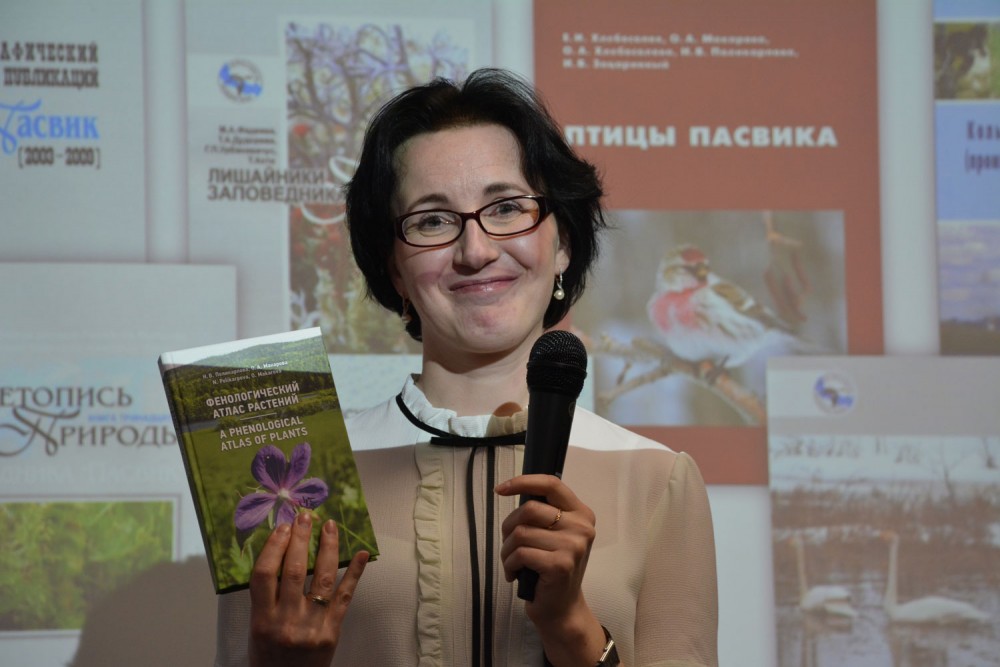 Center representative Natalia Polikarpova. Photo: Atle Staalesen
Center representative Natalia Polikarpova. Photo: Atle Staalesen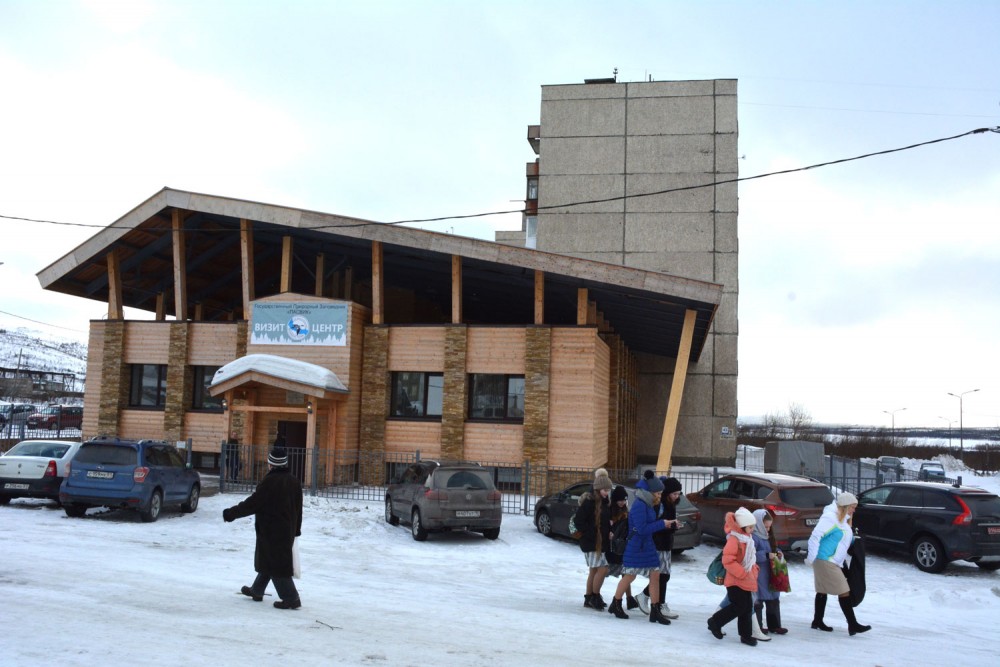 The Center. Photo: Atle Staalesen
The Center. Photo: Atle Staalesen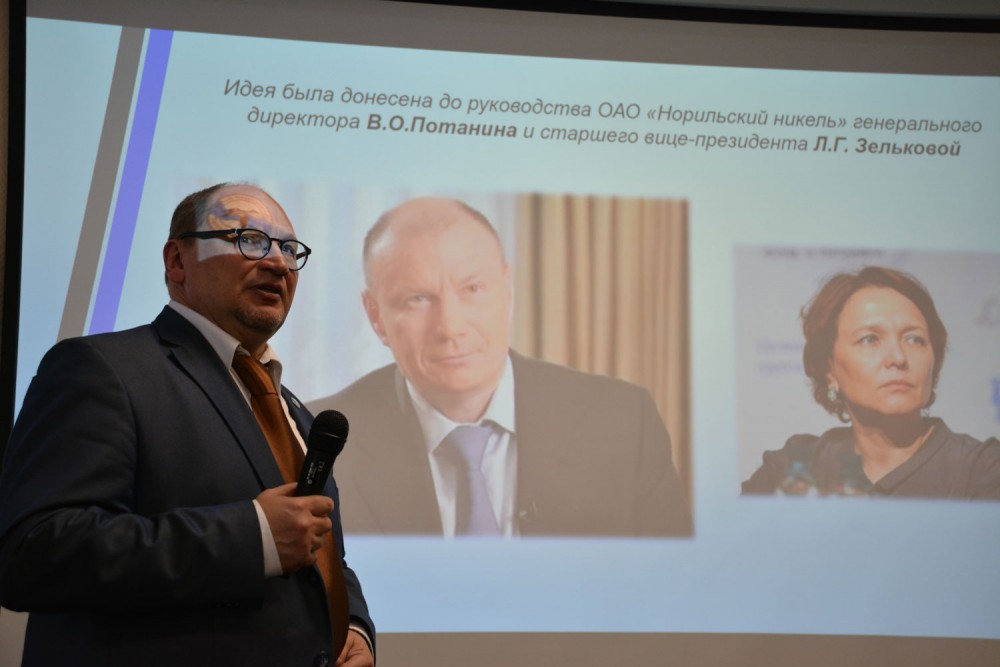 Vladimir Chizhov and Vladimir Potanin. Photo: Atle Staalesen
Vladimir Chizhov and Vladimir Potanin. Photo: Atle Staalesen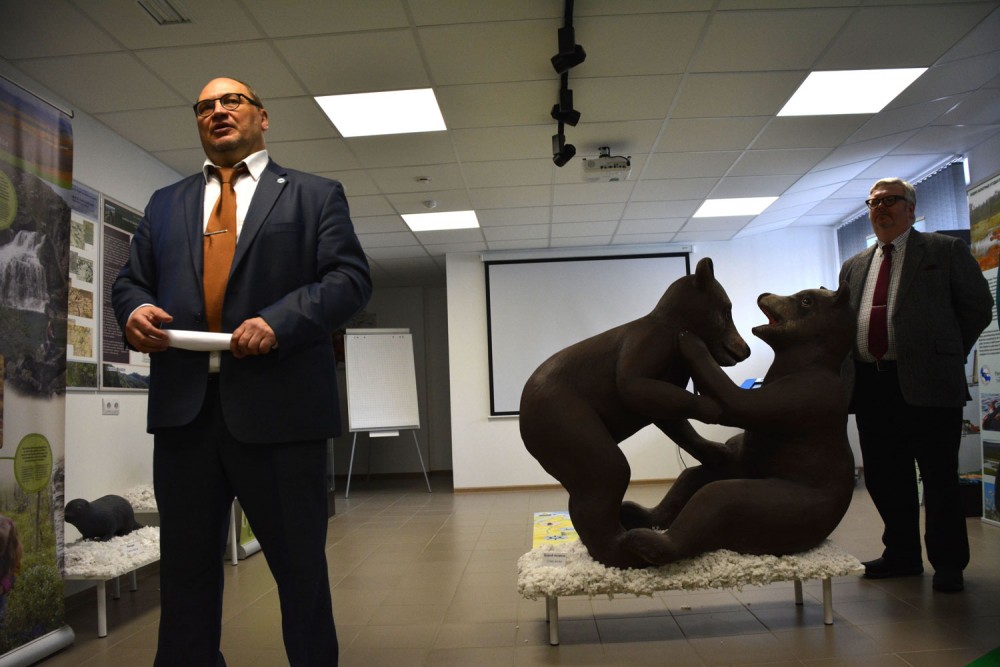 Vladimir Chizhov shows around. Photo: Atle Staalesen
Vladimir Chizhov shows around. Photo: Atle Staalesen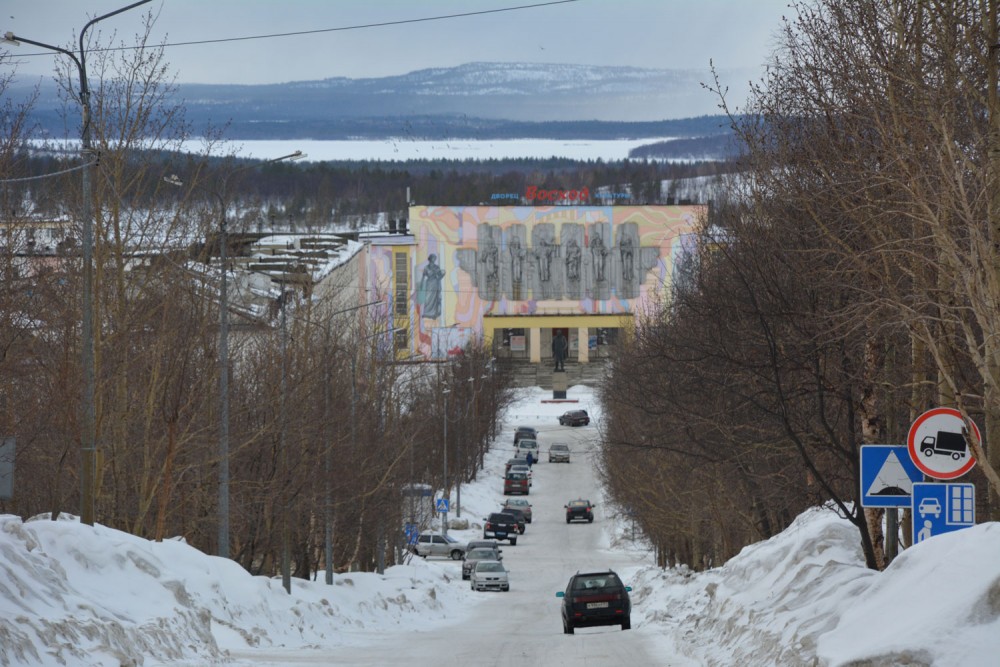 The town of Nikel. Photo: Atle Staalesen
The town of Nikel. Photo: Atle Staalesen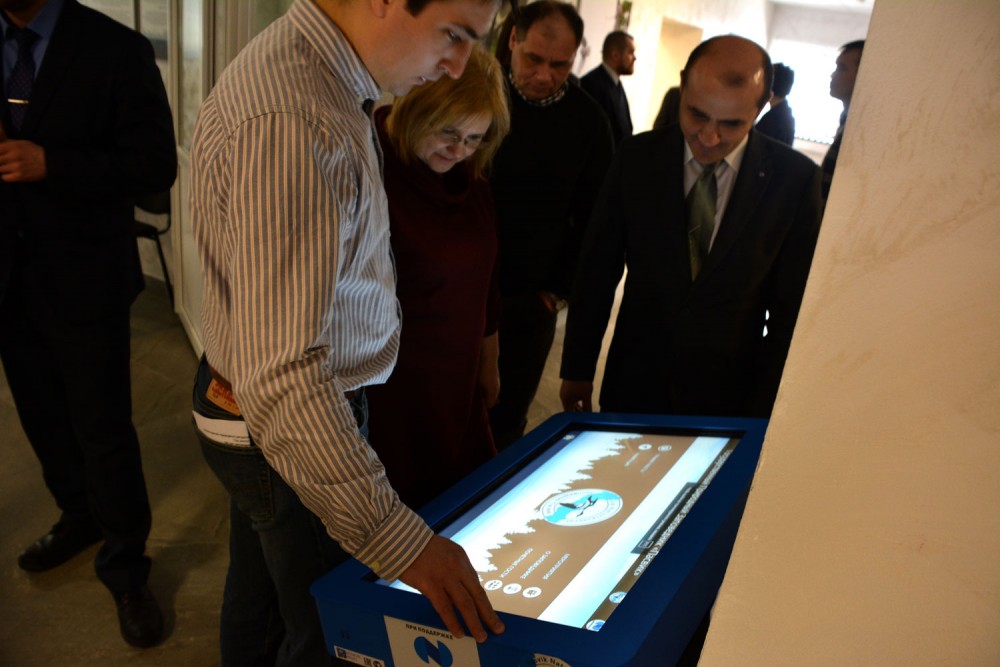 Pasvik Nature Reserve visualized. Photo: Atle Staalesen
Pasvik Nature Reserve visualized. Photo: Atle Staalesen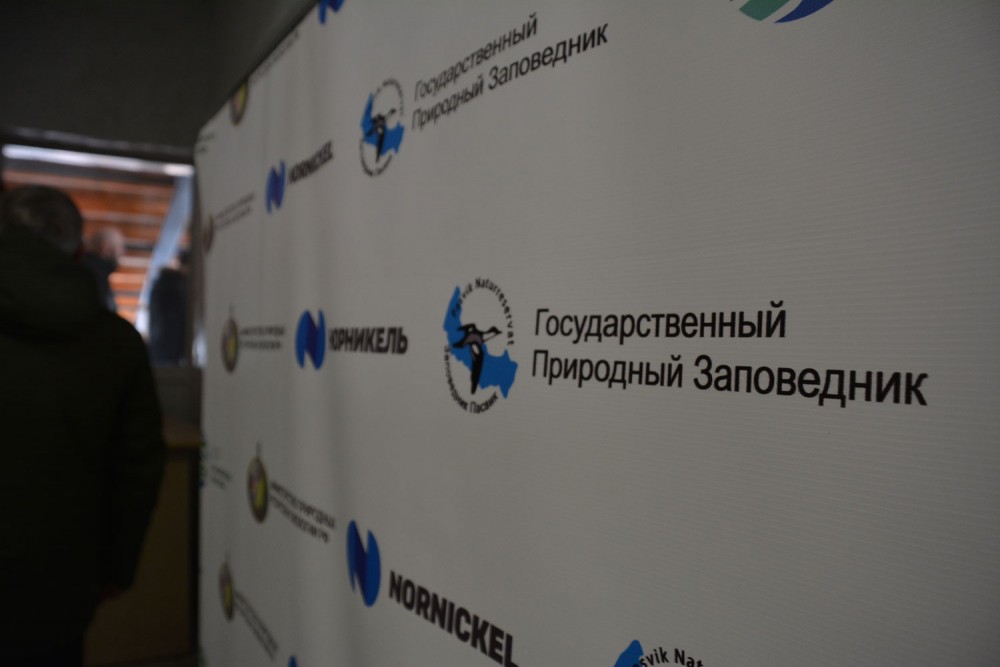 The partners. Photo: Atle Staalesen
The partners. Photo: Atle Staalesen
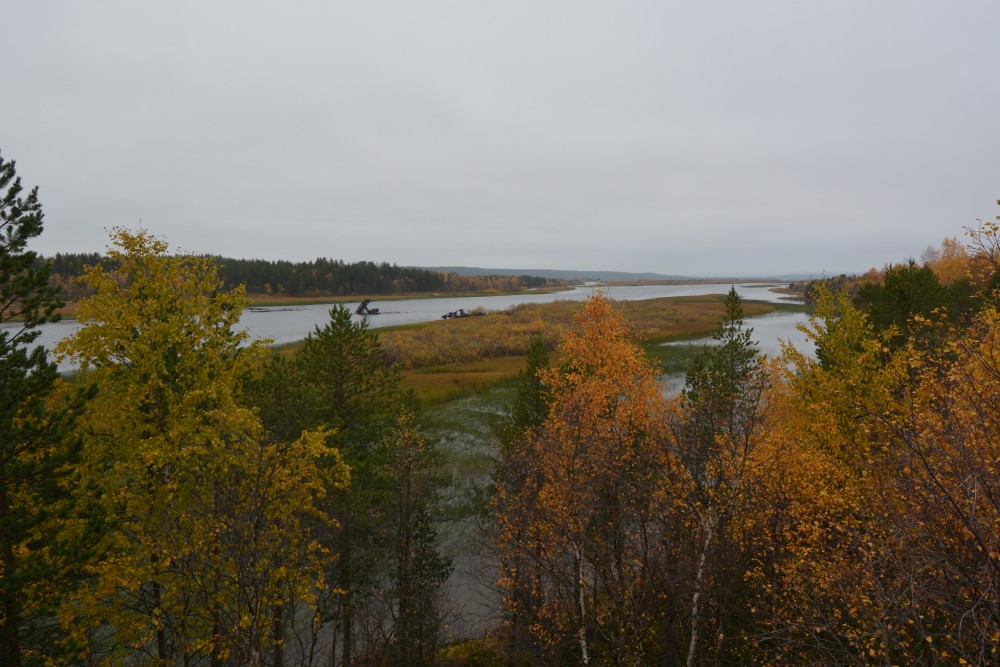 View of the river from the bird-watch tower in the Pasvik zapovednik. Norway on the left side of the river. Photo: Thomas Nilsen
View of the river from the bird-watch tower in the Pasvik zapovednik. Norway on the left side of the river. Photo: Thomas Nilsen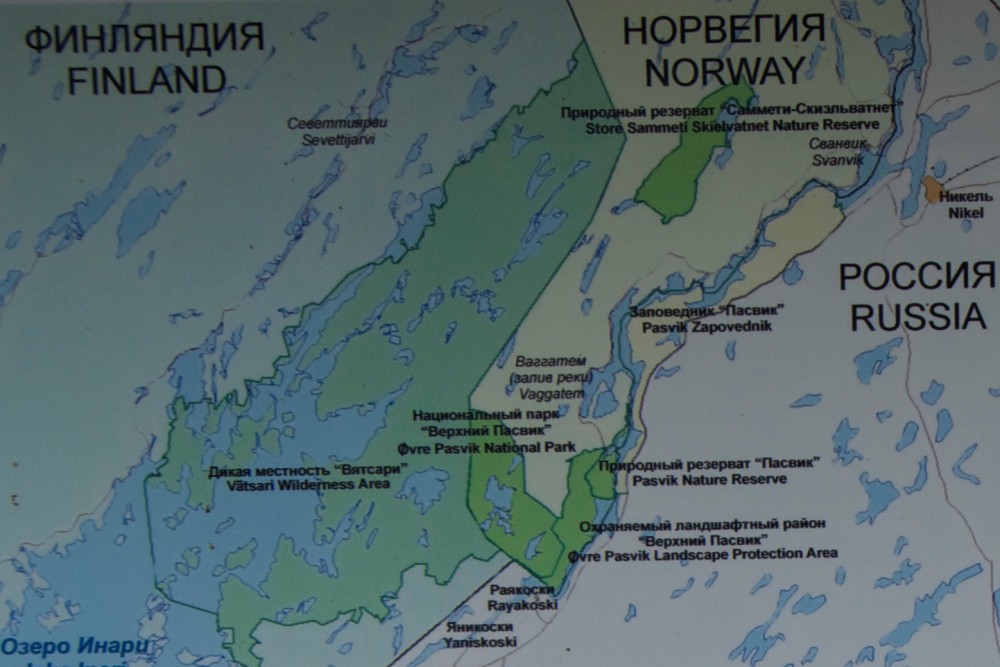 Map of Pasvik Nature Reserve, Øvre Pasvik National Park and Vätisari Wilderness Area in the Russian, Norwegian, Finnish borderland. Photo: Thomas Nilsen
Map of Pasvik Nature Reserve, Øvre Pasvik National Park and Vätisari Wilderness Area in the Russian, Norwegian, Finnish borderland. Photo: Thomas Nilsen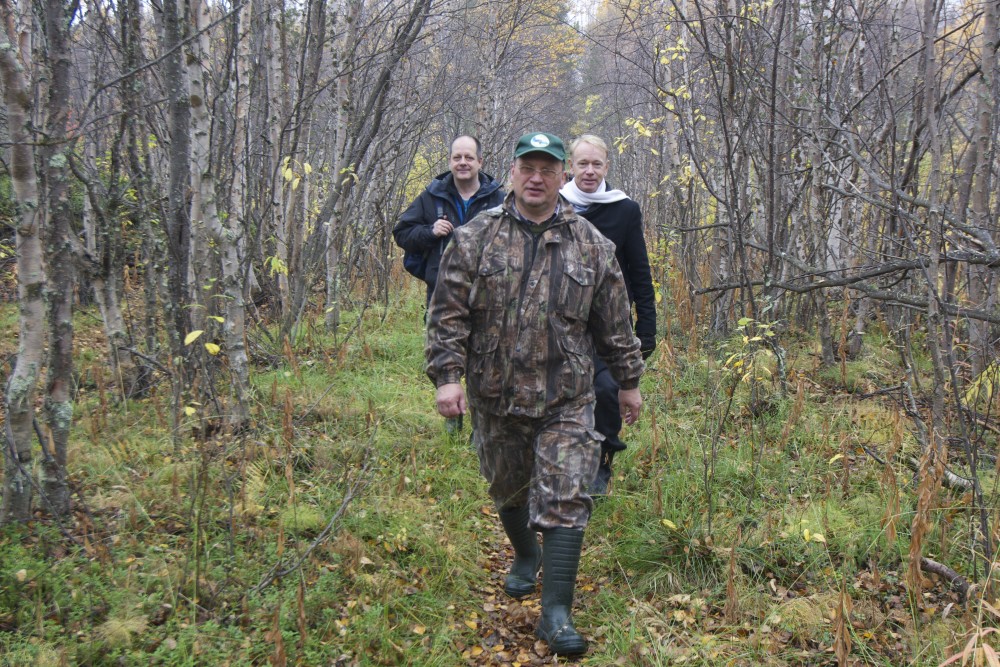 Vladimir Chizov is Director of Pasvik Zapovednik. Photo: Thomas Nilsen
Vladimir Chizov is Director of Pasvik Zapovednik. Photo: Thomas Nilsen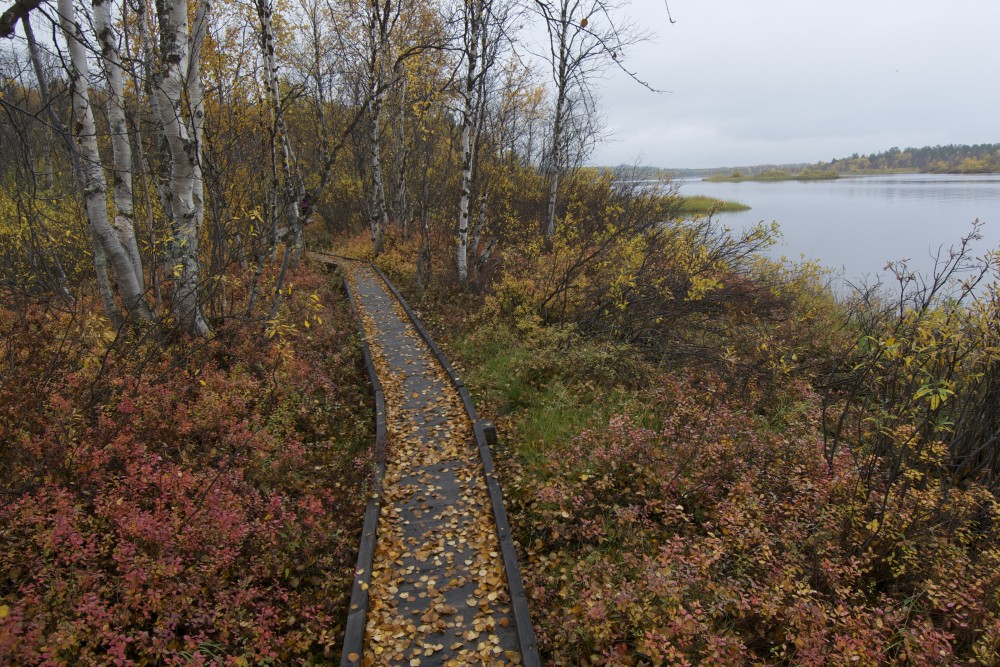 Pasvik zapovednik. Photo: Thomas Nilsen
Pasvik zapovednik. Photo: Thomas Nilsen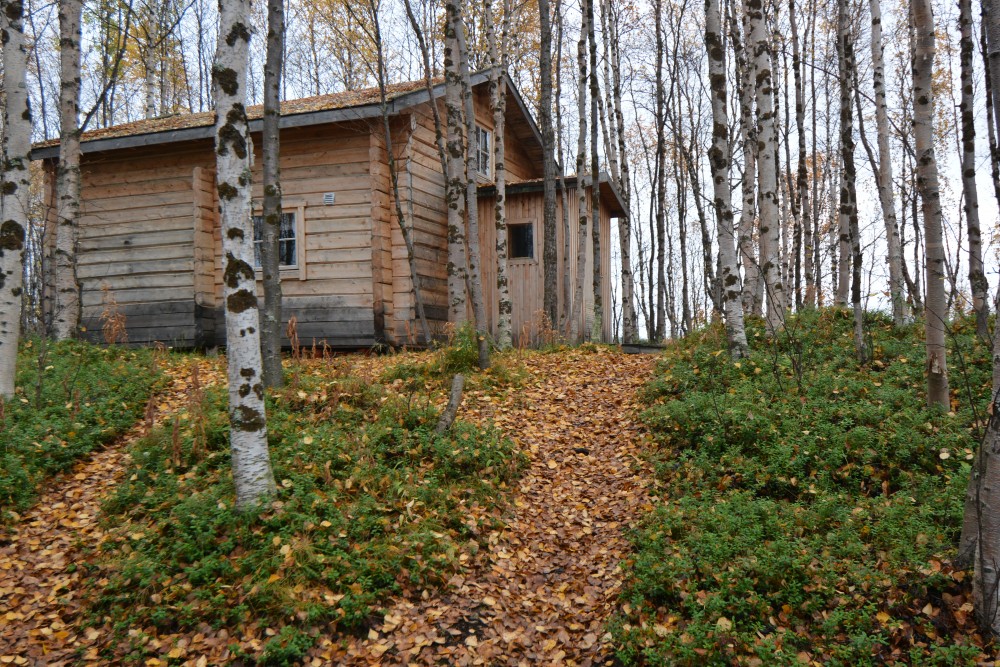 Pasvik zapovednik. Photo: Thomas Nilsen
Pasvik zapovednik. Photo: Thomas Nilsen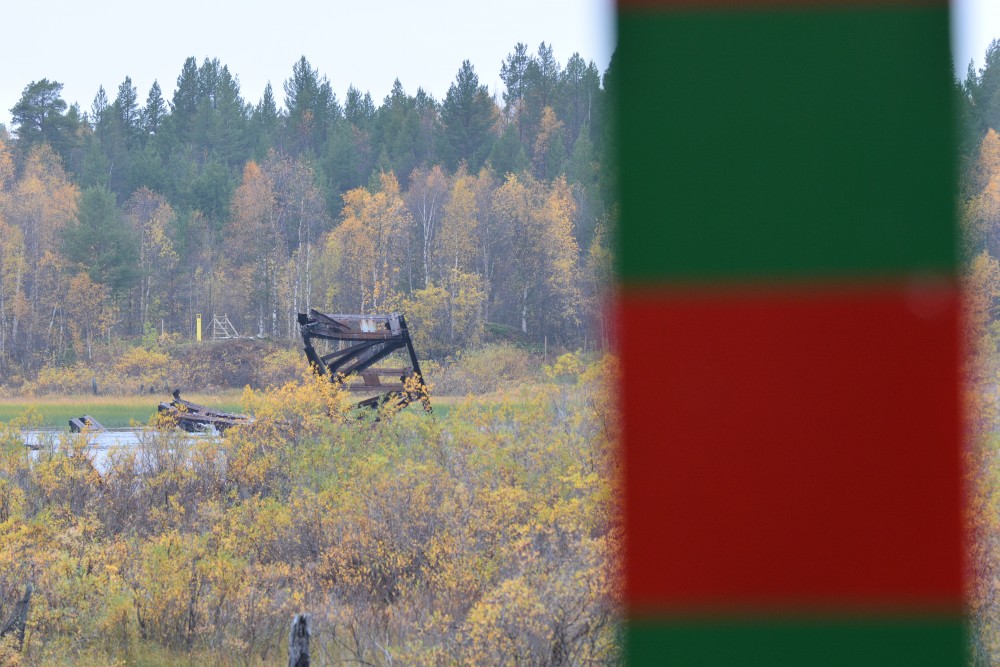 Russian border pole in Pasvik zapovednik. The yellow Norwegian border pole can be spotted on the other side of the river. The old bombed German WWII bridge in the middle. Photo: Thomas Nilsen
Russian border pole in Pasvik zapovednik. The yellow Norwegian border pole can be spotted on the other side of the river. The old bombed German WWII bridge in the middle. Photo: Thomas Nilsen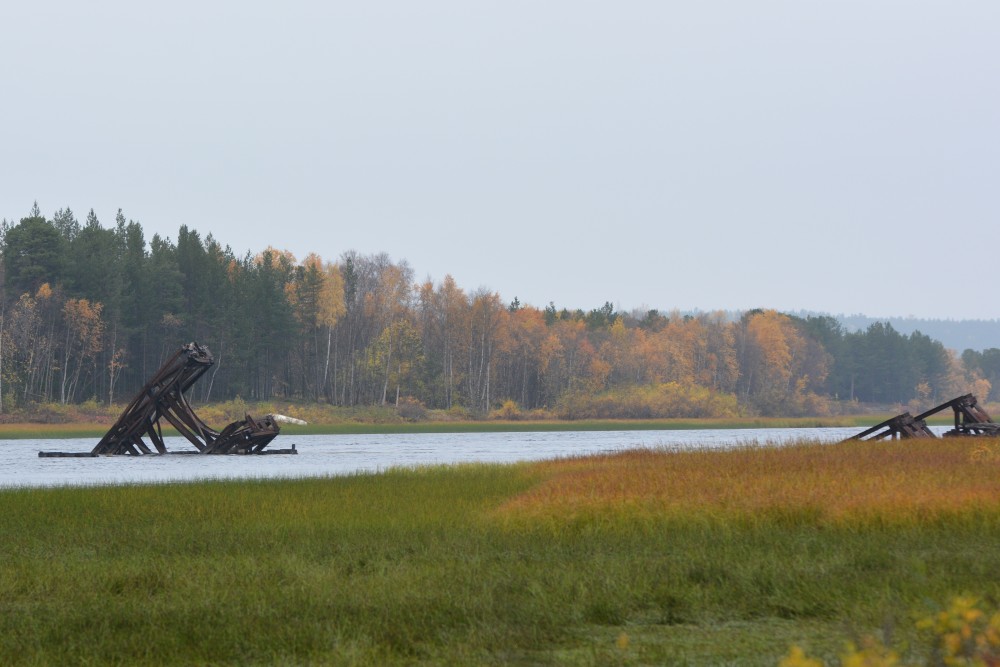 The Pasvik River and an old bridge built by the Germans during Second World War. Norway on the left bank of the river. Photo: Thomas Nilsen
The Pasvik River and an old bridge built by the Germans during Second World War. Norway on the left bank of the river. Photo: Thomas Nilsen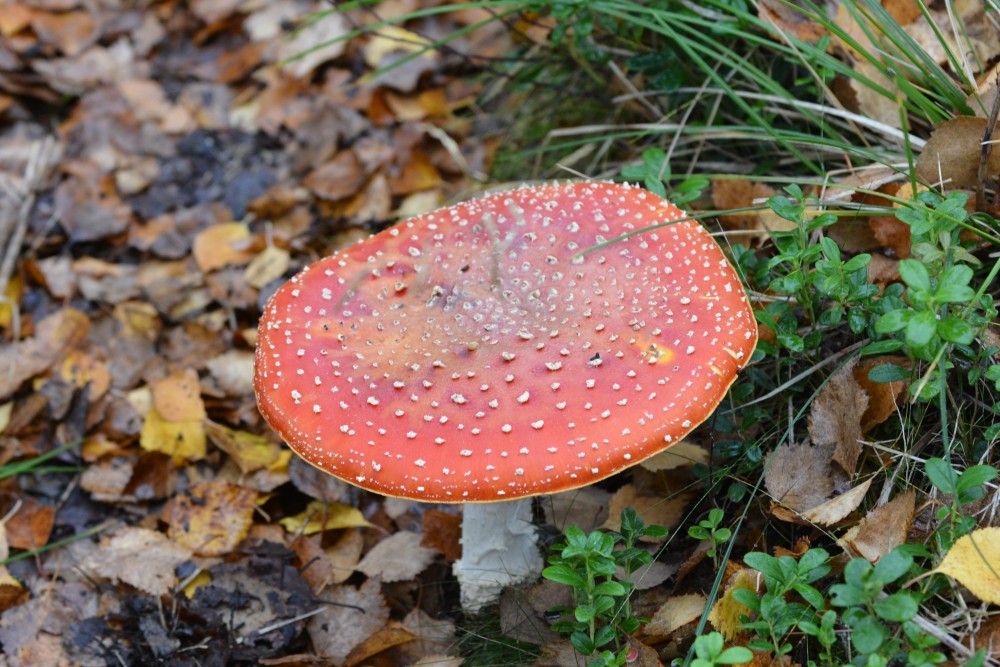 Photo: Thomas Nilsen
Photo: Thomas Nilsen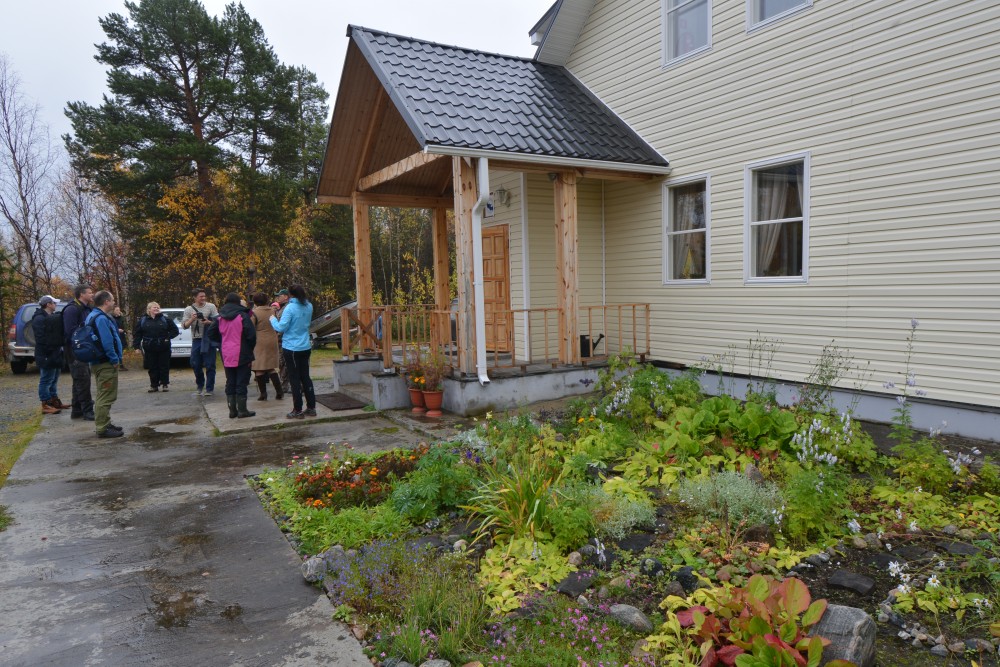 Pasvik zapovednik environmental centre in the village of Rayakoski. Photo: Thomas Nilsen
Pasvik zapovednik environmental centre in the village of Rayakoski. Photo: Thomas Nilsen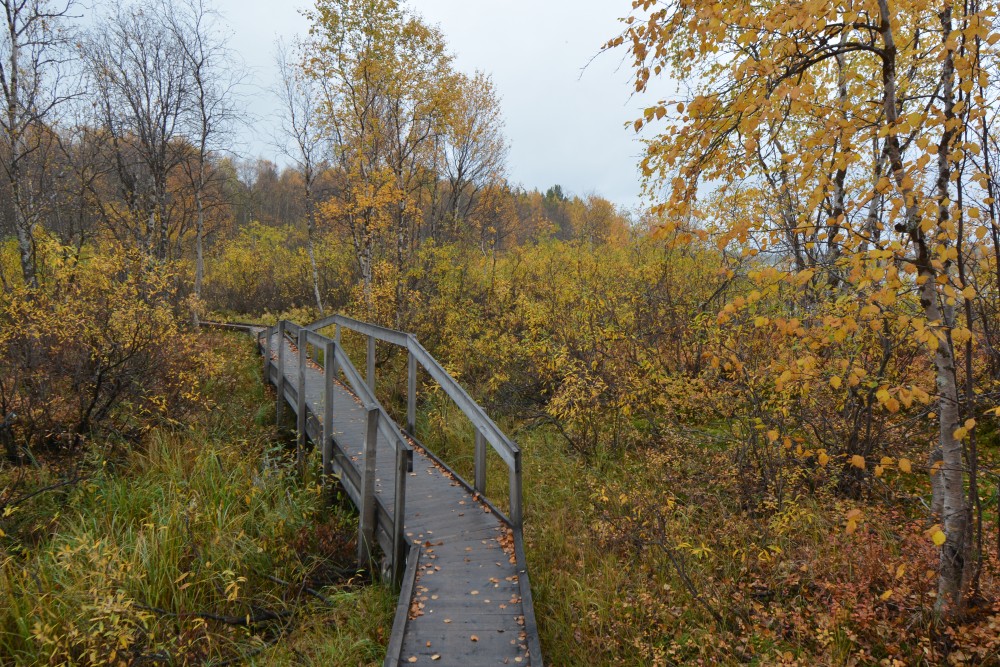 Pasvik zapovednik. Photo: Thomas Nilsen
Pasvik zapovednik. Photo: Thomas Nilsen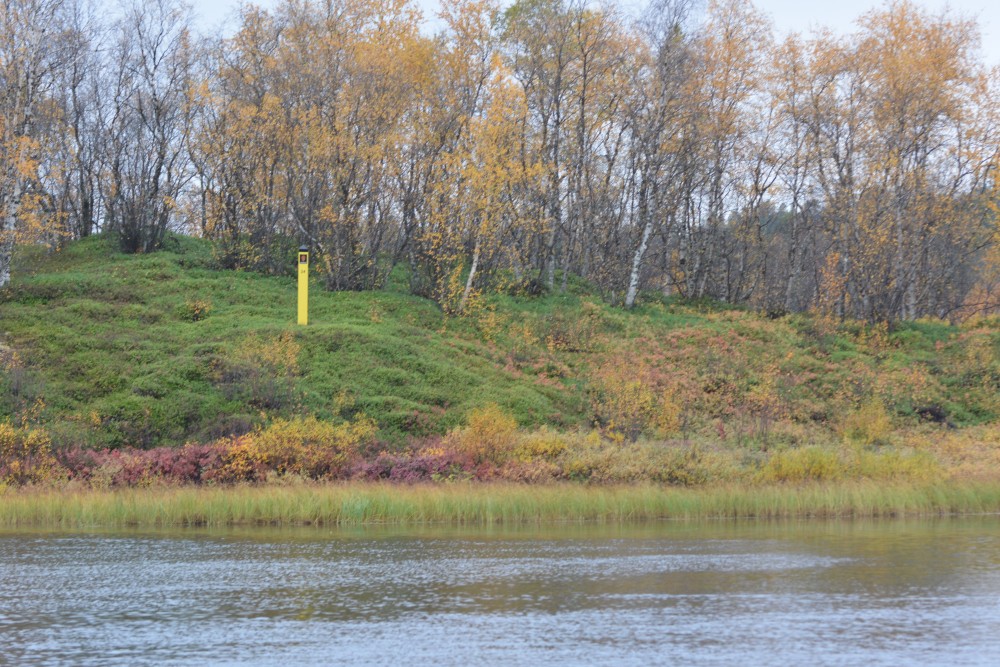 Norwegian border pole seen from the Russian side of the Pasvik River. Photo: Thomas Nilsen
Norwegian border pole seen from the Russian side of the Pasvik River. Photo: Thomas Nilsen Russian border pole. Photo: Thomas Nilsen
Russian border pole. Photo: Thomas Nilsen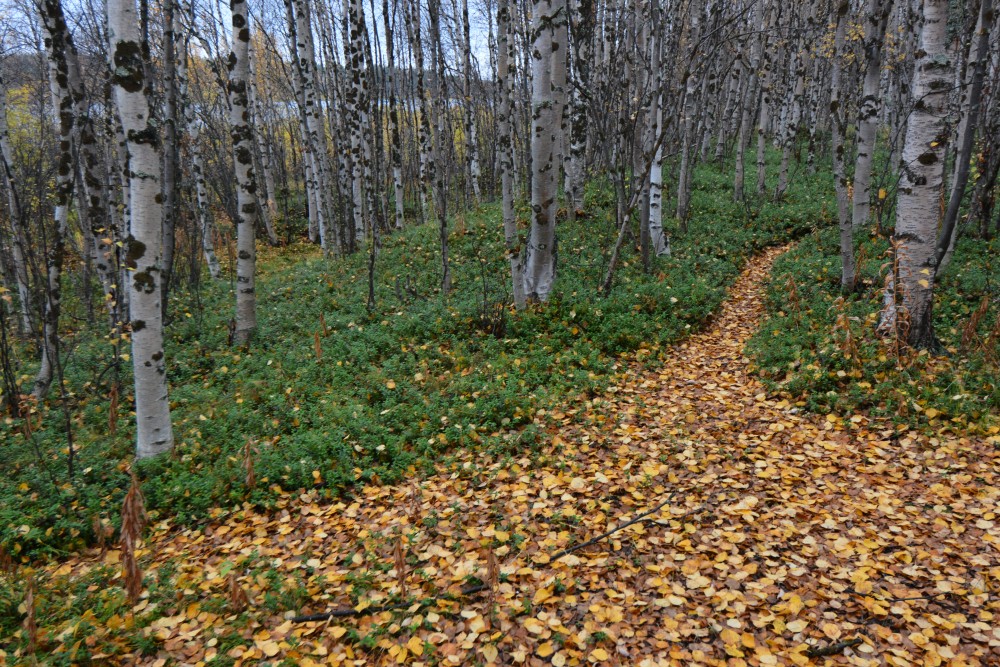 Pasvik zapovednik. Photo: Thomas Nilsen
Pasvik zapovednik. Photo: Thomas Nilsen
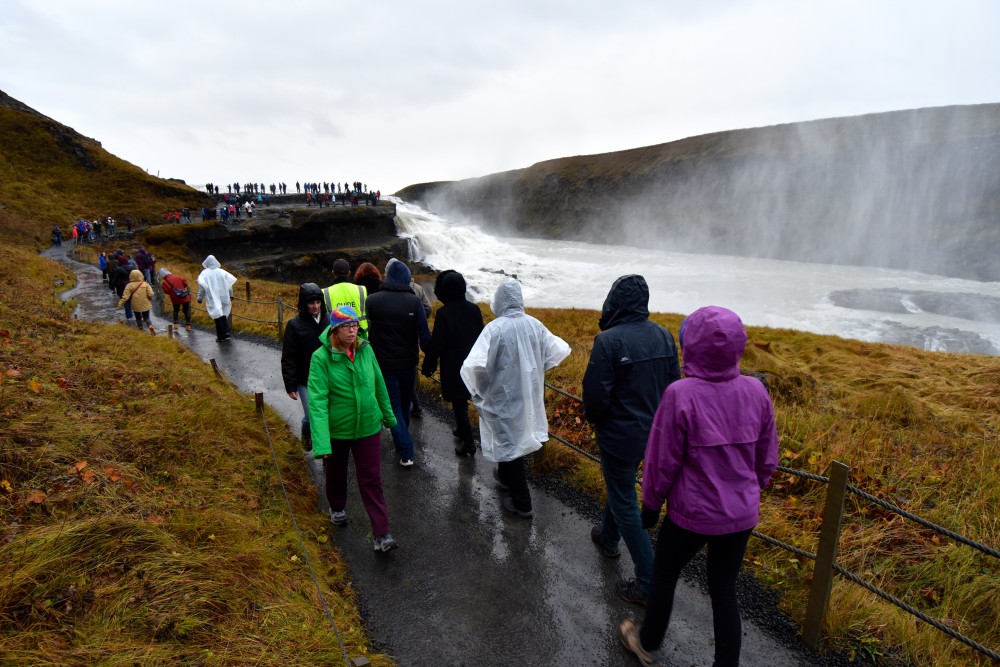 Водопад Гудльфосс. Начиная с 2009 года рост числа туристов, посещающих Исландию, доходил до 40 процентов в год. Фото: Томас Нильсен
Водопад Гудльфосс. Начиная с 2009 года рост числа туристов, посещающих Исландию, доходил до 40 процентов в год. Фото: Томас Нильсен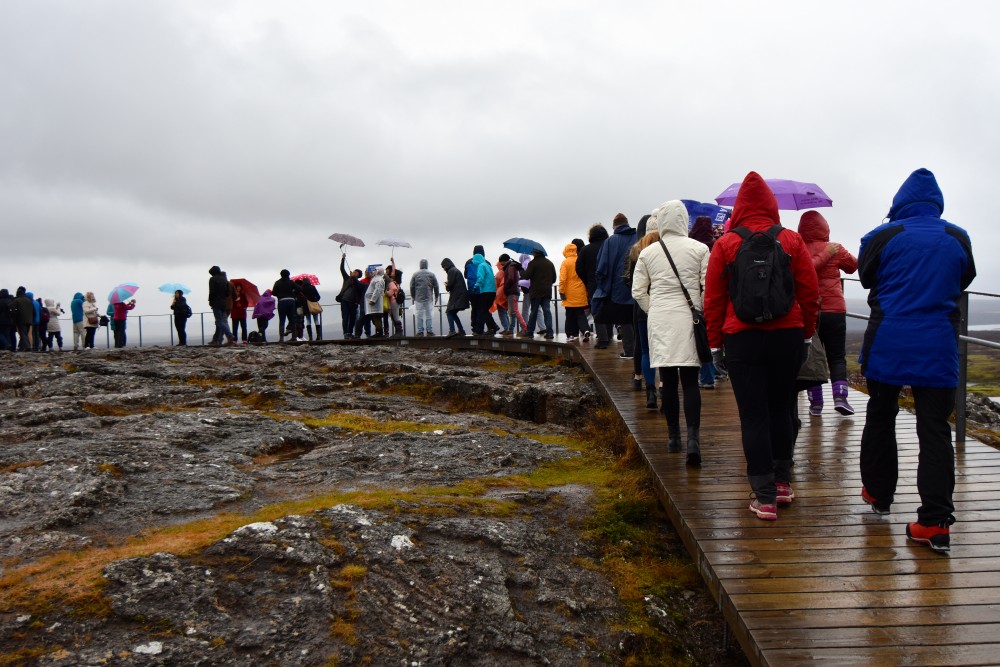 В 2016 году Исландию посетило более 330 тысяч американских туристов – больше, чем население Исландии. Фото: Томас Нильсен
В 2016 году Исландию посетило более 330 тысяч американских туристов – больше, чем население Исландии. Фото: Томас Нильсен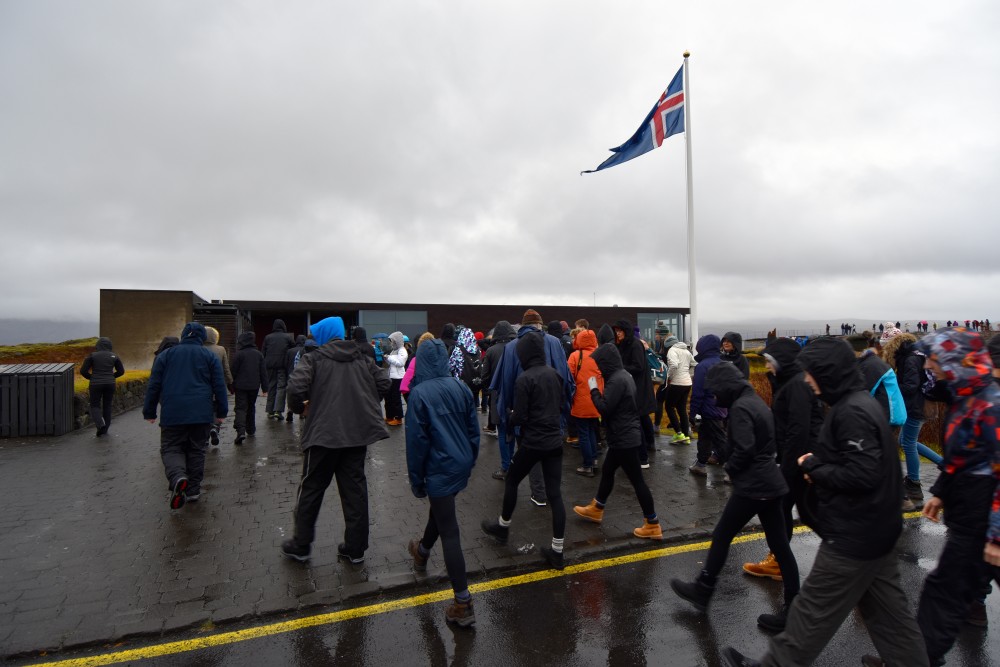 2016 поставит очередной рекорд – ожидается, что Исландию посетит 1,8 миллиона туристов. Фото: Томас Нильсен
2016 поставит очередной рекорд – ожидается, что Исландию посетит 1,8 миллиона туристов. Фото: Томас Нильсен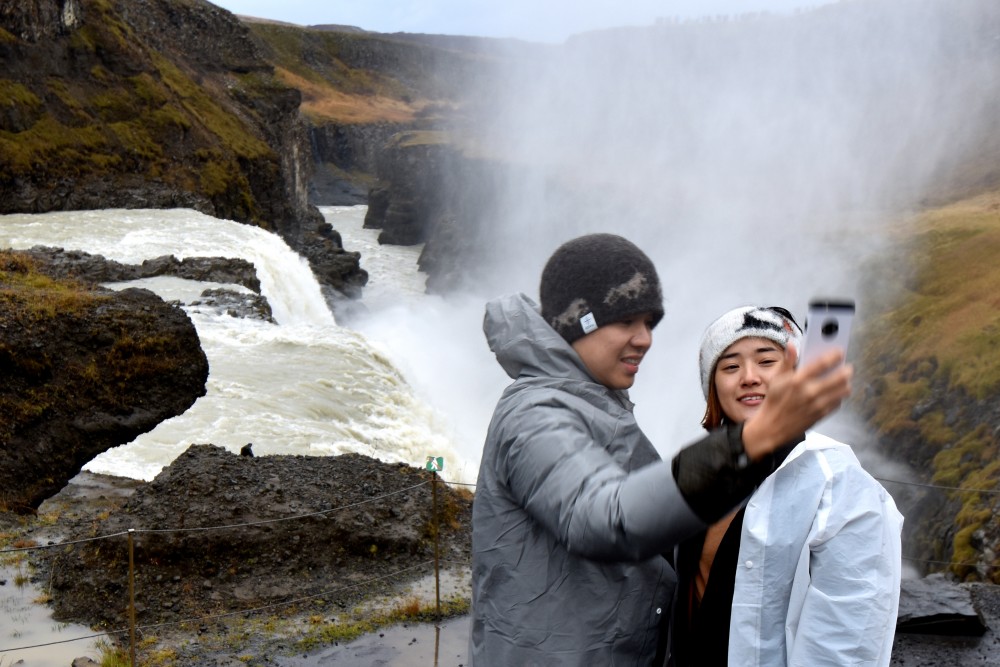 В обязательную программу входит селфи на фоне водопада Гюдльфосс. Фото: Томас Нильсен
В обязательную программу входит селфи на фоне водопада Гюдльфосс. Фото: Томас Нильсен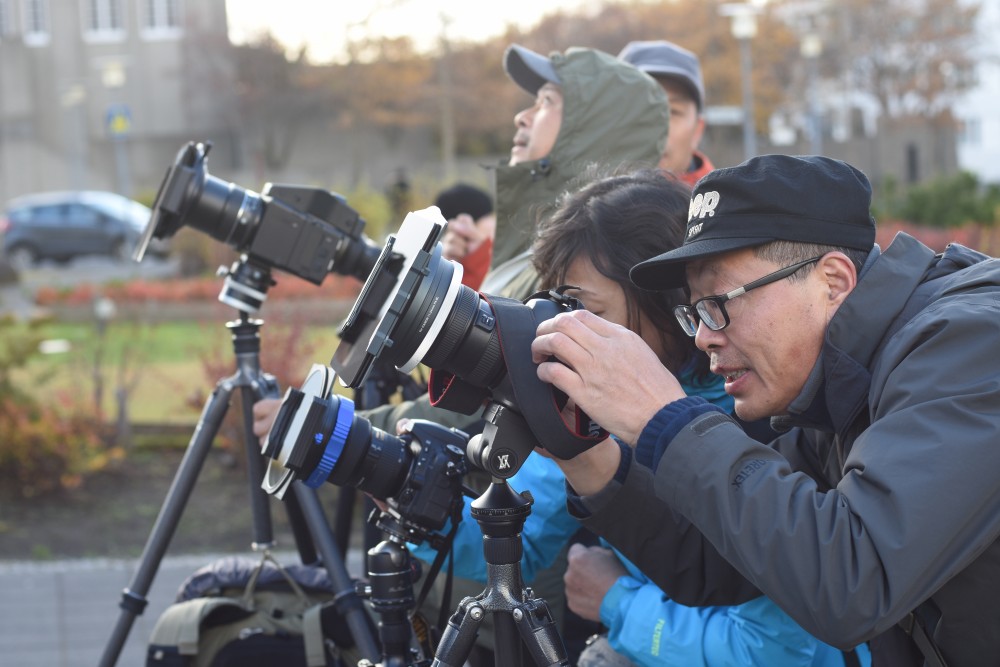 Азиатские туристы в Рейкьявике. Фото: Томас Нильсен
Азиатские туристы в Рейкьявике. Фото: Томас Нильсен В ожидании выброса воды и пара из гейзера. Фото: Томас Нильсен
В ожидании выброса воды и пара из гейзера. Фото: Томас Нильсен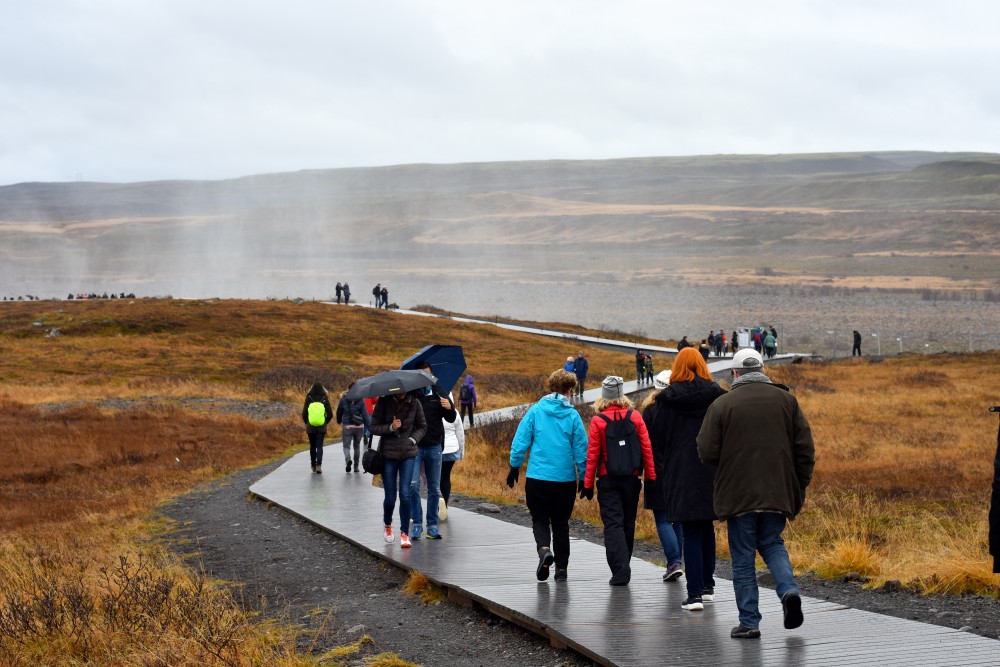 Для защиты хрупкого растительного покрова построены пешеходные дорожки. Фото: Томас Нильсен
Для защиты хрупкого растительного покрова построены пешеходные дорожки. Фото: Томас Нильсен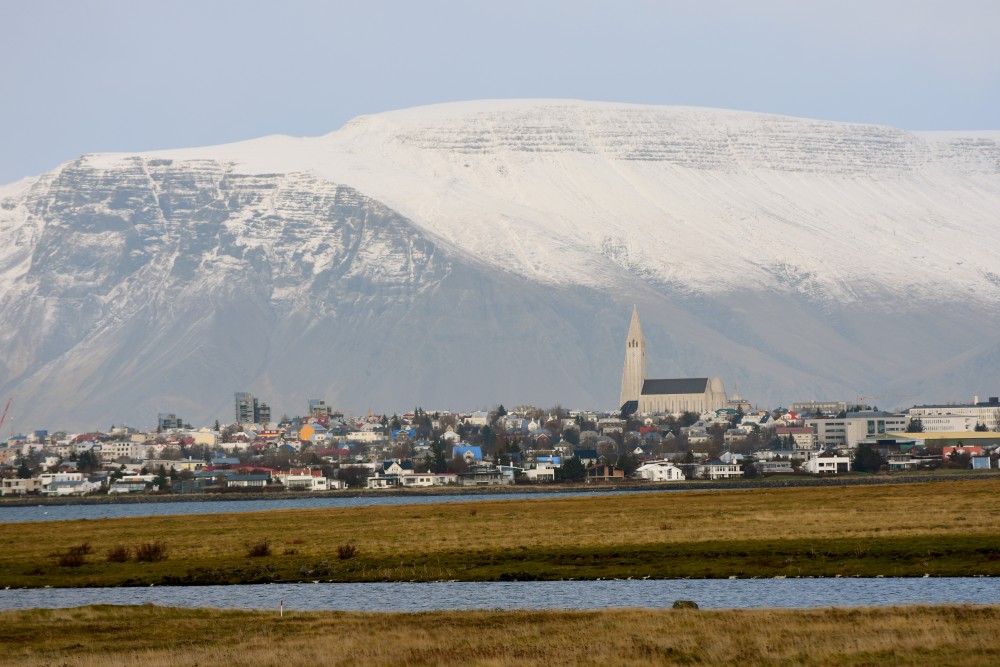 Столица Исландии Рейкьявик (в переводе «дымящаяся бухта»). Фото: Томас Нильсен
Столица Исландии Рейкьявик (в переводе «дымящаяся бухта»). Фото: Томас Нильсен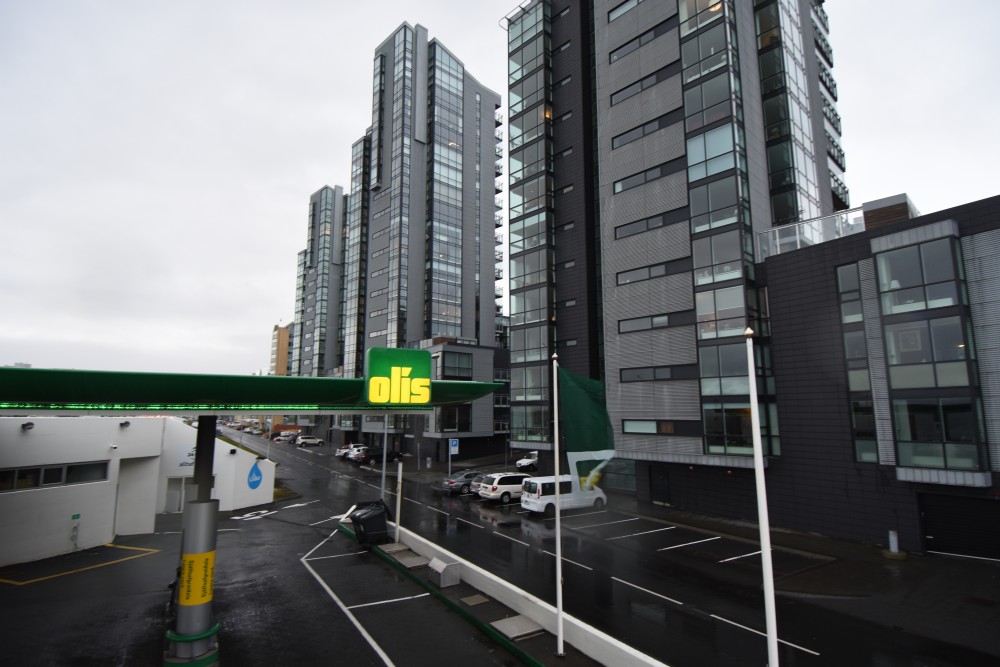 В Рейкьявике наблюдается значительный рост стоимости жилья. Нужны новые жилые дома. Фото: Томас Нильсен
В Рейкьявике наблюдается значительный рост стоимости жилья. Нужны новые жилые дома. Фото: Томас Нильсен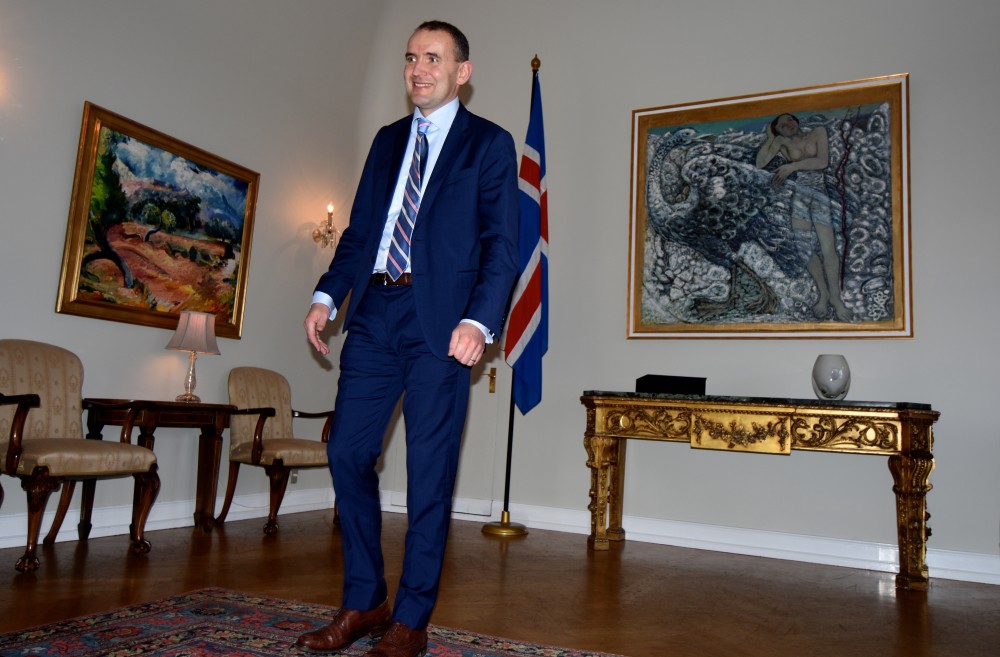 Президент Исландии Гудни Торласиус Йоханнессон в своей резиденции Бессастадир недалеко от Рейкьявика. Фото: Томас Нильсен
Президент Исландии Гудни Торласиус Йоханнессон в своей резиденции Бессастадир недалеко от Рейкьявика. Фото: Томас Нильсен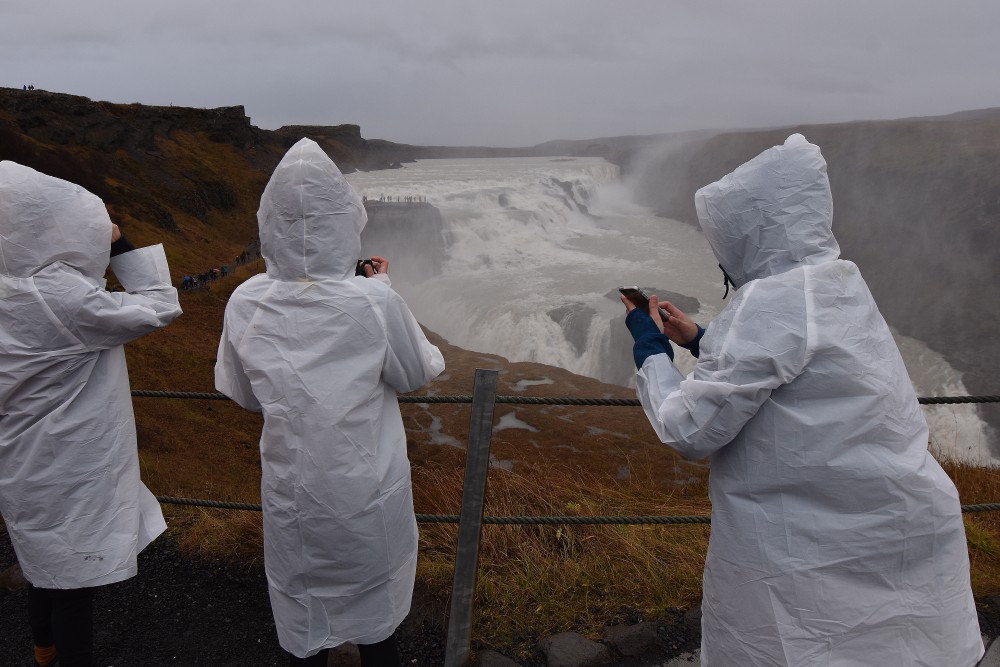 Туристы у водопада Гюдльфосс. Фото: Томас Нильсен
Туристы у водопада Гюдльфосс. Фото: Томас Нильсен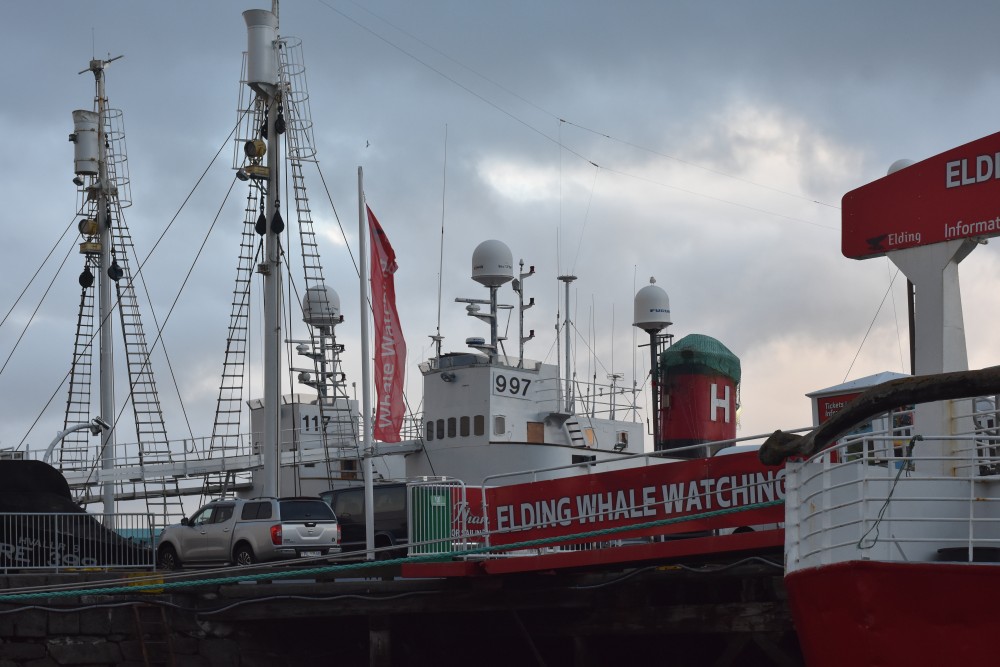 Конфликт интересов? Судно для наблюдения за китами и китобойное судно по разные стороны причала в порту Рейкьявика. Фото: Томас Нильсен
Конфликт интересов? Судно для наблюдения за китами и китобойное судно по разные стороны причала в порту Рейкьявика. Фото: Томас Нильсен Линия горизонта в Рейкьявике усеяна строительными кранами. Фото: Томас Нильсен
Линия горизонта в Рейкьявике усеяна строительными кранами. Фото: Томас Нильсен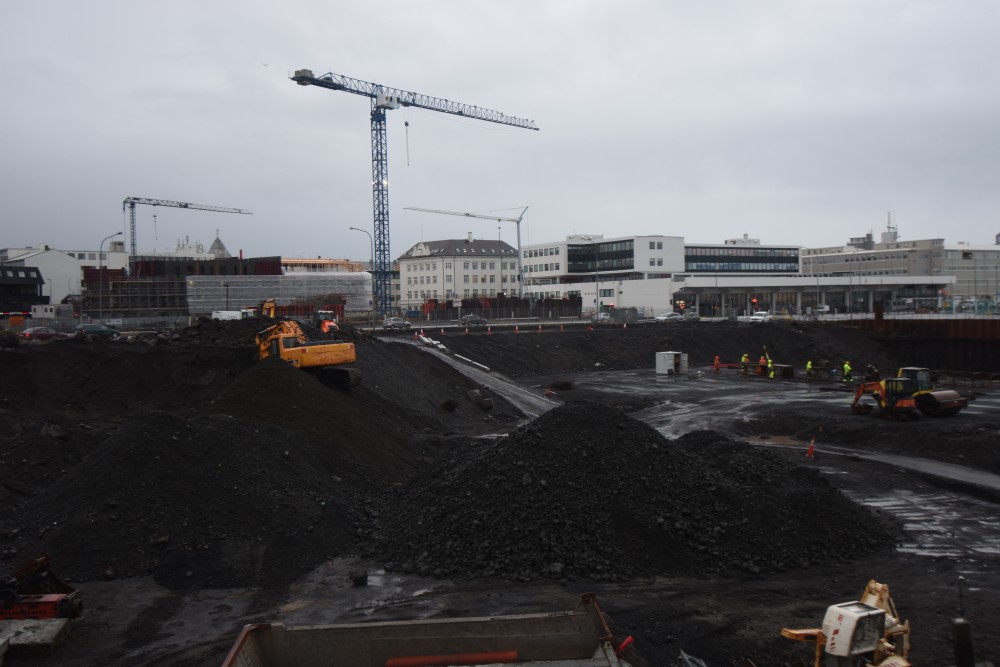 Строительство огромной роскошной гостиницы по соседству с концертным залом и конференц-центром «Харпа» в Рейкьявике. Фото: Томас Нильсен
Строительство огромной роскошной гостиницы по соседству с концертным залом и конференц-центром «Харпа» в Рейкьявике. Фото: Томас Нильсен Водопад Гюдльфосс. Фото: Томас Нильсен
Водопад Гюдльфосс. Фото: Томас Нильсен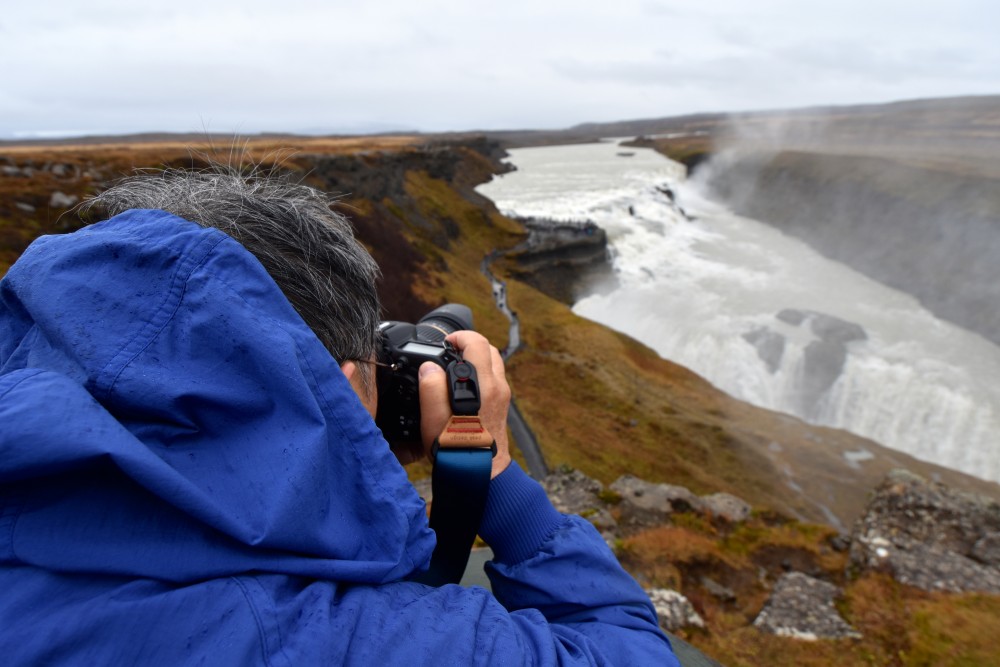 Водопад Гюдльфосс. Фото: Томас Нильсен
Водопад Гюдльфосс. Фото: Томас Нильсен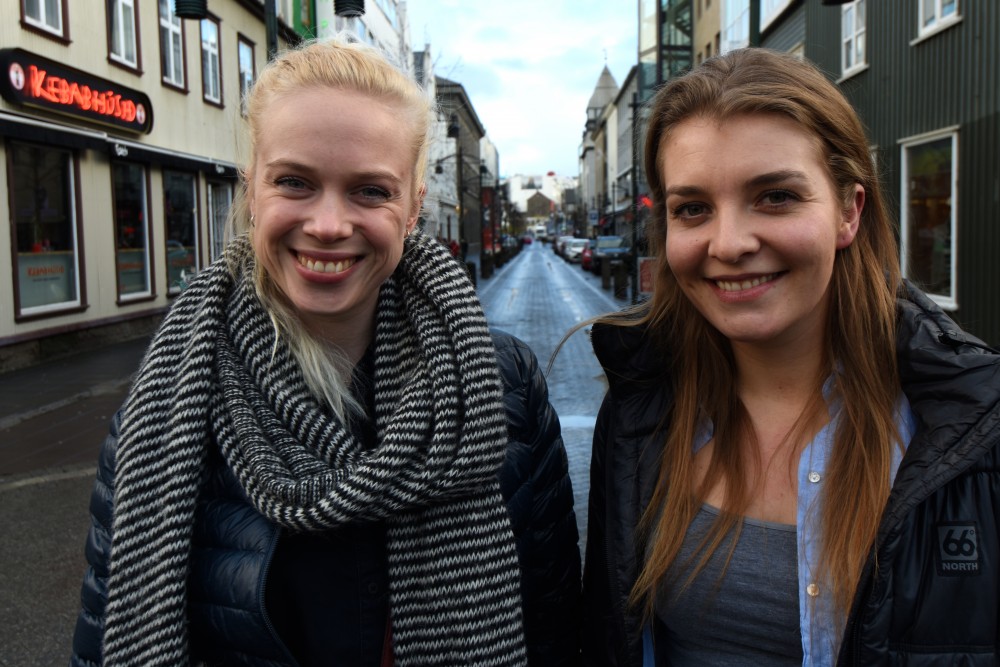 Гудмунда Палмадоттир (слева) и Петра Фриманндоттир считают, что жилье в Рейкьявике слишком дорого для молодых исландцев. Фото: Томас Нильсен
Гудмунда Палмадоттир (слева) и Петра Фриманндоттир считают, что жилье в Рейкьявике слишком дорого для молодых исландцев. Фото: Томас Нильсен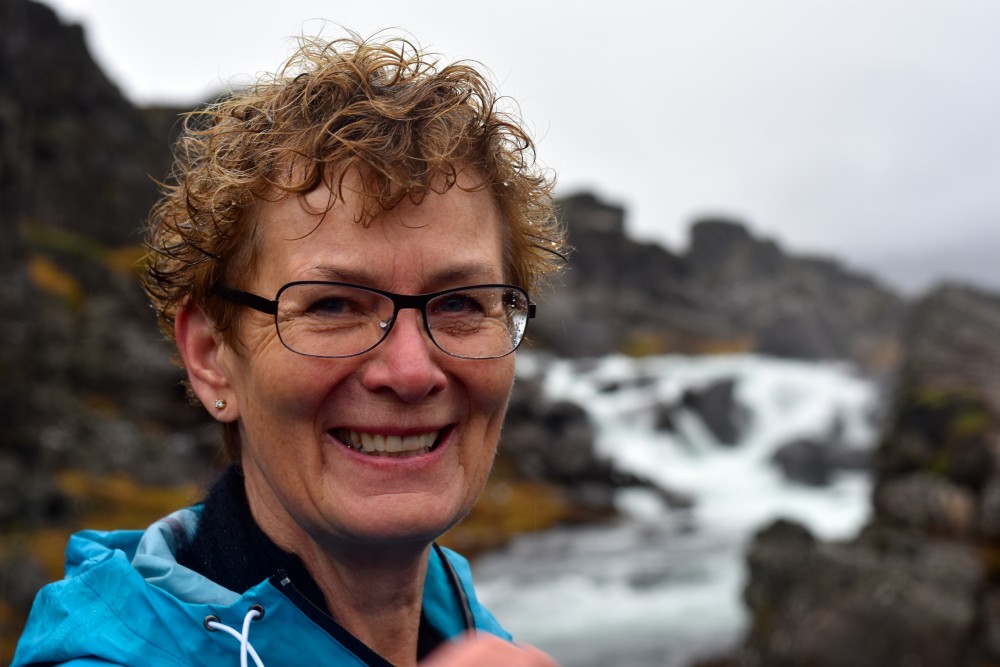 Сигрун Стефансдоттир учится на гида. Фото: Томас Нильсен
Сигрун Стефансдоттир учится на гида. Фото: Томас Нильсен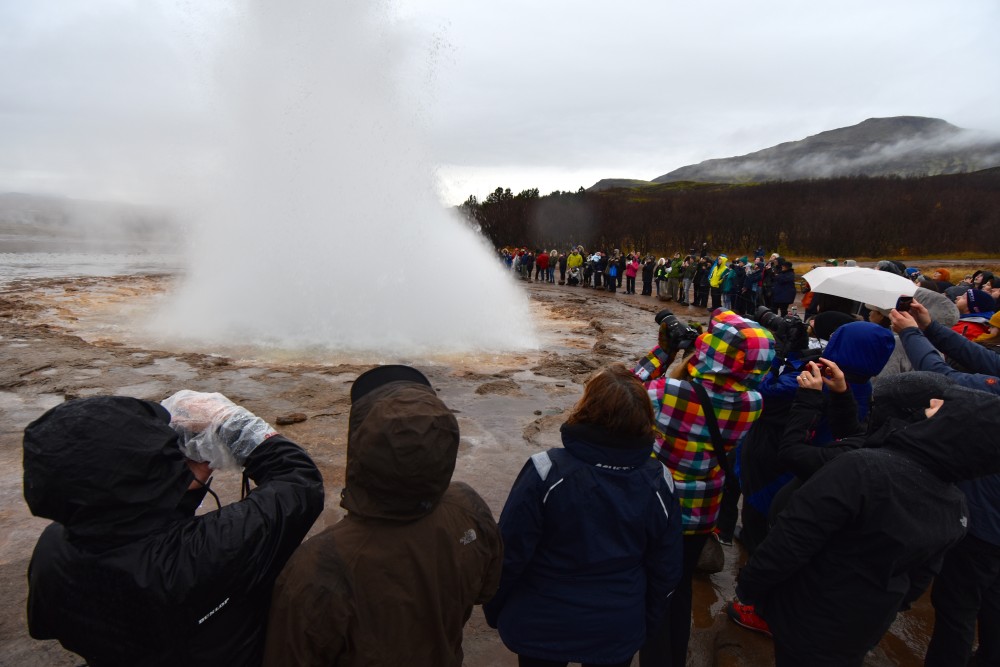 В долину гейзеров один за одним прибывают туристические автобусы, чтобы посмотреть на выбросы воды и пара из гейзеров. Мало где в мире можно увидеть такую красоту. Фото: Томас Нильсен
В долину гейзеров один за одним прибывают туристические автобусы, чтобы посмотреть на выбросы воды и пара из гейзеров. Мало где в мире можно увидеть такую красоту. Фото: Томас Нильсен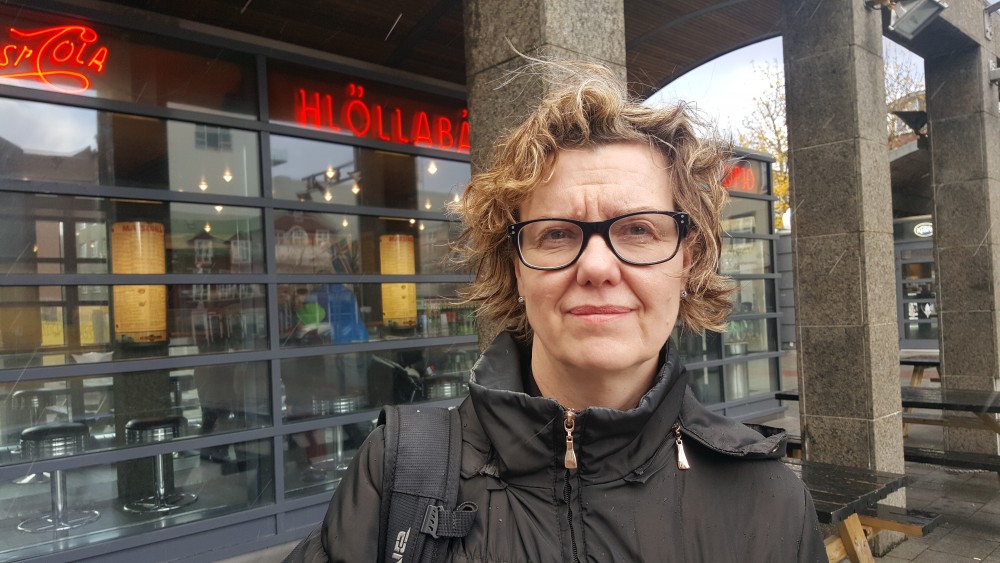 Стейнунн Храфнсдоттир. Фото: Томас Нильсен
Стейнунн Храфнсдоттир. Фото: Томас Нильсен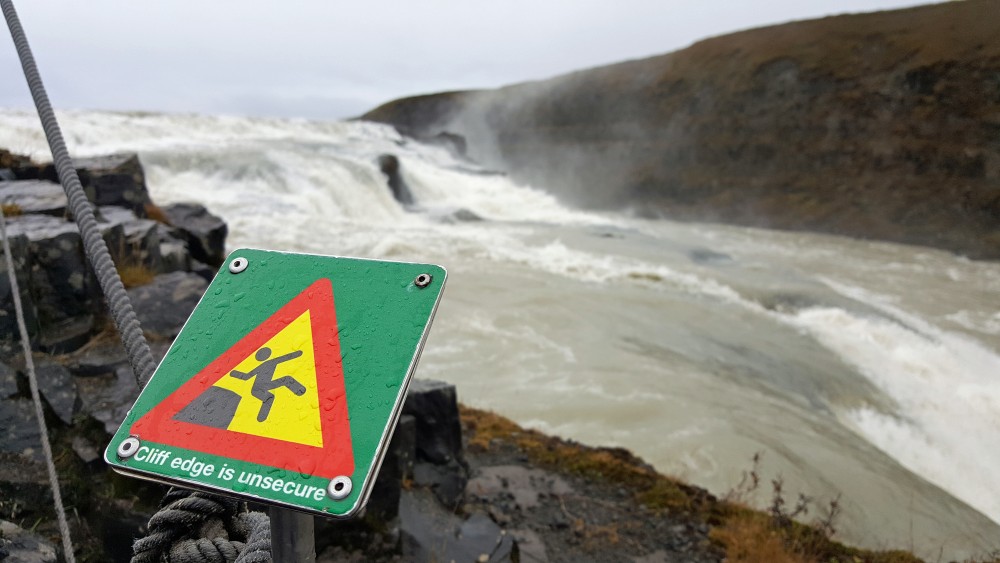 Предупреждающий знак на водопаде Гюдльфосс. Фото: Томас Нильсен
Предупреждающий знак на водопаде Гюдльфосс. Фото: Томас Нильсен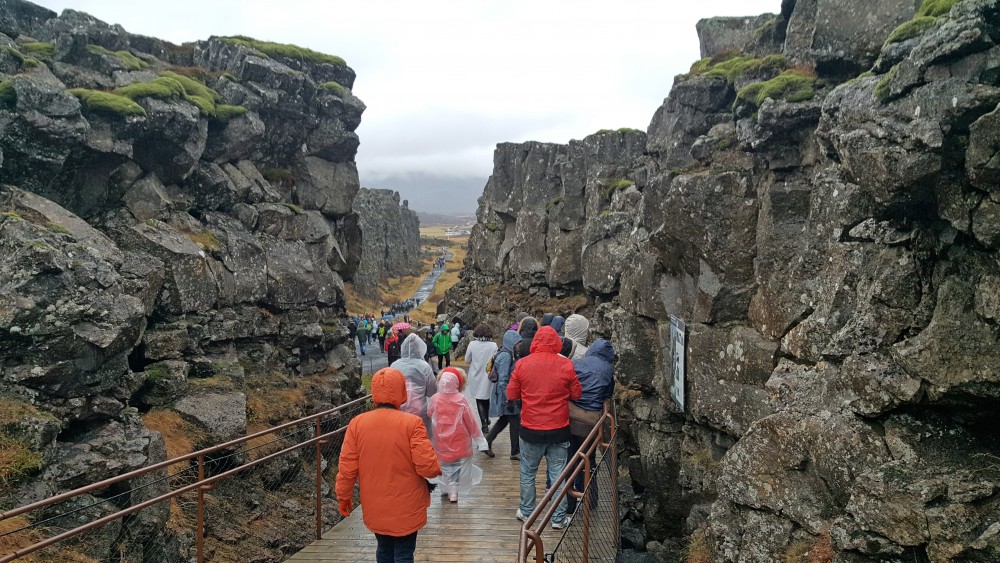 Толпы народа в Национальном парке Тингведлир, одной из самых популярных точек так называемого «Золотого кольца», объединяющего туристические достопримечательности недалеко от Рейкьявика. Фото: Томас Нильсен
Толпы народа в Национальном парке Тингведлир, одной из самых популярных точек так называемого «Золотого кольца», объединяющего туристические достопримечательности недалеко от Рейкьявика. Фото: Томас Нильсен Резиденция президента Исландии Бессастадир. Фото: Томас Нильсен
Резиденция президента Исландии Бессастадир. Фото: Томас Нильсен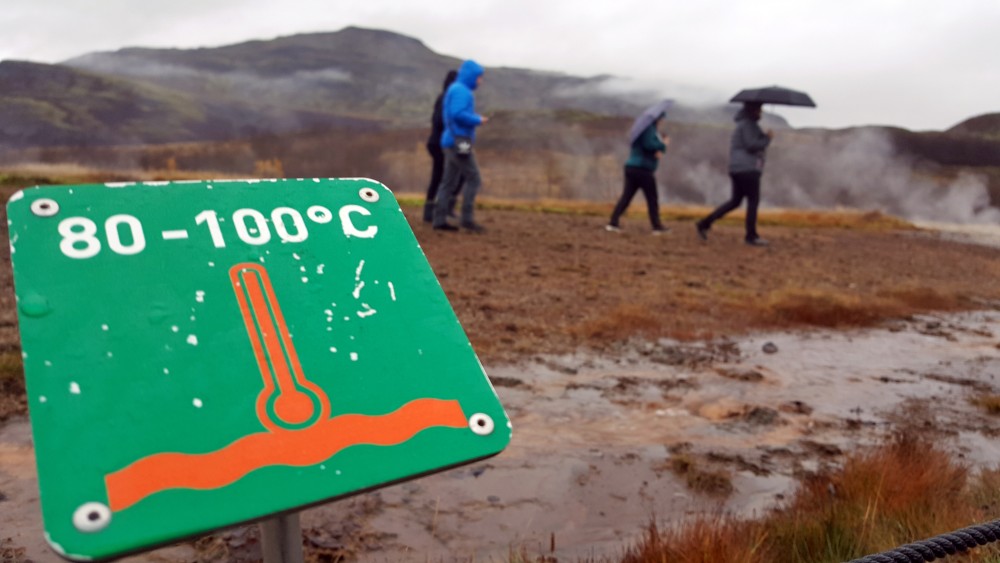 Предупреждение о возможном выходе кипятка на поверхность, которое эта группа туристов игнорирует. Фото: Томас Нильсен
Предупреждение о возможном выходе кипятка на поверхность, которое эта группа туристов игнорирует. Фото: Томас Нильсен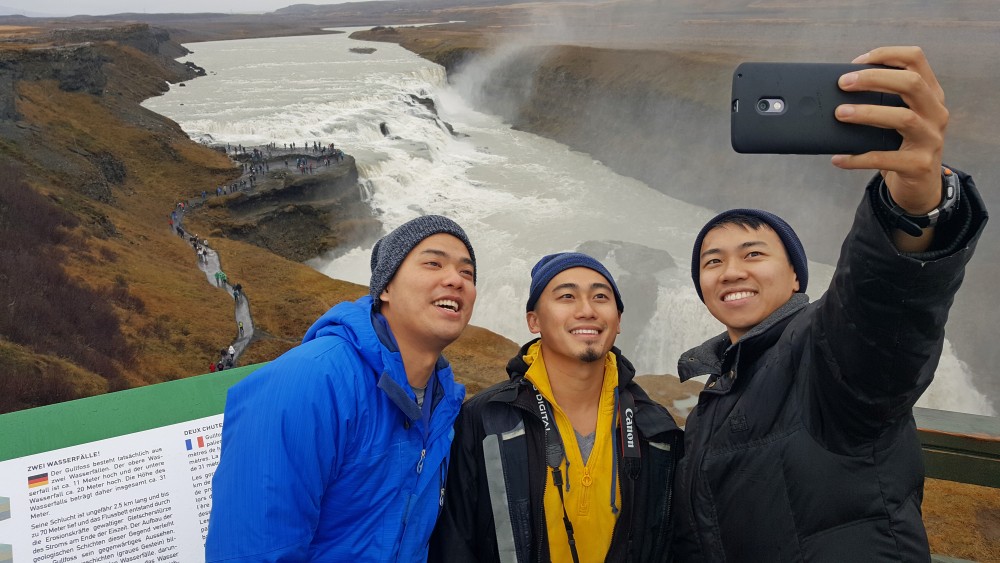 Селфи на водопаде Гюдльфосс. Фото: Томас Нильсен
Селфи на водопаде Гюдльфосс. Фото: Томас Нильсен

